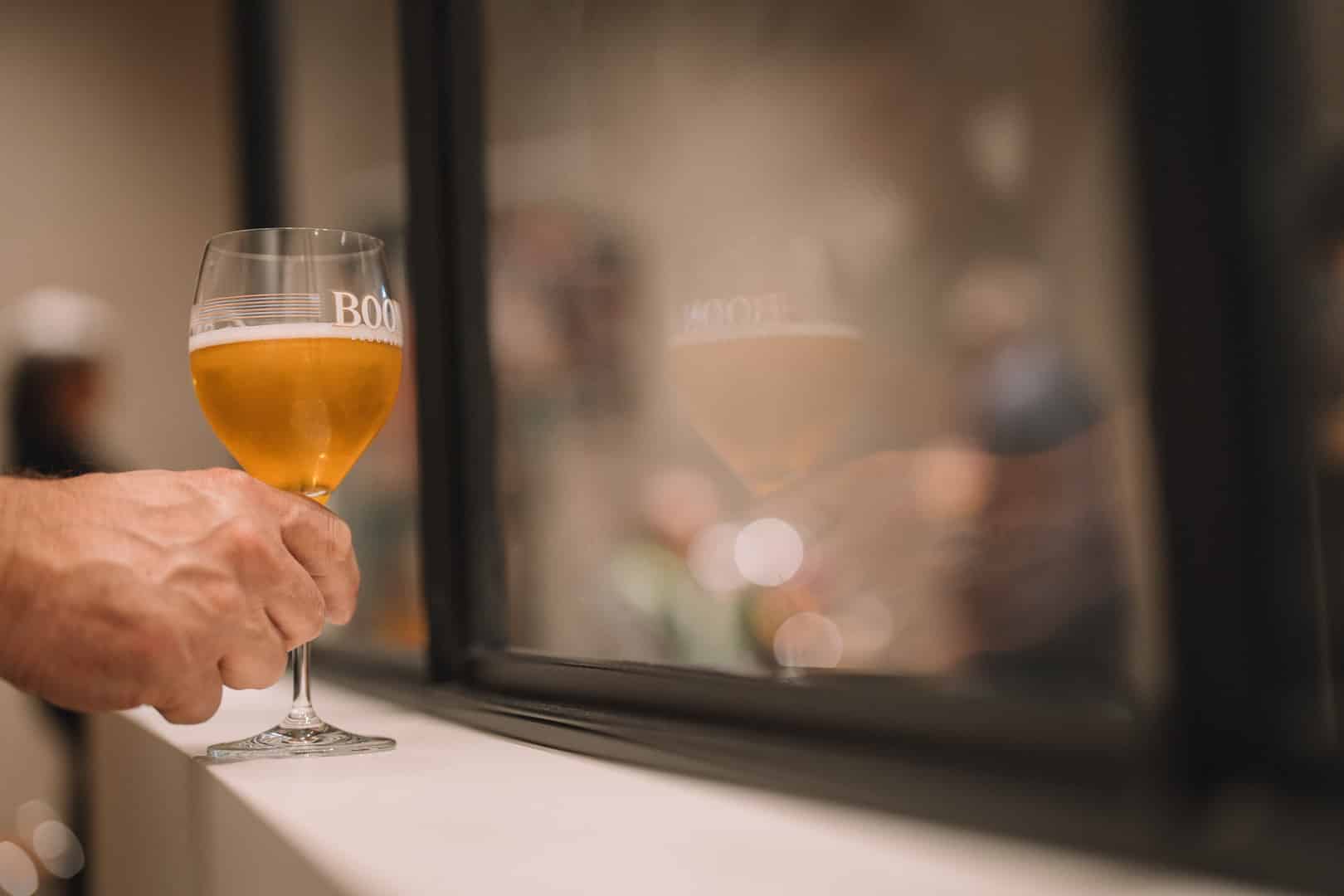Mariage Parfait is a beer that speaks to the legacy—and evolution—of Belgium’s Lambic culture: its foundation of quality as an exacting and relentless tutor; its creator’s decades-long focus on connecting the Lambic community and establishing legal protections for traditional versions of the style; its production as the result not of some mythical spirit that exists in a brewery’s cobweb-strung rafters, but of painstaking processes and unflagging attention.
Words by Claire Bullen
Photography by Cliff Lucas and Claire Bullen
Edited by Breandán Kearney
This editorially independent story has been supported by VISITFLANDERS as part of the “Game Changers” series.
I.
Decisions
The pickers came one after the other with their crates of cherries carried in from the blazing orchards. Fingers stained purple, wasp-stung, sweat leaking from the creases in their necks. Some carried five kilograms of fruit, some 10, the juice-fat cherries rattling against the wood.
With each new arrival the barrel-room doors were thrown open, shocking the stacked casks with a flash of heat and light. The temperature inside climbed from 25 to 30°C in no time at all. The pickers waited for their fruit to be weighed in the dim room; once the coins were pressed into their palms, they returned, blinking, to the sunstruck world outside.
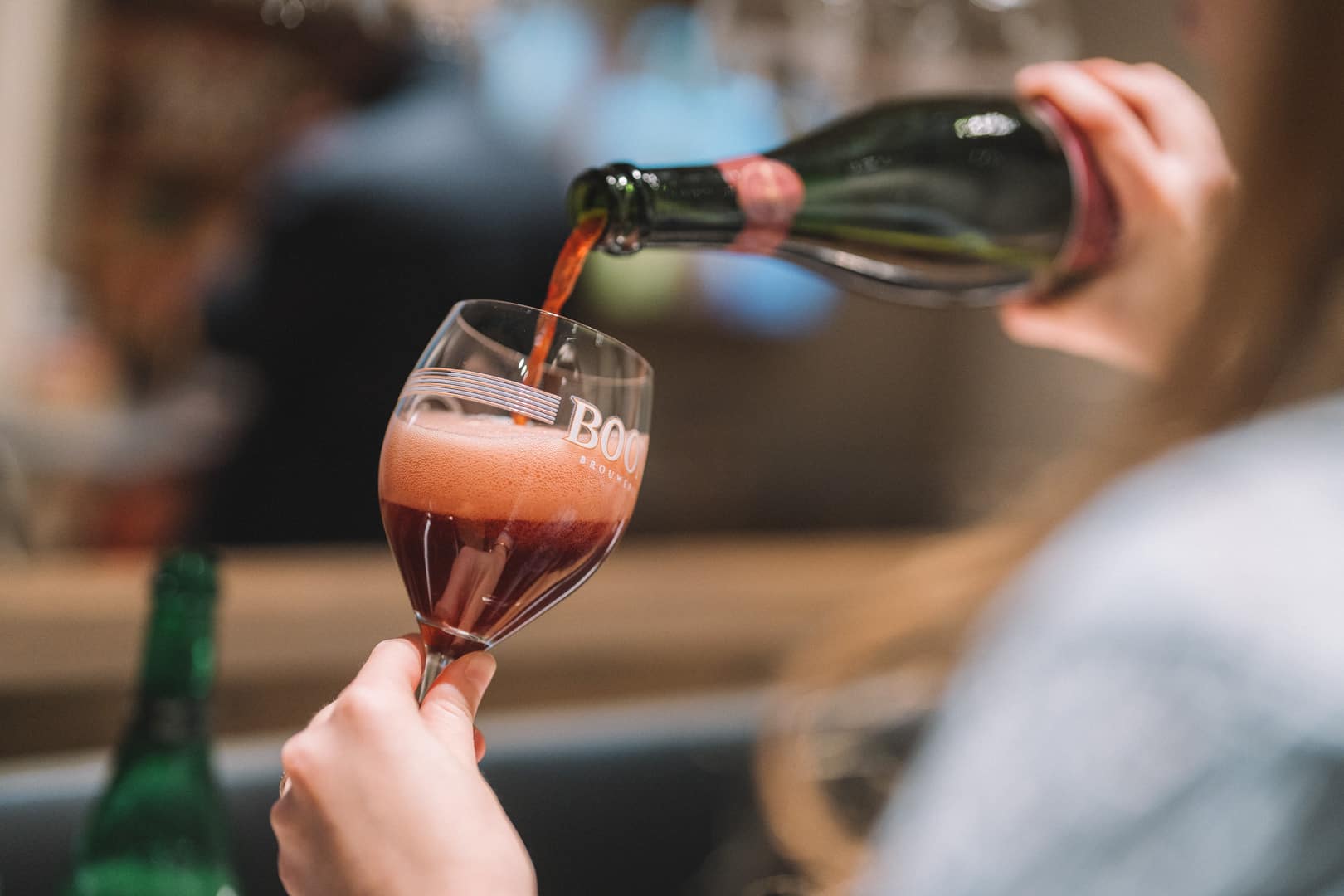
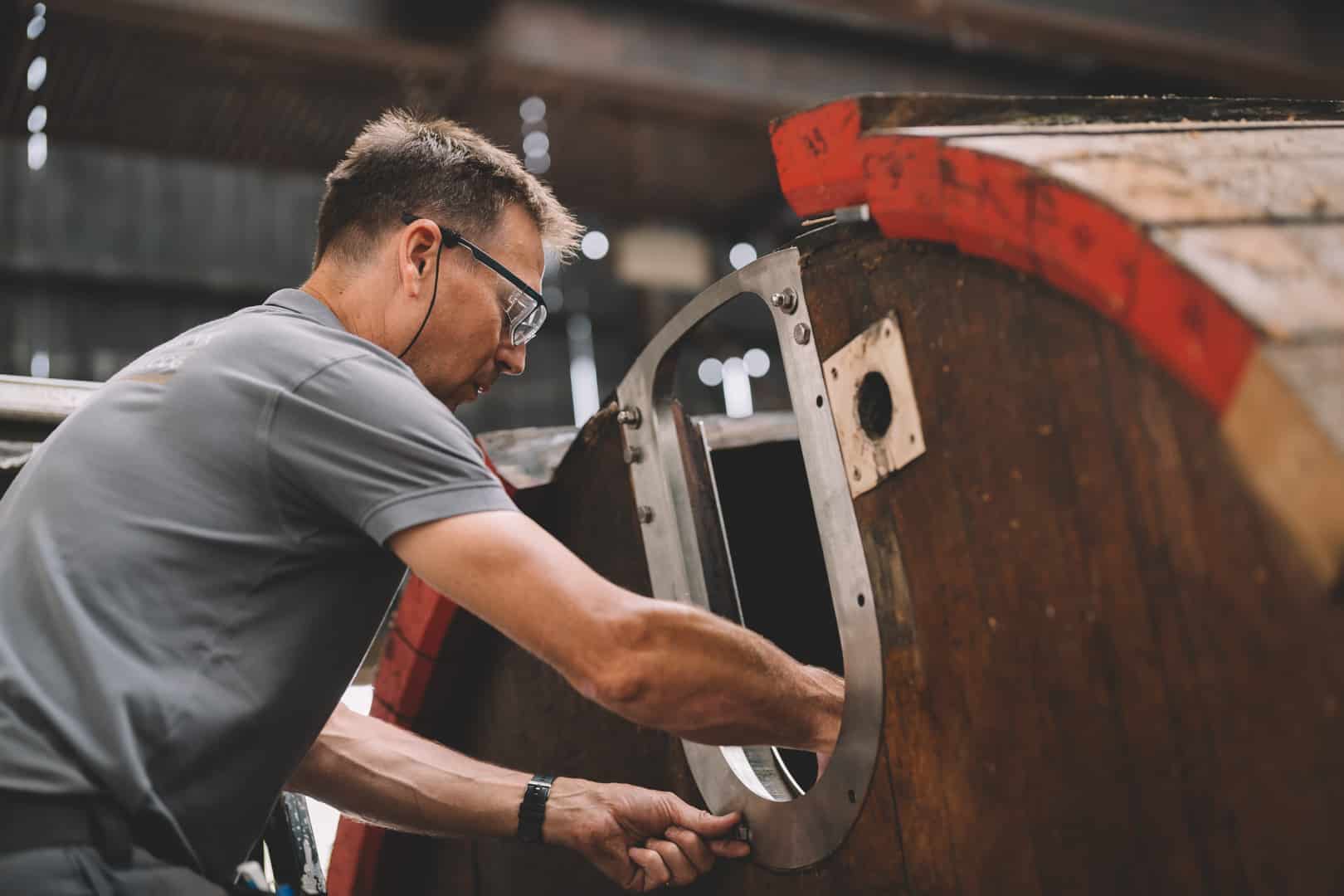
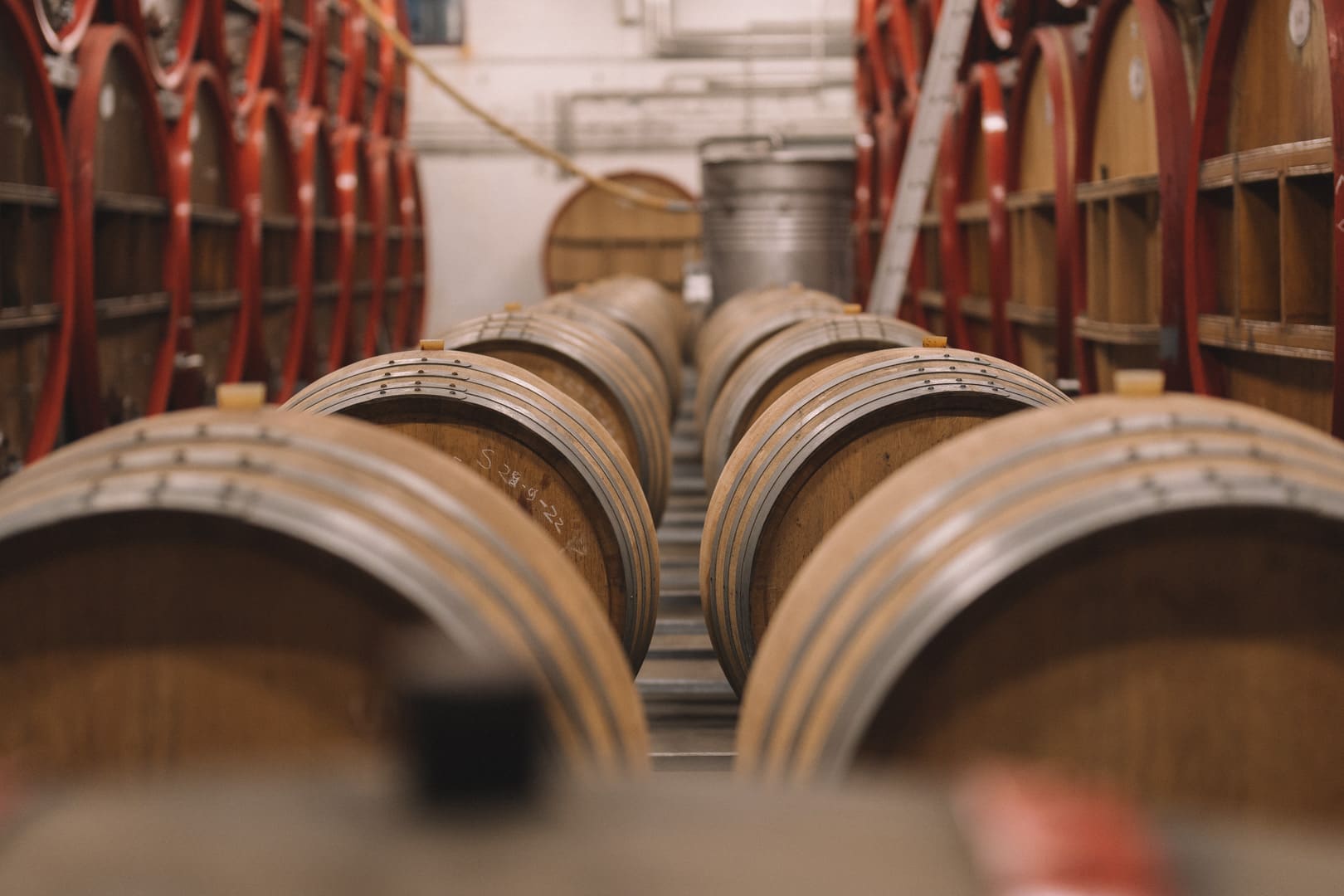

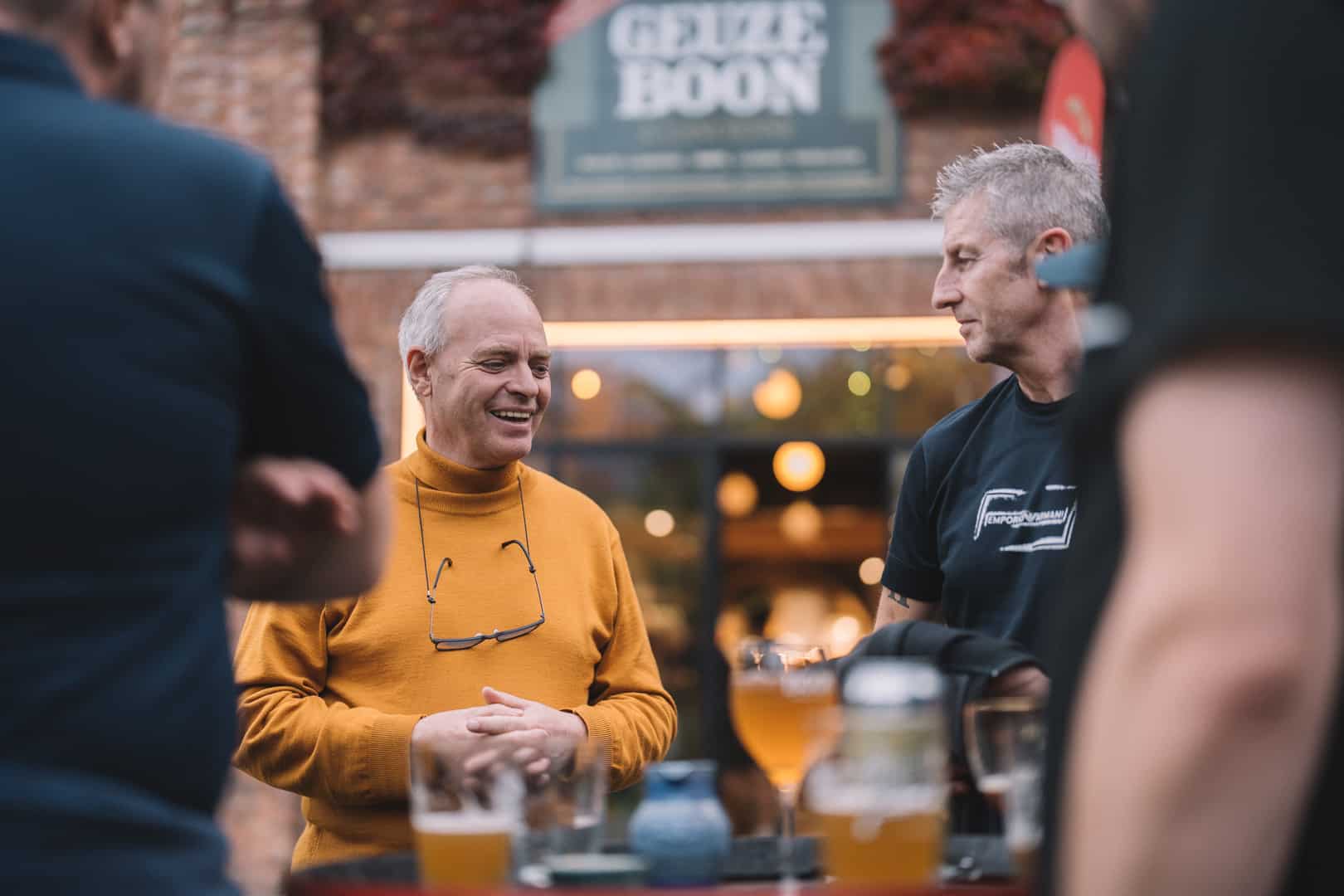
The cherries were thriving, but 1976 was not the ideal year to be making Kriek. That summer—one of the hottest and driest of the 20th century—lives on in the minds of those who remember it as an uninterrupted streak of sun that stretched on for months, first gloriously and then bewilderingly, and finally, as the reservoirs dried up and the grasses turned brown, fearfully.
In Lembeek, Belgium, Lambic blender René De Vits could do little to control the conditions of his cellar. It had thick walls, but no air conditioning, or even electricity. It took two weeks for De Vits and his apprentice and successor, Frank Boon, to hand-pack the casks of beer with the thousands of kilos of cherries that were brought to them. The battle against vinegar grew more complex with every boiling day. Clouds of fruit flies, who ferried acetic-acid-producing bacteria on their feet, were the enemy’s frontline emissaries.
It was then that Boon witnessed just how fine the brewer or blender’s attention needed to be—that making Lambic is not just producing beer, but is more like the stewardship of a living creature, feral and wild. Every small decision, every moment of mishandling, leaves its mark. Without the most even-handed control, it will run away from you.
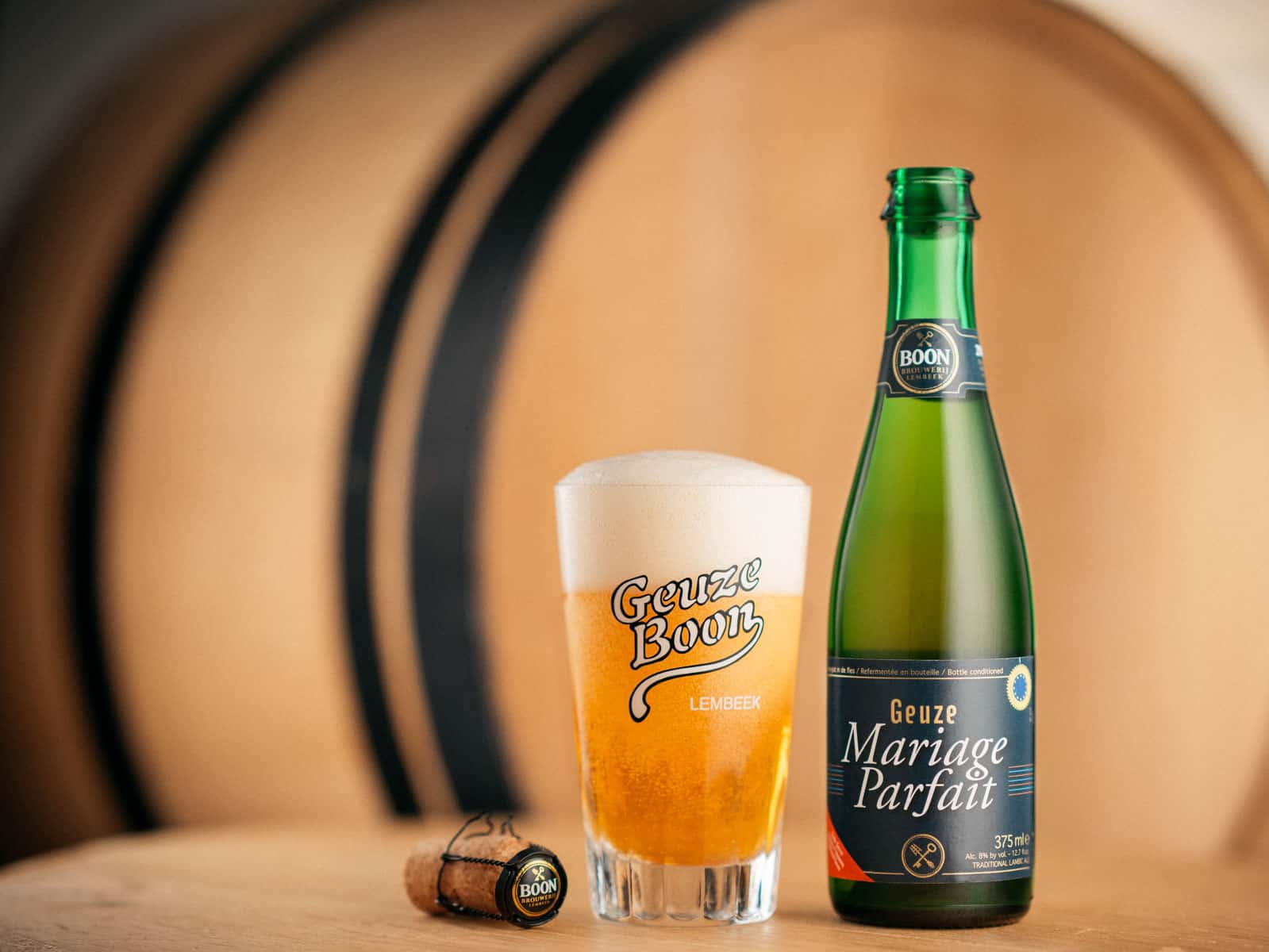
Two years before the man who would eventually be described by various media and trade outlets as “the saviour of Lambic” blended his inaugural batch of Mariage Parfait; 10 years before he moved his young brewery to a location straddling the Zenne River; and 21 years before he led efforts to certify Geuze as a geographically protected product, Frank Boon stood at a crossroads. He knew that the production of Lambic was a dying tradition, that most Lambic on the market was marred by faults and borderline undrinkable. He knew that De Vits’ blendery was an island, part of an ever-shrinking archipelago of producers who made Lambic of quality. Decline scented the air and burrowed into the wood.
But if failure was all but assured for anyone learning the ways and makings of Lambic, what was there to lose in trying anyway?
II.
Zenne
More than four decades later, it is once again cherry-picking season, and Europe is held in the velvet crush of another record-breaking summer. The sun breeds dust wherever its gaze lands on Lembeek. Located just south of the city of Halle, and some 10 miles from Brussels, the village sits on the border between French-speaking Wallonia and Dutch-speaking Flanders. When it first appears along the N6, an arterial road that links Brussels with France, it does so as a flickering mirage of car dealers and industrial lots and building sites, a place without placeness. Unseen hands pull shutters over the windows of the yellowed houses, and the occasional 18-wheeler thundering past only emphasises the prevailing stillness.
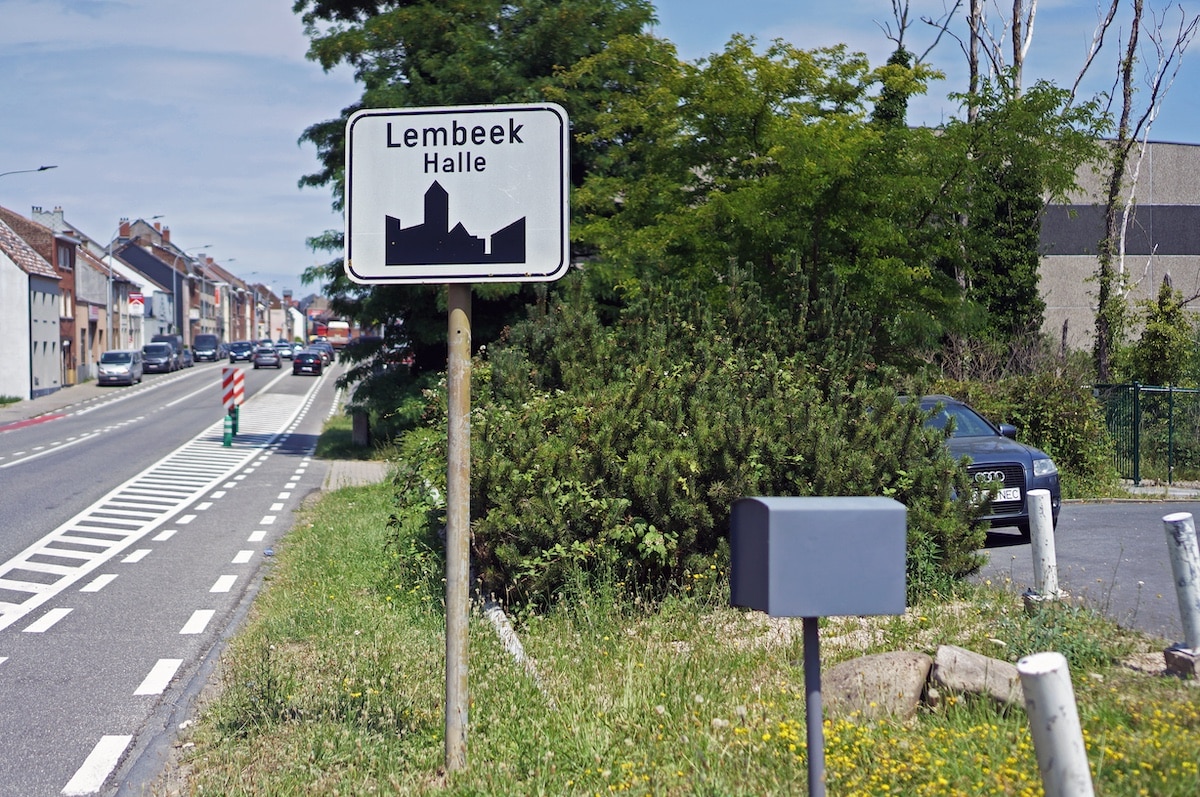
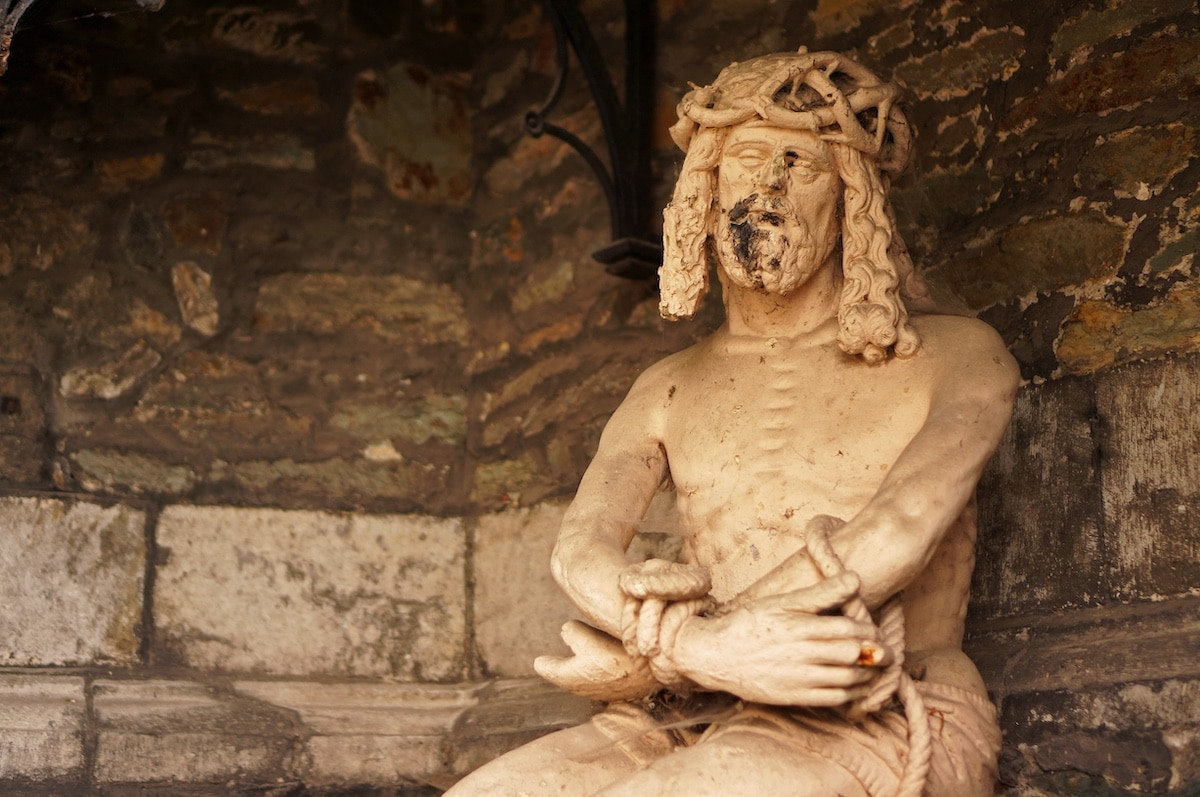
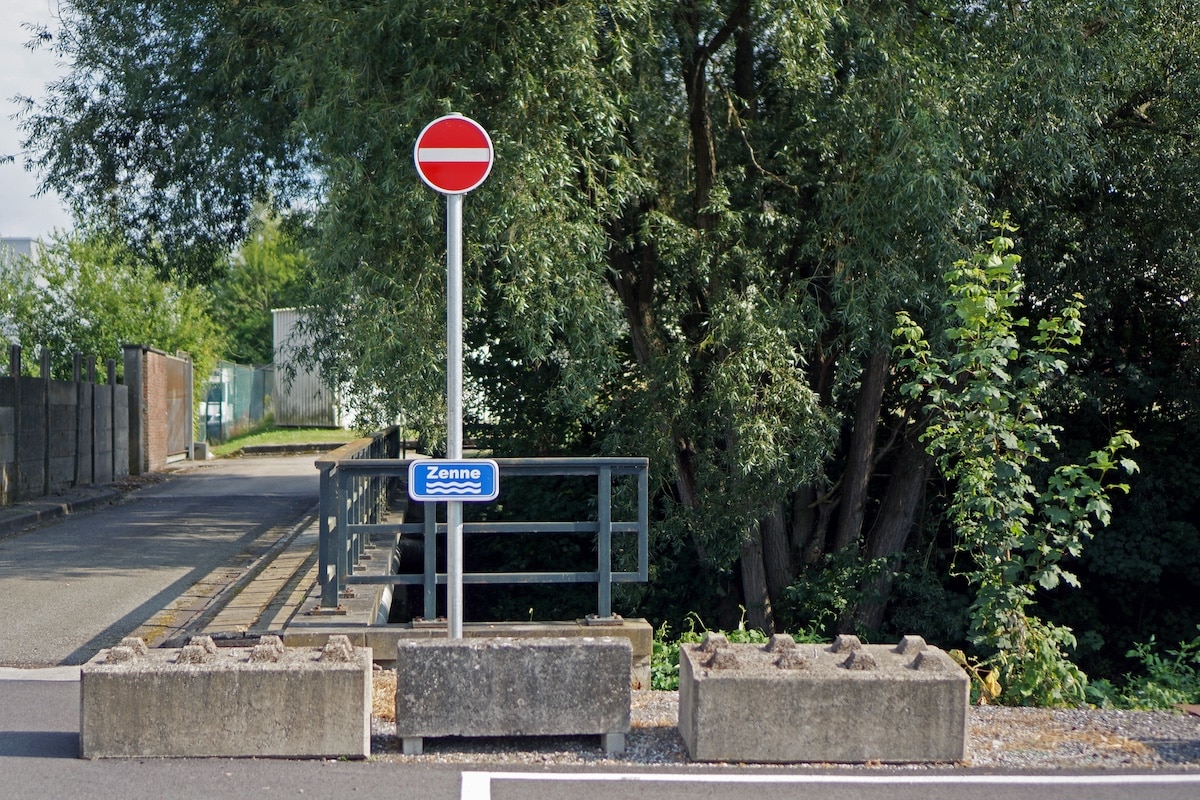
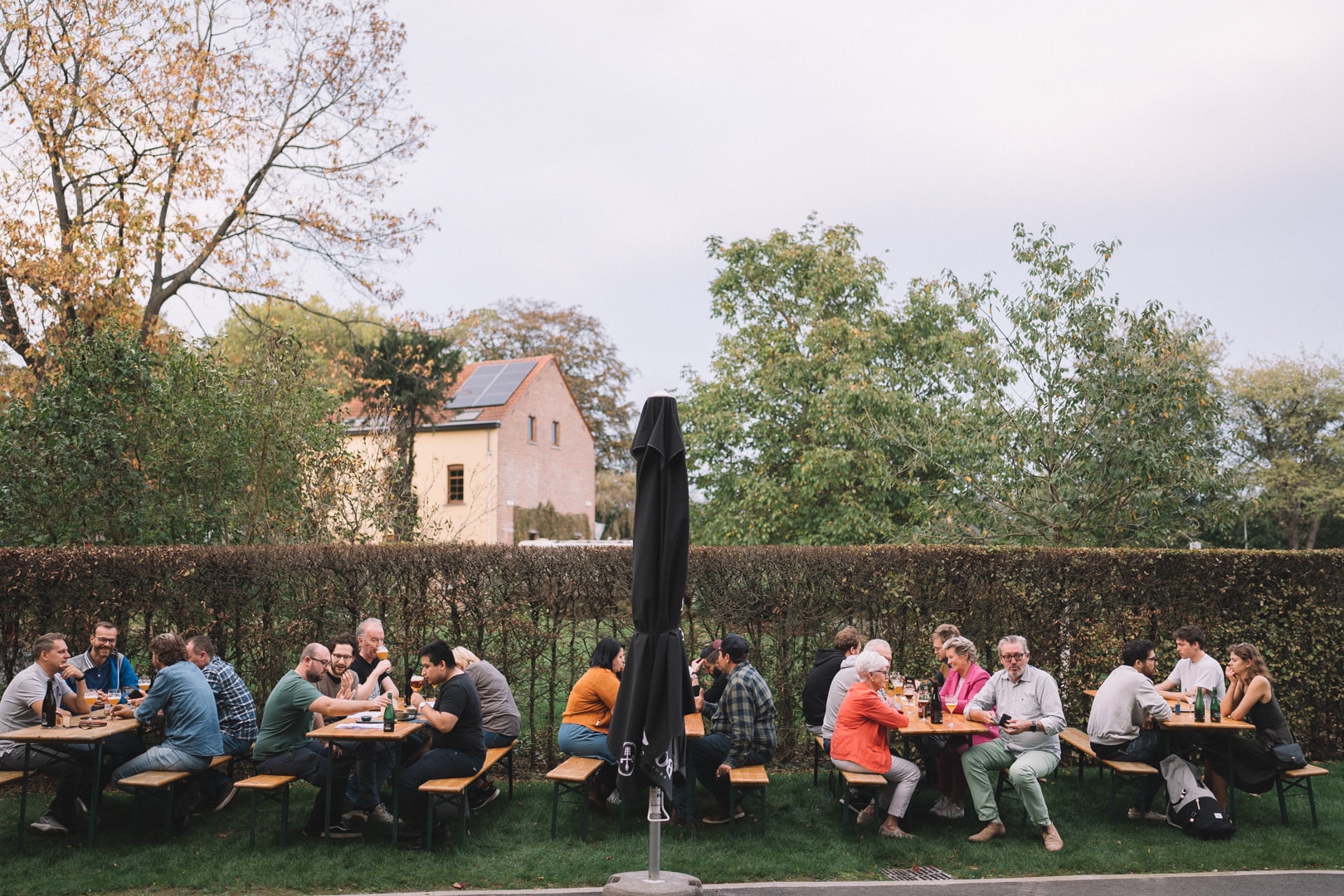
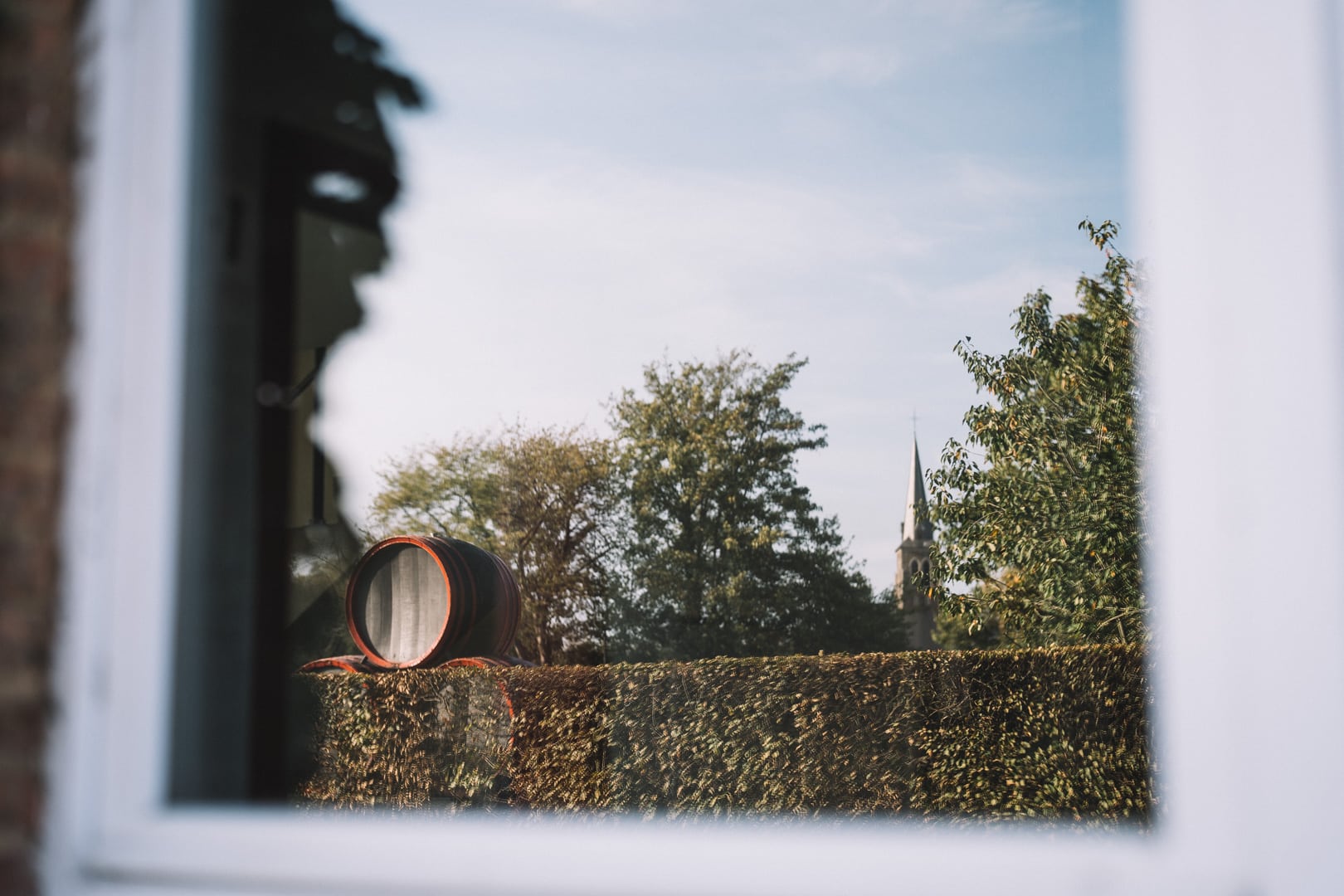
It is only after taking the underpass beneath the train tracks and continuing on foot down residential streets that Lembeek’s small cobblestone centre appears, shadowed by the bell tower of Sint-Veronuskerk. Sweat trickles from underneath the helmets of the Lycra-clad cyclists who have biked in from elsewhere to eat burgers and vols-au-vent at t’ Dagelijks Genot, an all-day restaurant, and it shines the brows of the afternoon drinkers who sit under the Brouwerij Boon-branded umbrellas of Café De Mustang and flanking the entrance of Café De Kring. Outside, the town sport is taking in this small human circus. Inside, it is the Tour de France, shown on small televisions in high corners.
Just past De Kring, and around Sint-Veronuskerk and its statue of Jesus in ecstatic pain, is the overgrown green of the Kasteelpark, named for a castle that was torn down in 1972. And hugging the park’s margins is the dark ribbon of the Zenne River.
In Brussels, the Zenne, or Senne, is largely entombed under concrete, much like the Bièvre River in Paris, or the lost rivers of London. The waterway was once cholera-poisoned, and its burial in the late 1860s was hailed as a feat of civil engineering. But here, the river winds duskily through the undergrowth, lush vegetation shading its waters, trailing reeds visible through its surface.
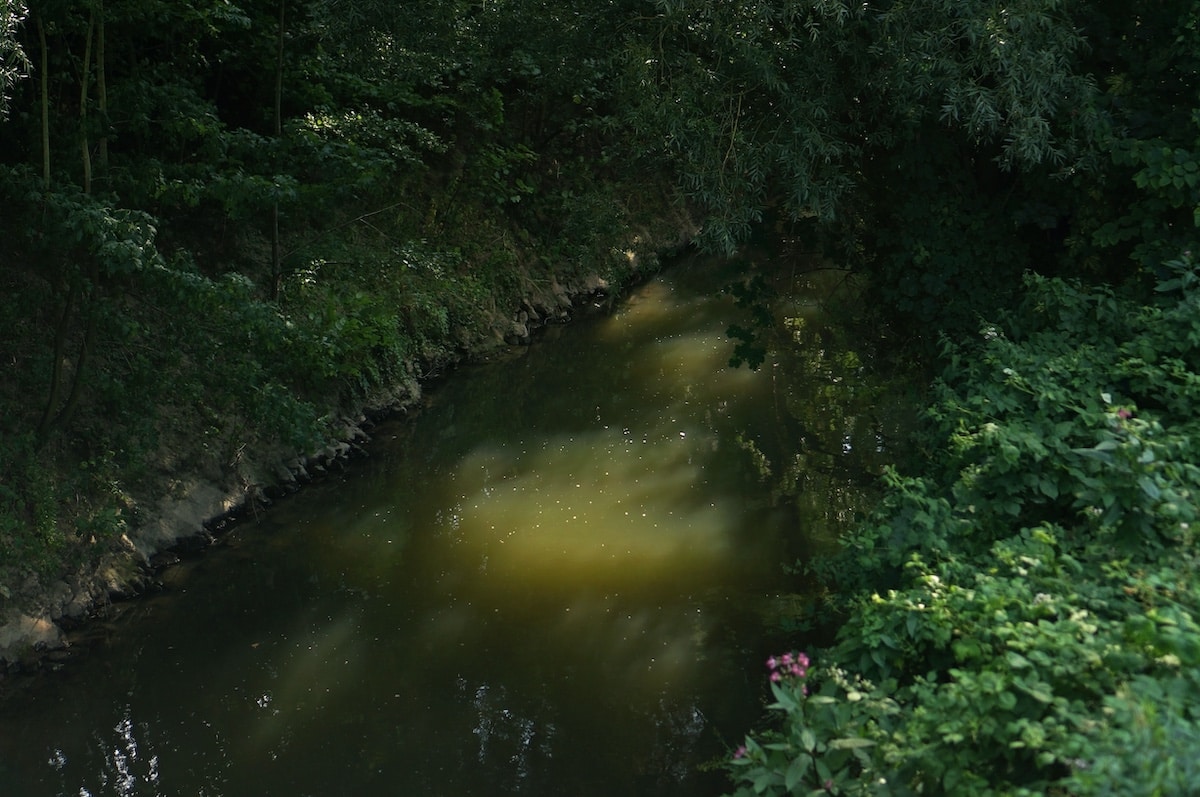
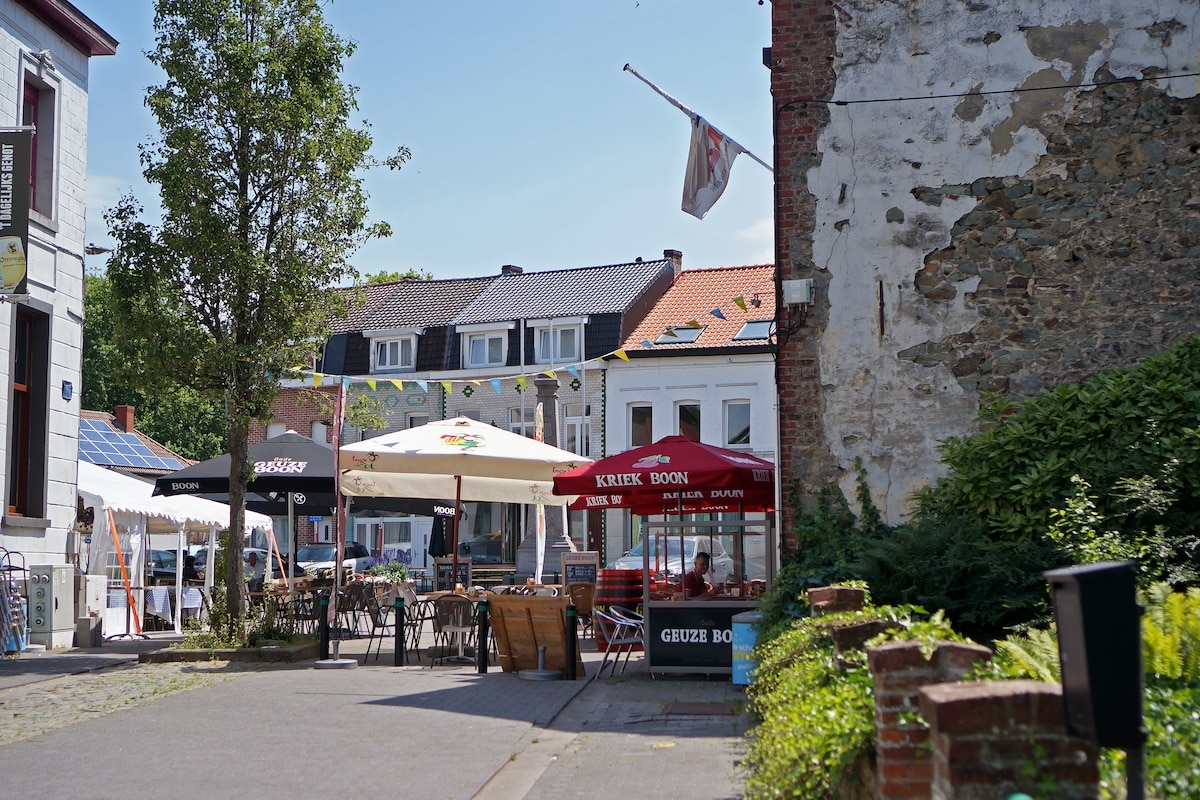
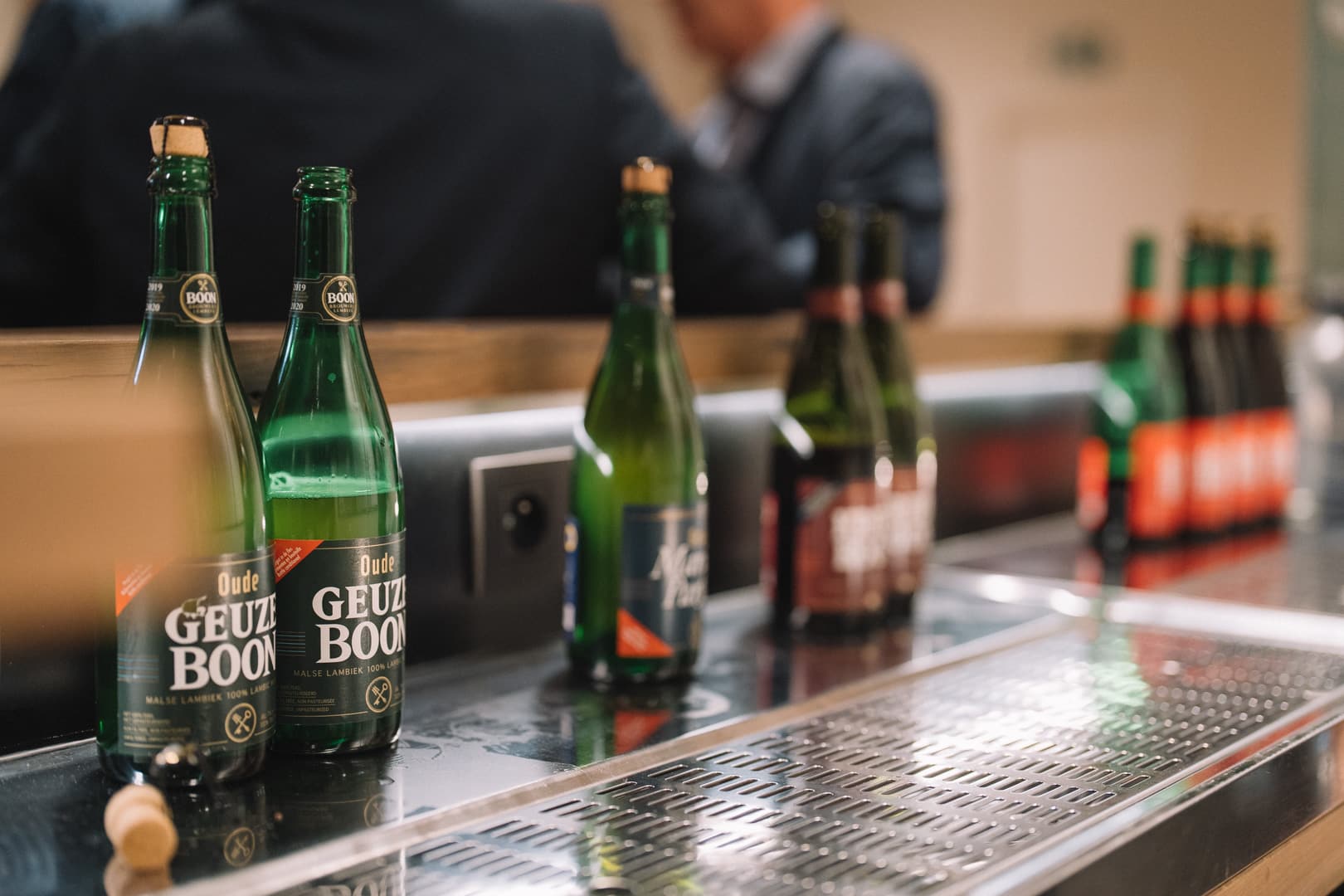

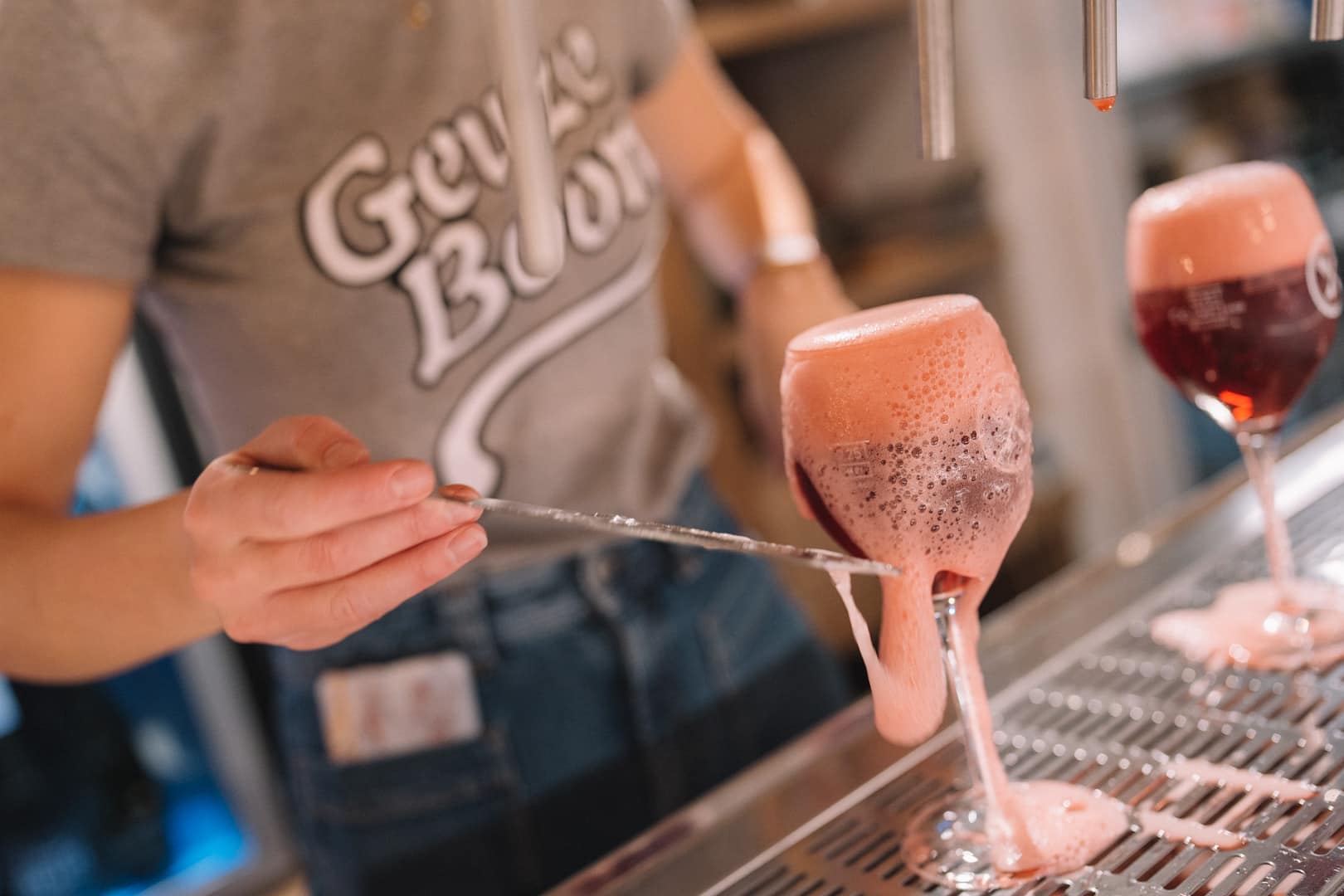
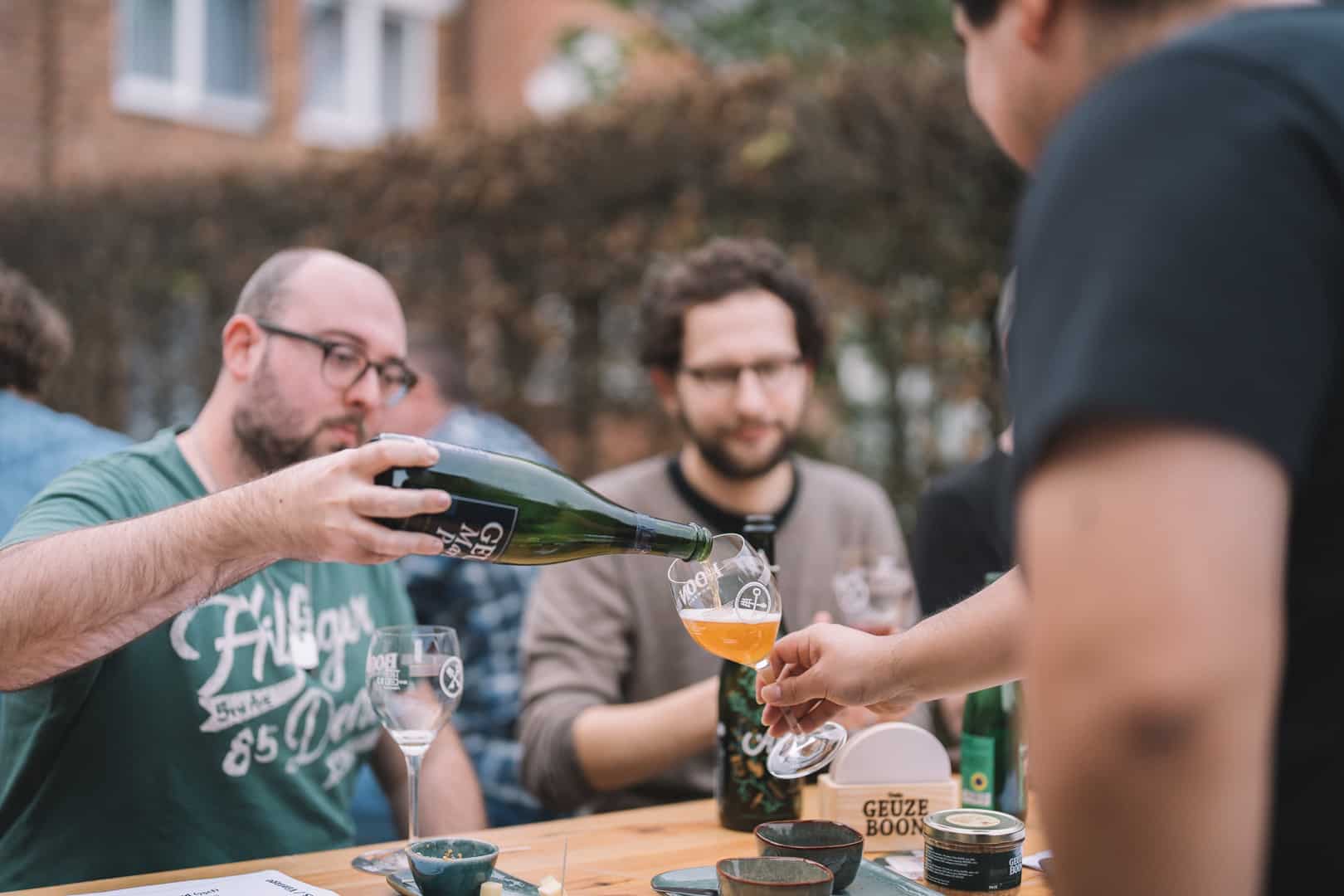
Drinkers of Lambic evoke “Zenne Valley” like some kind of spell. “For many centuries, it was thought there was something magical in the valley’s air, a benevolent miasma created by the Zenne that enabled the brewers who settled its banks to brew Lambic and its spontaneously-fermented precursors,” writes Eoghan Walsh in a piece on Brussels Beer City. The river is freighted with so much mythology that it’s curious to see it up close—like stumbling upon a unicorn and finding that it really is mostly just a horse.
From the park, the Zenne flows around the village, under bridges, and approaches Brouwerij Boon, where it meets the gaze of Frank Boon. He has paused for a moment on a small concrete bridge to regard it, to watch as ducks and moorhens paddle against the current. In its progression, the river bisects the brewery, one bank home to the brewhouse, coolship room, visitor centre, taproom, woodshop for foeder repairs, and an enormous warehouse of foeders and barrels; the other a rented warehouse space where additional foeders are stored. The brewery has occupied this site on the Zenne’s banks since 1986, and, true to that miasmic theory, the Boon family credits this proximity with some special vitality.
“Here the yeast activity is very strong,” Jos Boon tells me when we sit down to chat. Jos, 36, has taken over production from his father in recent years, and he gestures in the direction of the river while echoing a line on Boon’s website: “The air of the Zenne Valley has an important effect on the Lambics’ spontaneous fermentation process.”
The brewery transfers a small portion of each batch of wort to its coolship, where it is spontaneously inoculated with that local microflora, before being returned to the rest of the batch to begin fermentation. Some may see this practice as controversial, a shortcut that borders on a betrayal of Lambic’s tradition. But both Jos and his father claim it is unnecessary to inoculate the whole batch when the yeast is as vital as it is. All you need to do, they say, is look at the liquid under a microscope to see there are millions of yeast cells swimming in each millilitre.
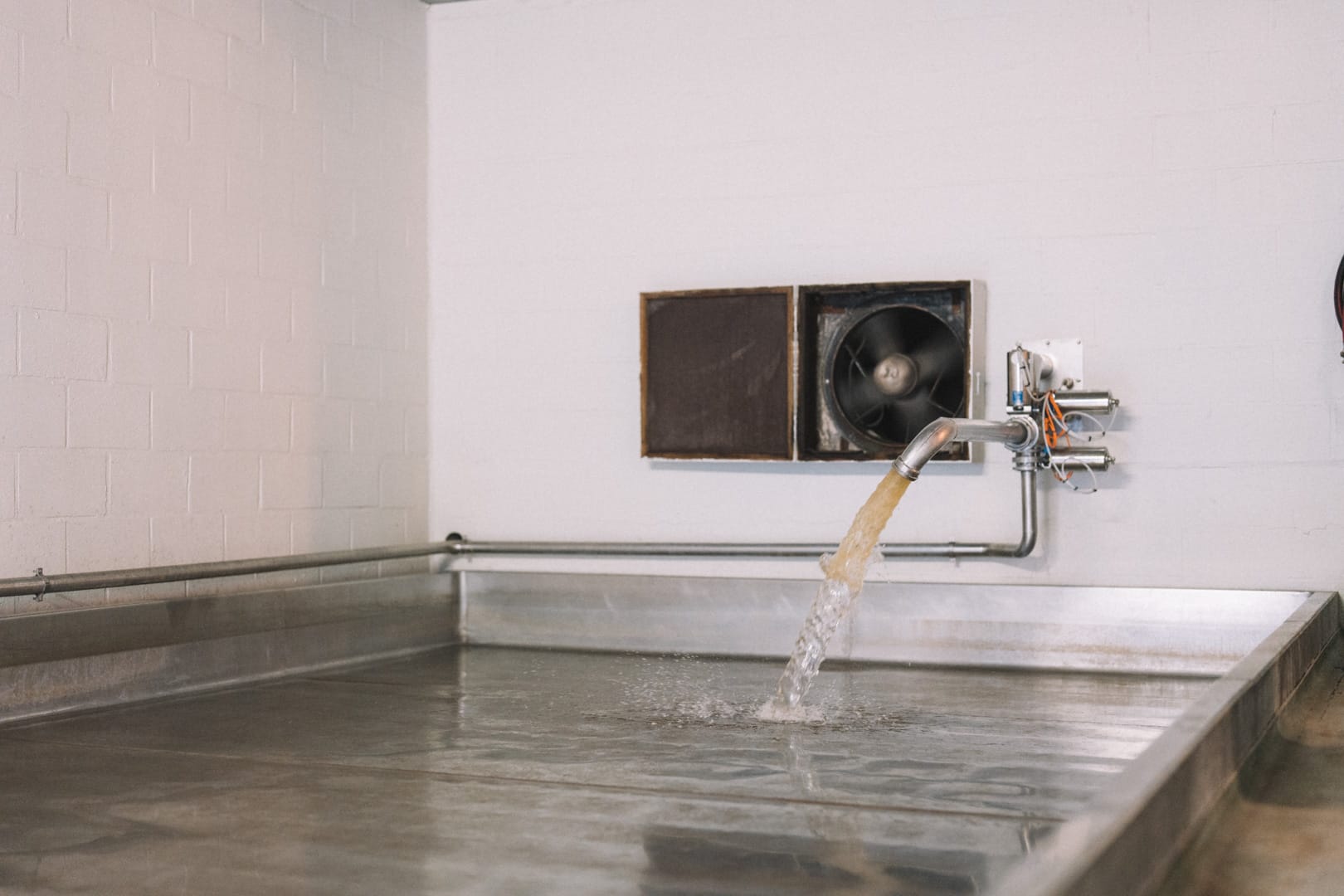
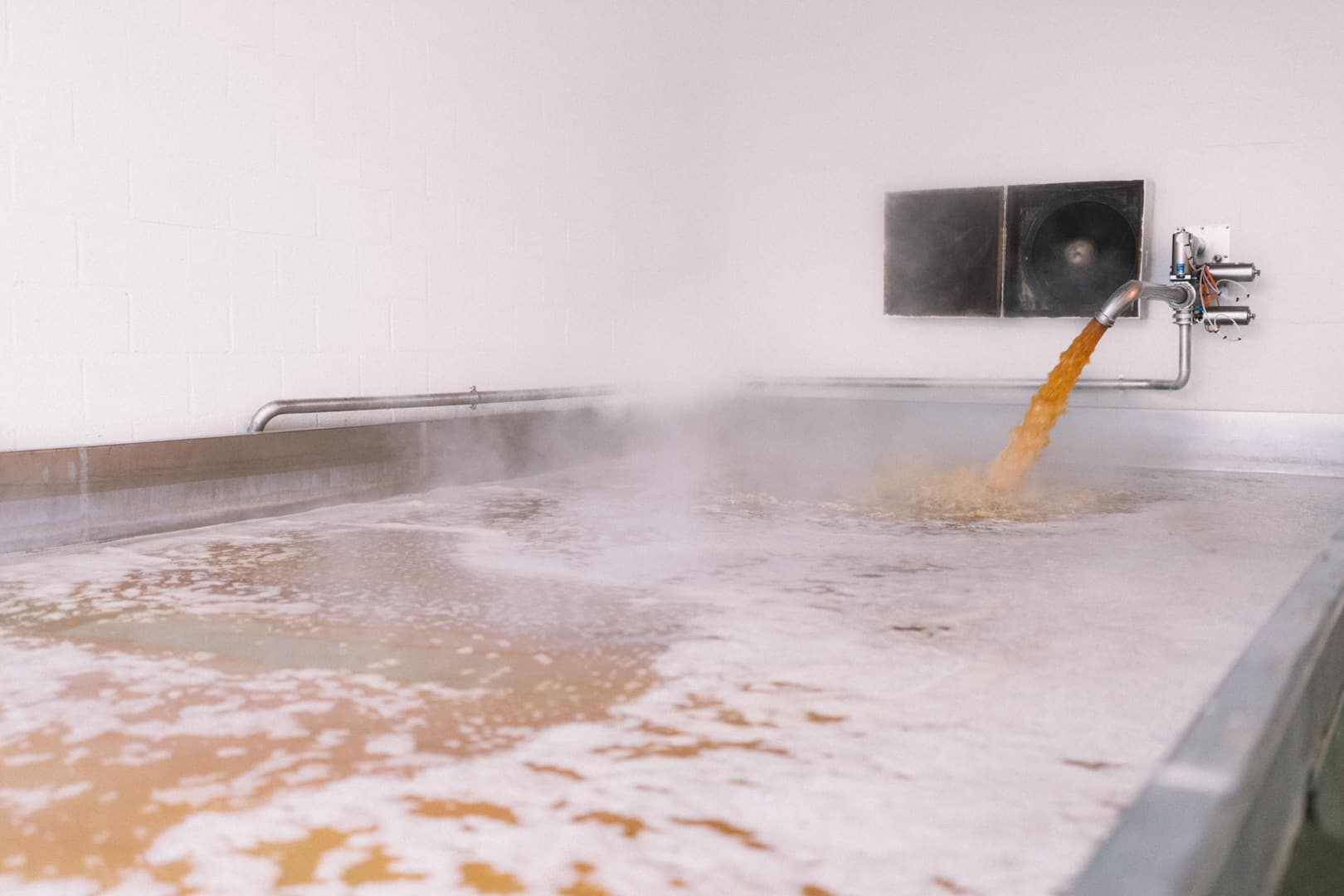
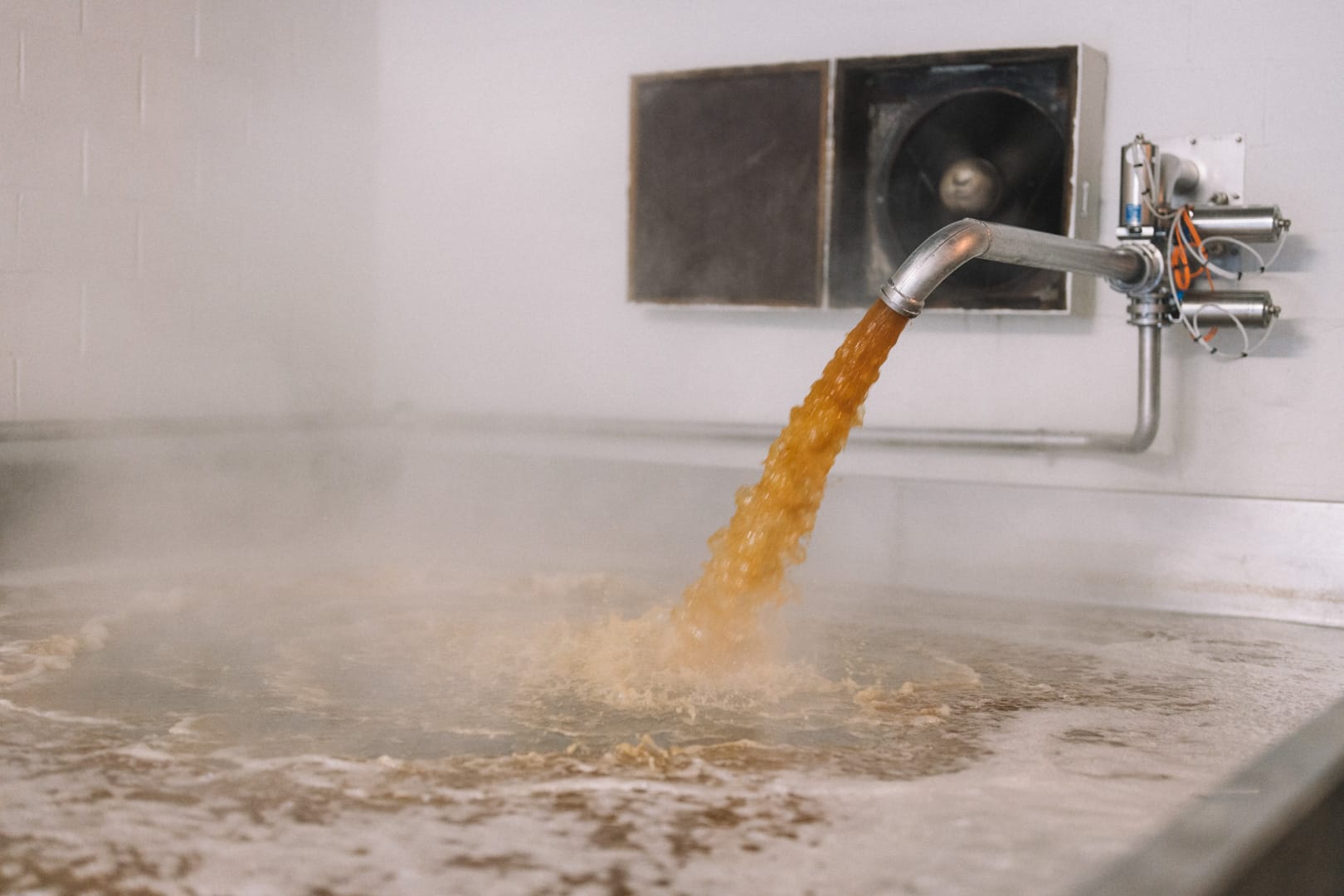
Recently, critics and historians have questioned some of Lambic’s prevailing narratives, including the notion that there is anything special in the specific microbes that exist in proximity to the Zenne. Aren’t there wild yeasts and bacteria sufficient for making beer almost everywhere?
While Brouwerij Boon indulges in its small romance, this debate encapsulates something essential in the brewery’s bearing—that for all it is invested in the lore of Lambic, it is also prevailingly pragmatic. For Frank Boon, Lambic is not the product of some mythical spirit that exists in a brewery’s cobweb-strung rafters, but rather the result of painstaking processes and unflagging attention.
Lambic may be born of microflora, but it survives because of 10,000 human decisions. If any Lambic or Geuze is ever a masterpiece, it is because of craftsmanship—not the occasional genius of accident.
III.
Opportunity
Frank Boon was born in 1954 in Leuven. His mother was a food journalist who translated cookbooks, and Boon describes his childhood home as “half a restaurant,” where there was always food and wine and beer to try. Though no one in his immediate family was directly employed in the beer industry, Boon’s grandmother was the daughter of a brewer, and her brother ran a brewery in Merchtem, which produced top-fermented beers. “I knew the brewery, and the smells, and the job from my grand-uncle,” Boon says.
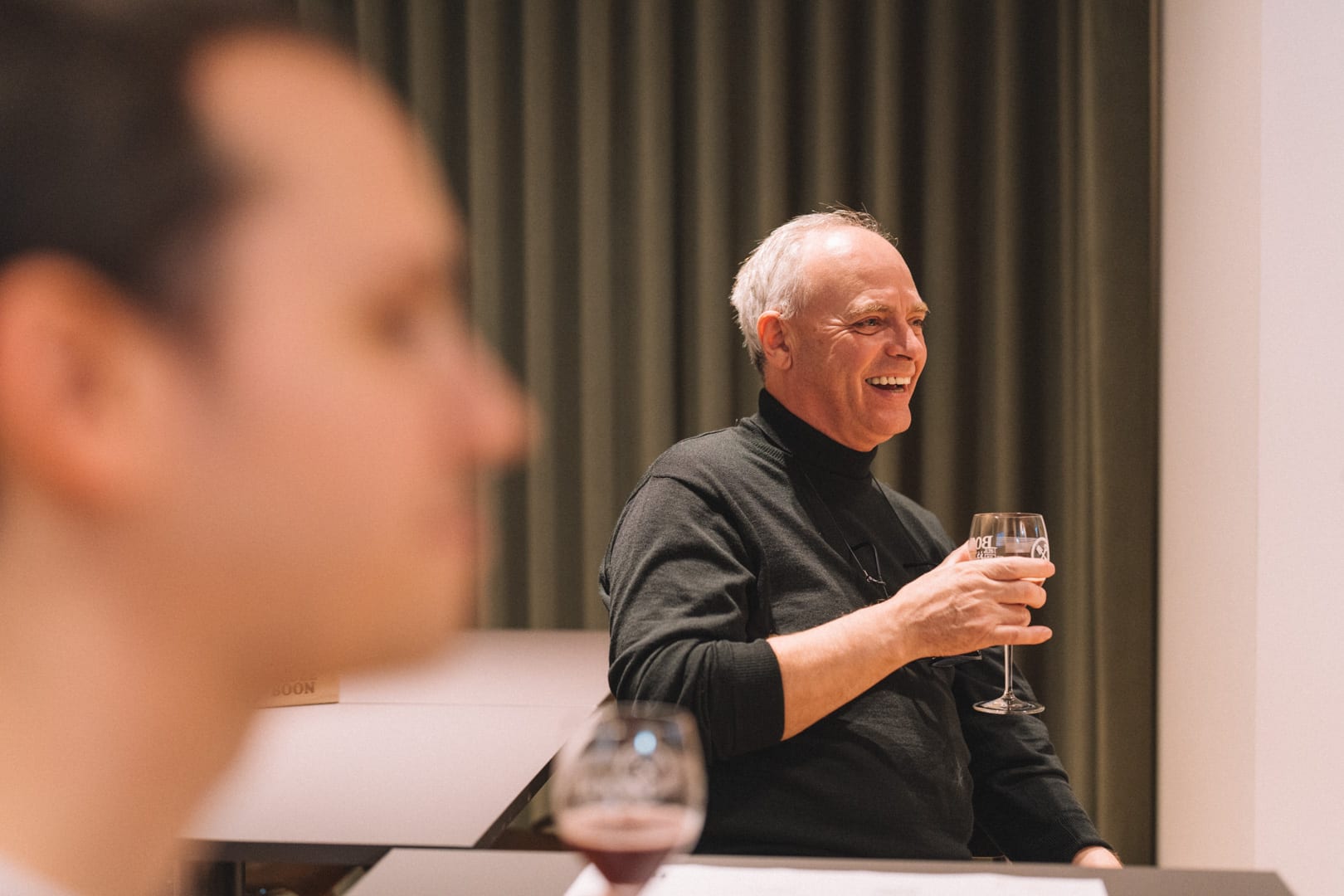
If you believe in fate, it is hard not to see destiny’s hand in the fact that Boon was born in the midst of Lambic’s long, slow decline. At Lambic’s high-water mark, before World War I, more than 1 million hectolitres were brewed each year in Brussels and the Pajottenland. But by the middle of the 20th century, many Lambic breweries had closed for good, undone by consolidation, by the era’s wars and geopolitical shocks, and by lager’s ascendance. “There were a lot of breweries in the beginning of the 1960s—most of them closed [from] 1968 to 1970, that period,” says Boon. “That’s what happens in family[-owned breweries]. There is no profit, they have losses, there is no [successor].”
By the time he was a teenager, Boon had cultivated a growing interest in Lambic and Geuze. Breweries were closing all around him, and beer quality was always an issue. And so he made regular trips south to Lembeek, just to buy beers from René De Vits, whom Boon and his friends considered the finest blender in the region. Later, after Boon’s family relocated to Halle when he was 19, he started spending more time in De Vits’ company.
If not united by their appreciation for fine beer, their friendship would have been incongruous. Boon was a serious-minded adolescent at the beginning of his career; De Vits behaved, in Boon’s words, as if time had stopped in the 1920s. He lived with his unmarried sister, Jeanne, who ran the Caveau van Jeanne, a café and shop adjacent to his blending facilities. De Vits, too, never married: His father said he must support his sister rather than leave home, which meant breaking up with his girlfriend and resigning himself to a more solitary life. “He told me, ‘Economically I’m a happy man, but on the family side, it’s not so fantastic for me, I’m not so happy,’” Boon says.
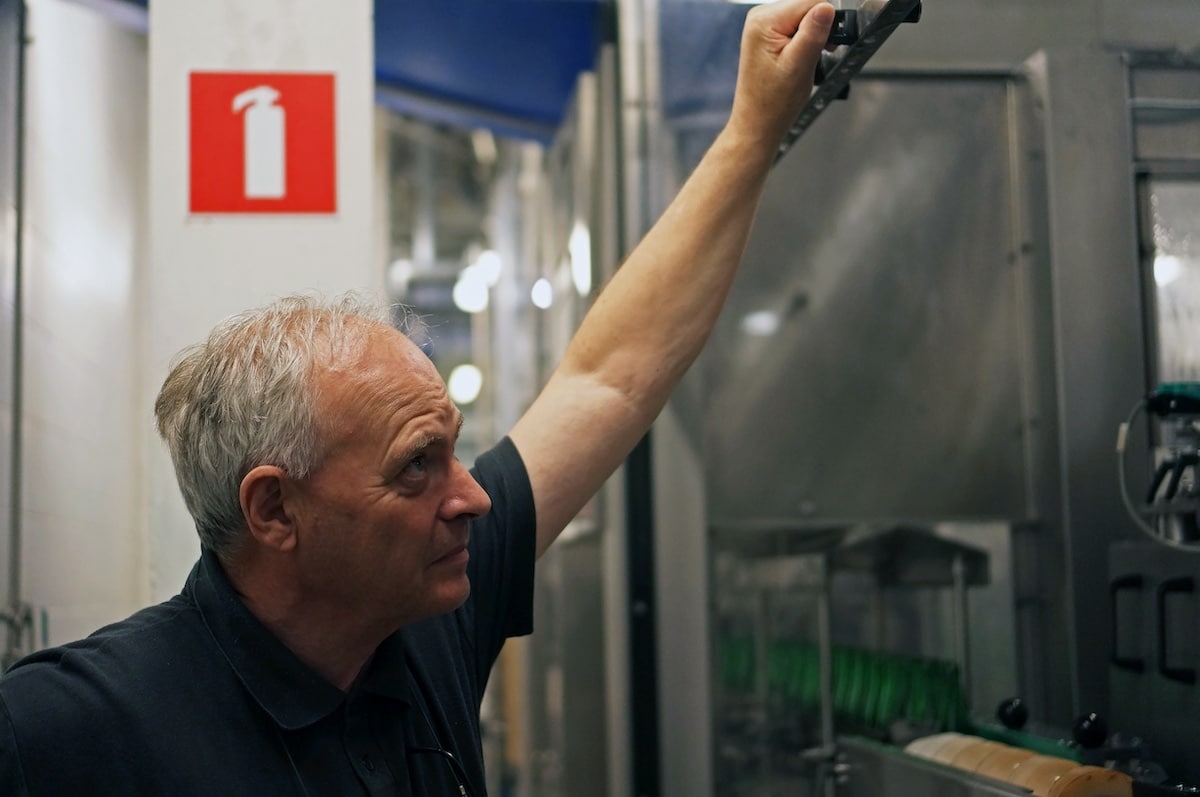
In the void where romantic love might have been, fervour grew. “What I learned from René De Vits, there was so much devotion to his production—as he had no wife and children to take his time—he was 100% obsessive with his product,” Boon recalls. “Cleaning his casks, it was crazy—he went inside his casks, cleaned them with brushes, with knives […] and then he told me how you could use an old bottle and break the bottle and use the shard to scrape inside if there was some yeast left. So he was so meticulous. He was so detailed. But the result was that […] there weren’t flaws in his beer. The quality was so high.”
This was the first lesson that Boon learned from De Vits: When it comes to making Lambic, no detail is too small to overlook; no moment of care and attention will ever be wasted. “A brewery is like a monastery—you’re born in it, when you live in it it’s a 24/7 job, you’re used to it and it’s a way of life,” says Boon. “I think it’s not a coincidence monks are making beer.”
But even monks have to hang up their brewing paddles sometime. By the mid 1970s, De Vits had confided to Boon that he, too, would soon look to close his brewery. He had no successor and no clear plan for the future; he was ageing, and the physicality of the job was becoming too much to bear. Boon received this news first as a punch in the gut, and then as a stirring of opportunity. Why should De Vits close when he had the best Geuze? What if something could be done to preserve his legacy?
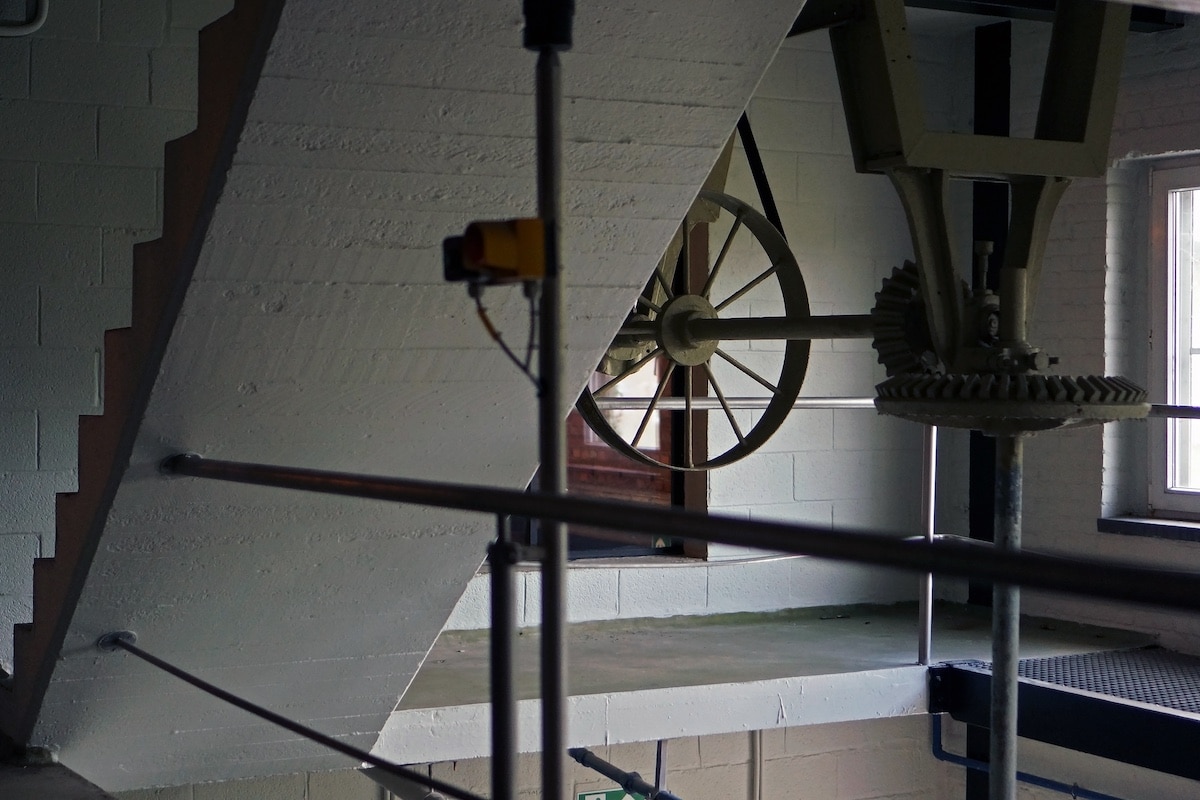
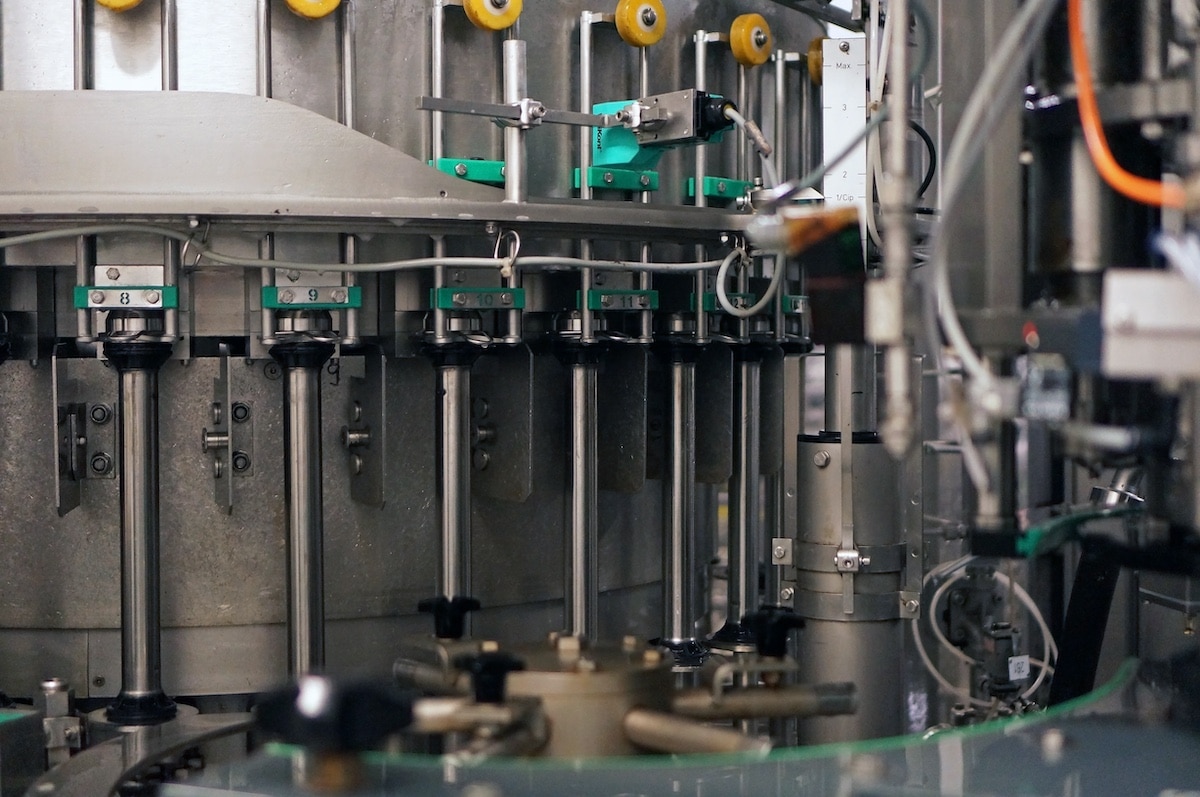
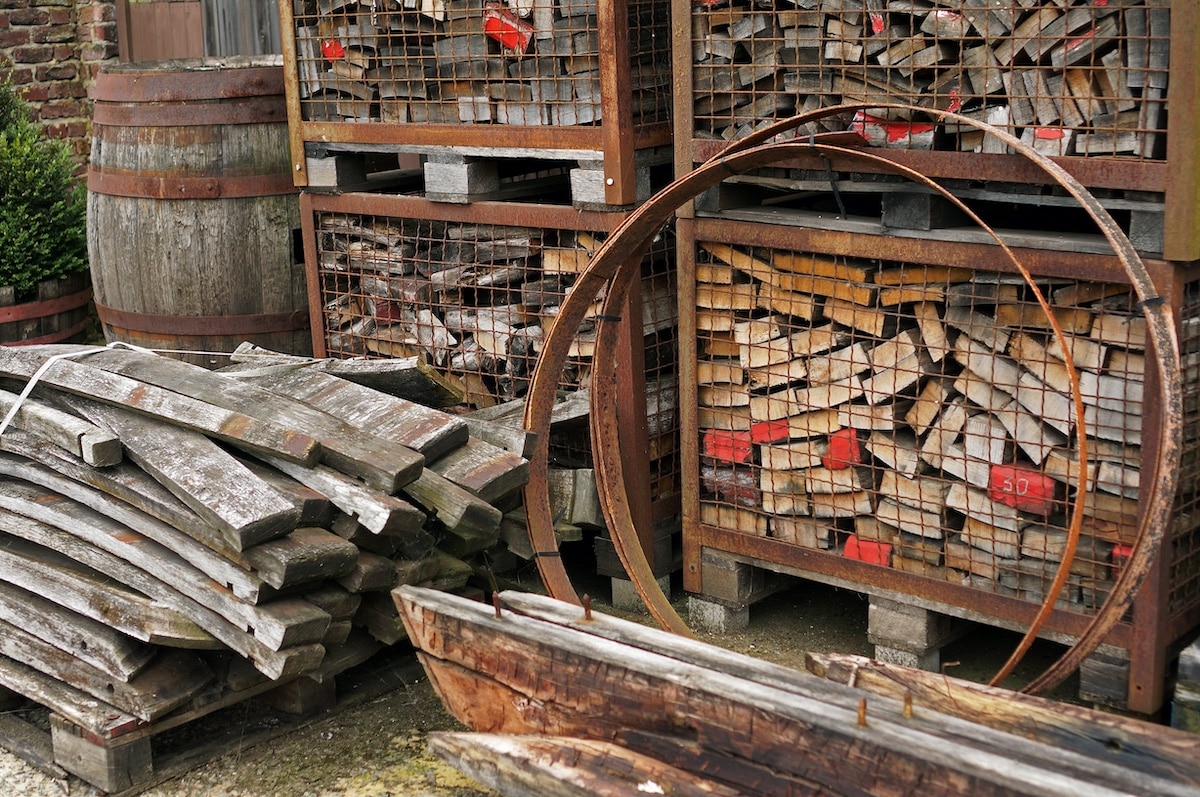
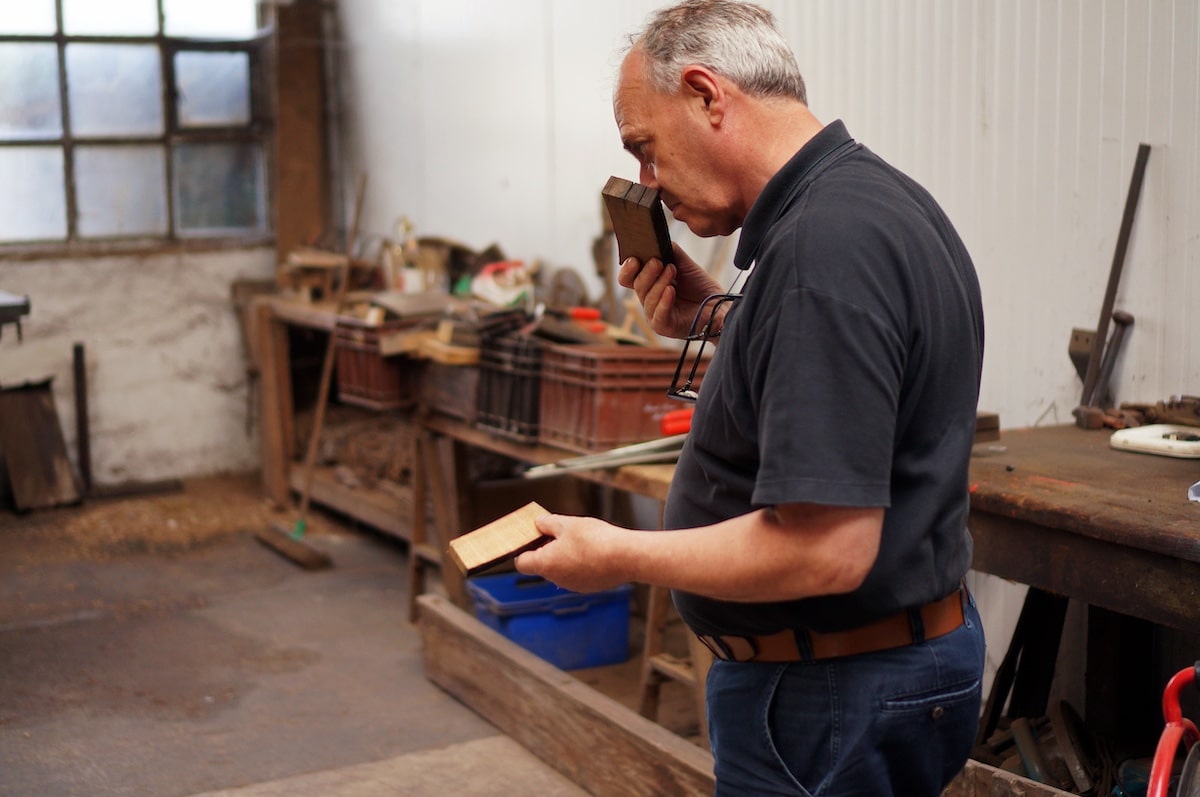
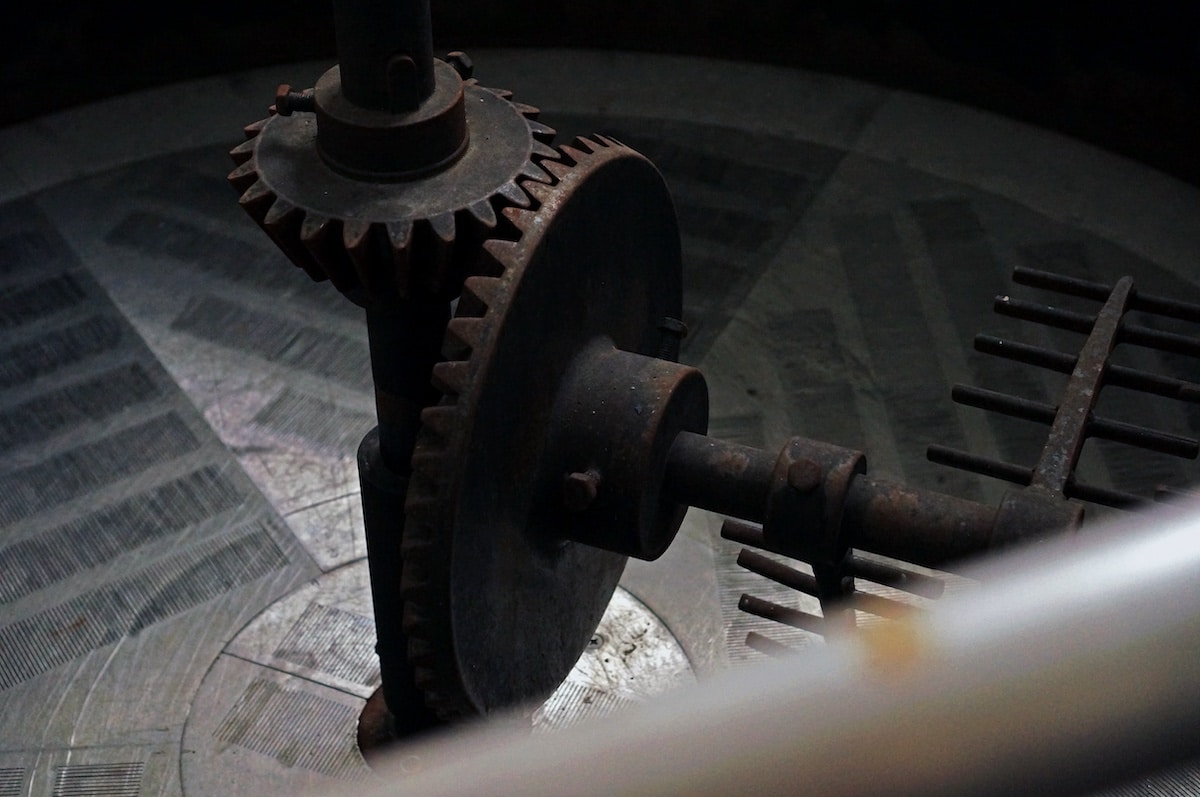
De Vits was prepared to sell his building to Boon; all the equipment it housed would be included without charge. Even then, the initial price was a lot of money for a student. In the meantime, Boon made his first steps into production, buying wort and blending it in a cellar in Halle, making 200-bottle batches at a time. He also started a beer distribution business, the first in the region to stock a wide range of specialty beers.
In 1977, Boon found a bank in Leuven that would give him a loan to buy De Vits’ building. His new blendery would enter a market in a protracted downturn, facing declining interest among drinkers and shrinking sales. Many families who had been in the business of Lambic for generations were looking to sell up and cash out. Boon was alone, 23 years old, gambling the resources he could muster on a business that looked sure to fail.
But those circumstances weren’t enough to dampen his ambitions. In 1978, he took over the business, and produced his inaugural batch of Mariage Parfait.
IV.
Partnership
The devotion that Lambic requires might feel monastic, but Frank Boon is no monk. In 1985, he married Marina Vansintjan, who worked as a label designer for the Colruyt retail group, and whom he met in the supermarket’s cafe. Four children followed: Bertien, Jos, Jan, and Karel.
Karel Boon, 30, who is now the head of sales and marketing, first tasted Lambic before he could speak; his father used to mix a drop or two directly into the baby food. As they were growing up, he and his siblings treated the brewery as a personal playground. “When we were young, there were only a few people working here,” he says. “There were still a lot of places in the brewery where the buildings weren’t in good shape, the rooms weren’t actually used […] There were big empty spaces just with rubble in it, or old machinery that my father put in there, and we just played around with that stuff.”
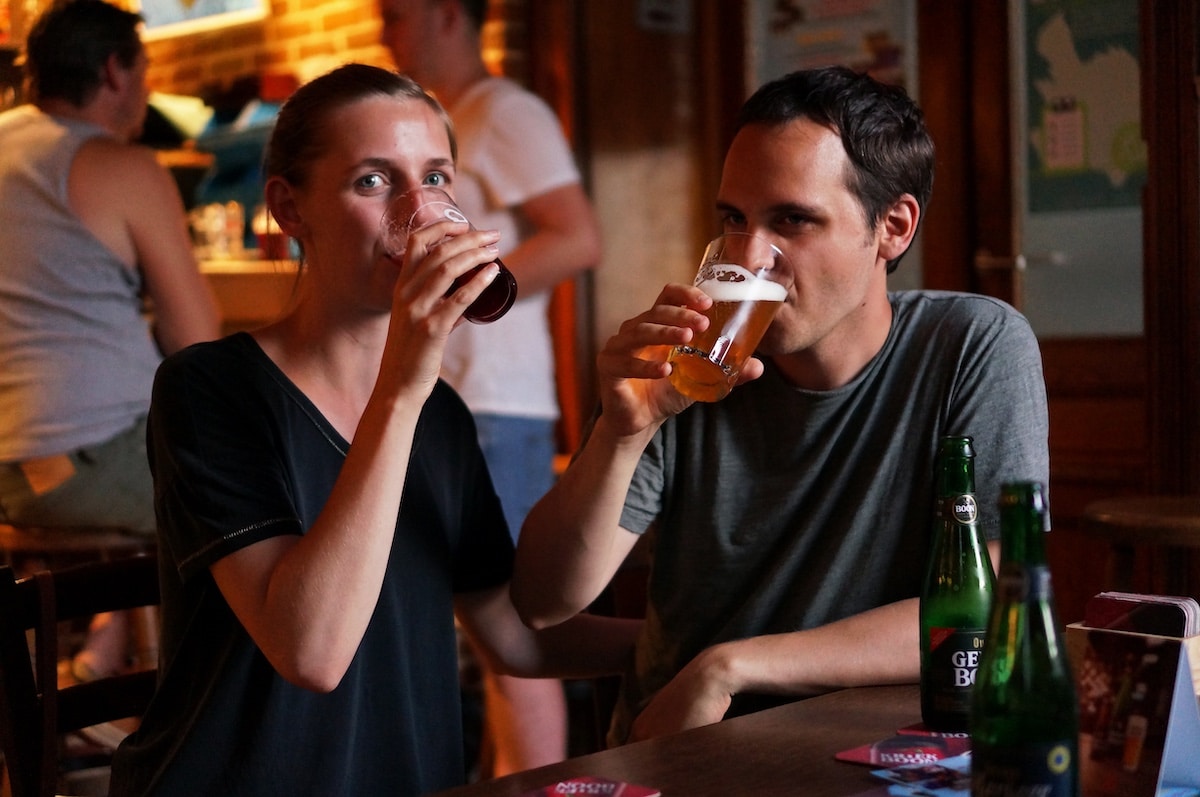
It didn’t remain empty for long. In 1982, Boon had found the site that the brewery currently occupies, a former iron foundry in central Lembeek, and began to use it for bottle storage. In 1986, he installed a bottling facility on site. By that time, Boon was already making more volume than De Vits ever did, and was sourcing wort from producers like Lindemans and Girardin. In search of greater precision, control, and volume, however, Boon knew he needed to produce his own wort.
In 1985, he had found an investor in a local wine merchant. The relationship lasted for a few years, but Boon chafed at what he saw as his partner’s overly romantic views of brewing, his preference for equipment that was more aesthetically pleasing than it was functional. Meanwhile, sales at the brewery were declining. The late 1980s and early ’90s were Lambic’s nadir, a time when much of what was on the market was oxidised, inconsistent, and flawed; a time when customers fled and the handful of remaining breweries pondered closure.
It did not seem a fortuitous moment to pour resources into a new Lambic brewery. But in 1989, Boon found a more likeminded partner in Jan Toye of Palm Breweries, who was less motivated by profit and more by the “cultural project” of saving Oude Geuze. Toye took a 50% stake in the company, and with his backing, Boon began the process of cobbling together a brewhouse. Equipment was sourced second-hand from other breweries, including a cast-iron mash tun from 1896. A coolship was installed in 1990, and the maiden batch of Lambic brewed that autumn. With that, Brouwerij Boon became the first new lambic brewery in the Zenne Valley in decades.
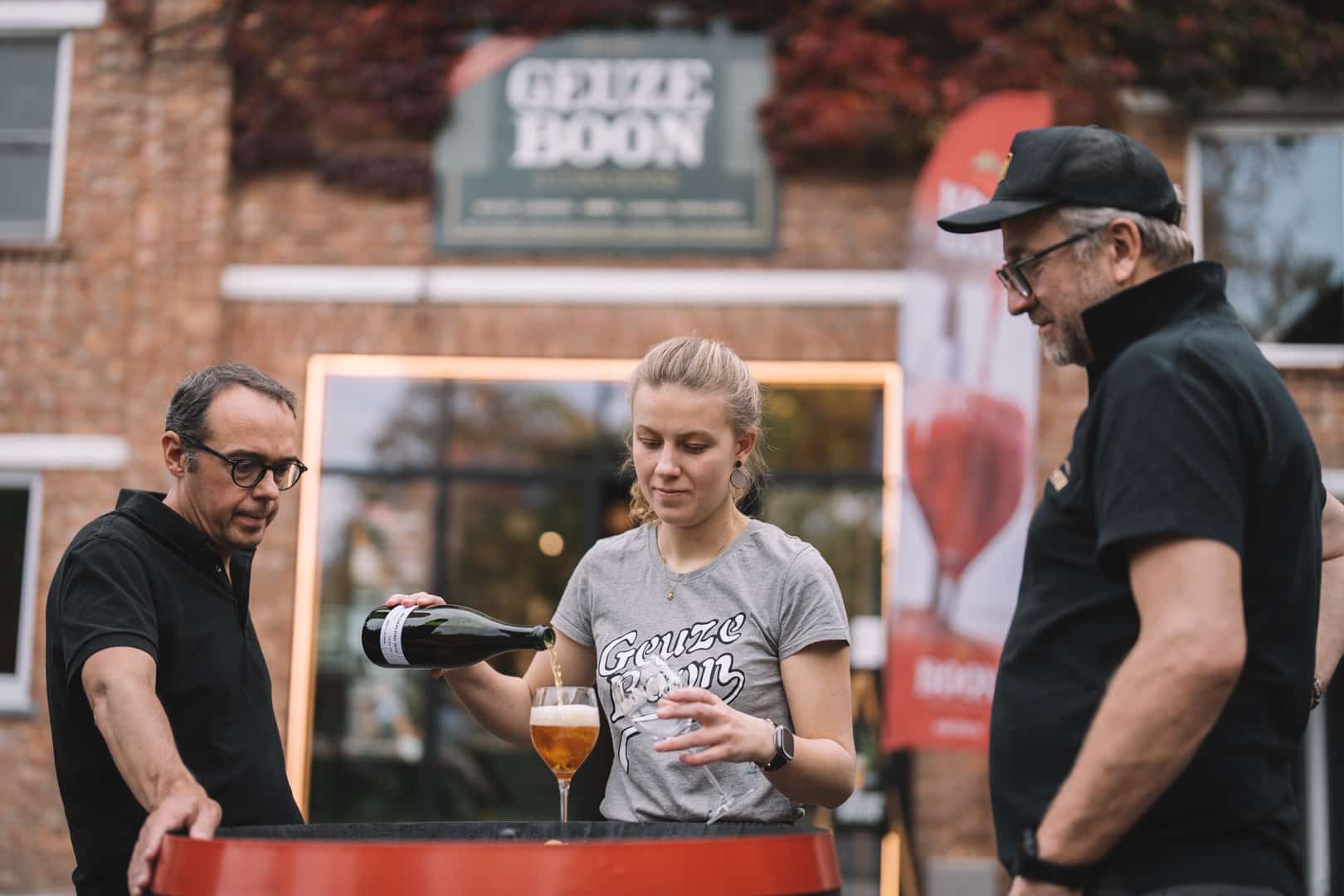
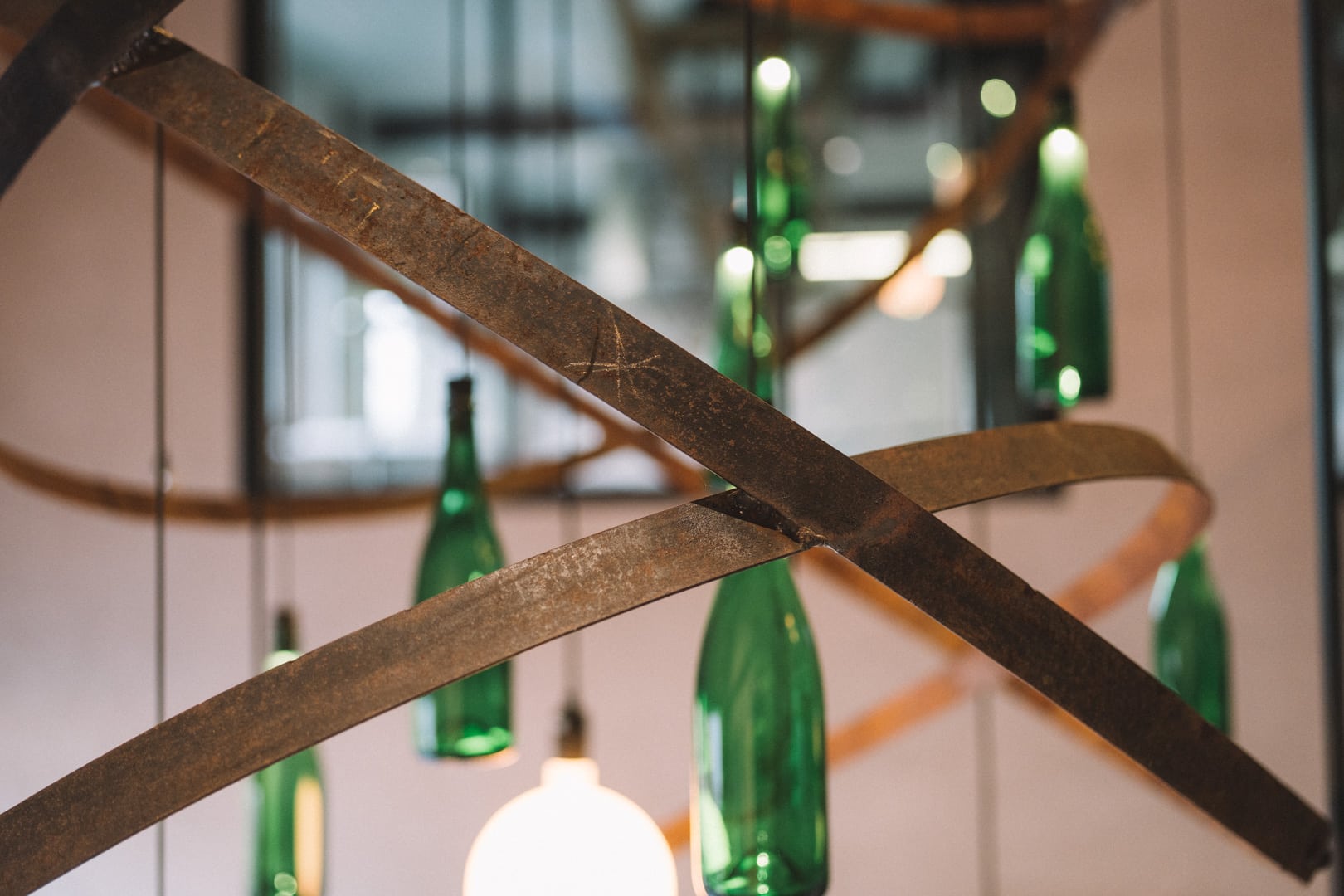

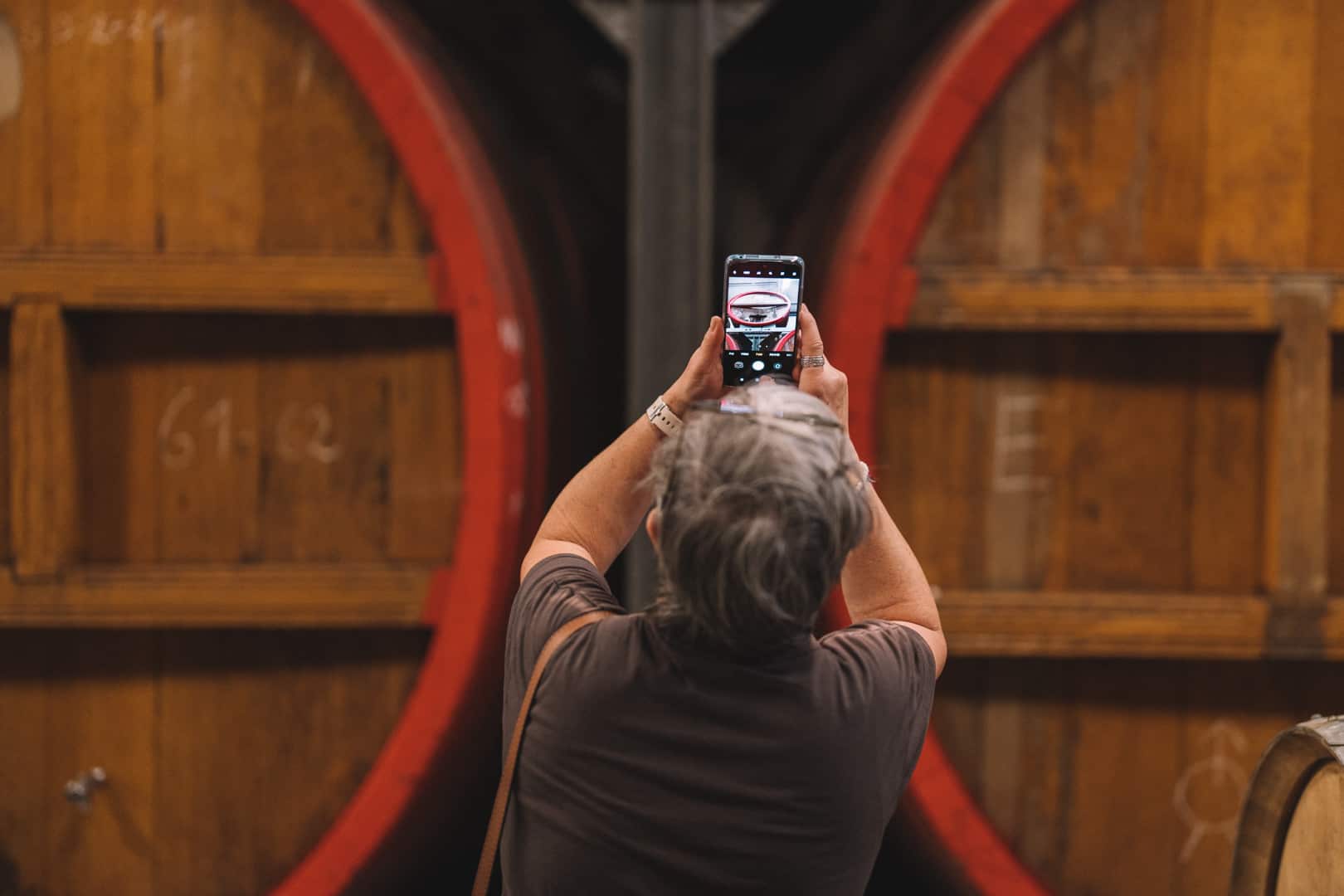
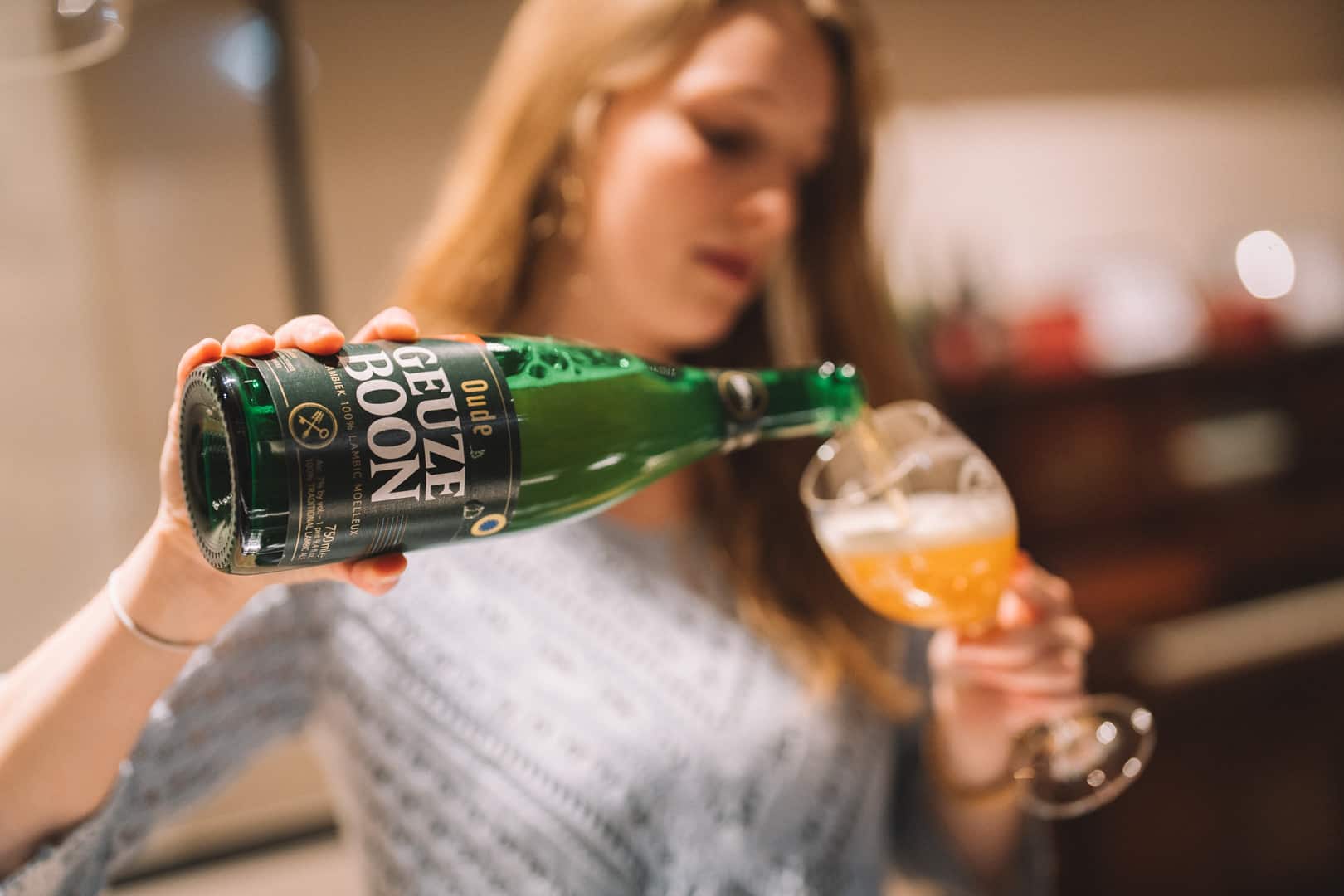
“In my personal view, [Jan Toye’s investment] was the catalyst to how the whole Lambic tradition is perceived today,” says Colin Gilhespy, the owner of Cave Direct, a U.K.-based importer and distributor that has worked with Brouwerij Boon since the late 1980s. “It gave Frank the freedom to invest in equipment and techniques that would preserve all the qualities of Lambic whilst making it more accessible due to increased volumes—and Frank’s unrivalled skill as a master brewer and blender.”
By 1992, sales began to revive. With ample space to grow (slow-ageing Lambic is a beer that sprawls across barrels and foeders; the more acreage for its storage, the broader the blender’s palette), Frank Boon could focus on making the best Geuze possible. The kind that could rival his mentor’s—or even exceed it—at a time when sceptical drinkers still largely associated Lambic with vinegar.
V.
How to Blend
If there is one word that Frank Boon says more than any other, it is “quality.” For Boon, quality means a Lambic that is soft and mellow—“malse Lambiek,” in his words, rather than “hard Lambiek.” It means a Geuze that has no more acidity than a glass of Champagne. It means precision. Quality is an exacting and relentless tutor, a prerogative that never ceases, a watchfulness that can never be relaxed. Quality depends on the raw materials. Quality depends on the brewhouse. Quality depends on the wood. The search for an ever more perfect quality is work that can fill up a lifetime.
“These are things in a Lambic brewery you have to do on a daily basis and never stop—if you stop, quality will go down very fast,” says Boon. “Being dedicated to your Lambic stock is very, very, very important.”
As the brewery grew, Boon pursued the quality-driven mission that had informed his work since De Vits’ tutelage. But in doing so, their paths began to diverge. De Vits’ capabilities had been inherently limited: Operating without electricity, without temperature control, he worked within constraint to produce beauty.
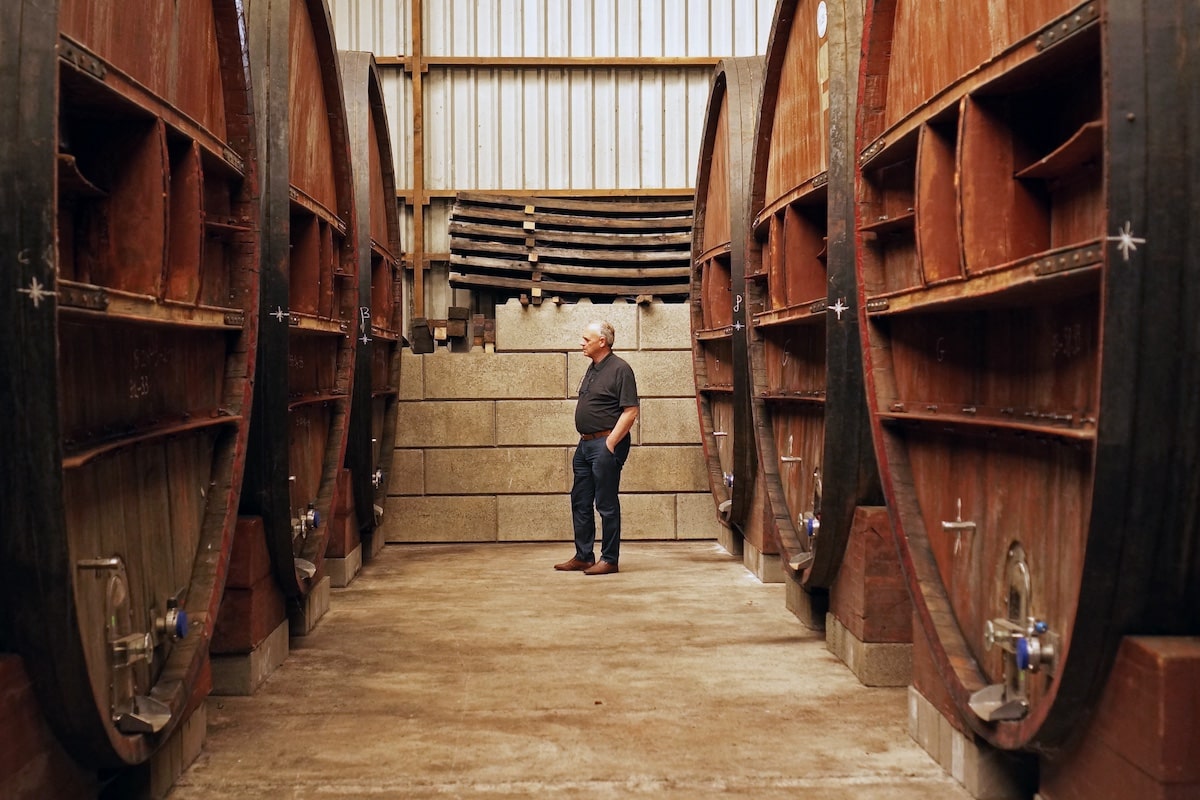
“Because [De Vits] had no possibility to control or to measure, he just tasted, he blended, and then there was his production,” says Boon. If, as a blender, your Lambic stock was of a reasonably high quality—perhaps you had a couple casks that were too sour, or which had small off-flavours—you could still make a good, drinkable bottle of Geuze by using all the beer in your barrel room and skilfully blending away any faults into imperceptibility. “That method is called coupage: You cut away little flaws by extending it,” says Boon.
But there was another way. If your Lambics were all of a high quality, your preoccupation became additive rather than reductive. You could choose to tilt your blend towards the phenolic, or the bitter; you could direct it wherever you wanted. “And then finally, when you build your taste, it’s not coupage, it’s mariage—it’s bringing together,” says Boon. “And the best one, of course, is Mariage Parfait.”
In 1978, the year Boon took over René De Vits’ business, he produced the inaugural batch of Mariage Parfait. In its early incarnations, the beer was an outgrowth of De Vits’ reserve Geuze, exclusively sold at his sister’s cafe. To signal that its successor was a premium product, Boon gave the beer its own brand and a higher price.
Since that moment more than 45 years ago, Mariage Parfait has continued to shapeshift. Over time, Boon began to produce dedicated, higher-gravity Lambics for the beer, and its strength rose from around 6.5% ABV to 8%. And while it was originally a blend of one- and two-year-old Lambics, today, it consists of mainly three-year-old Lambic.
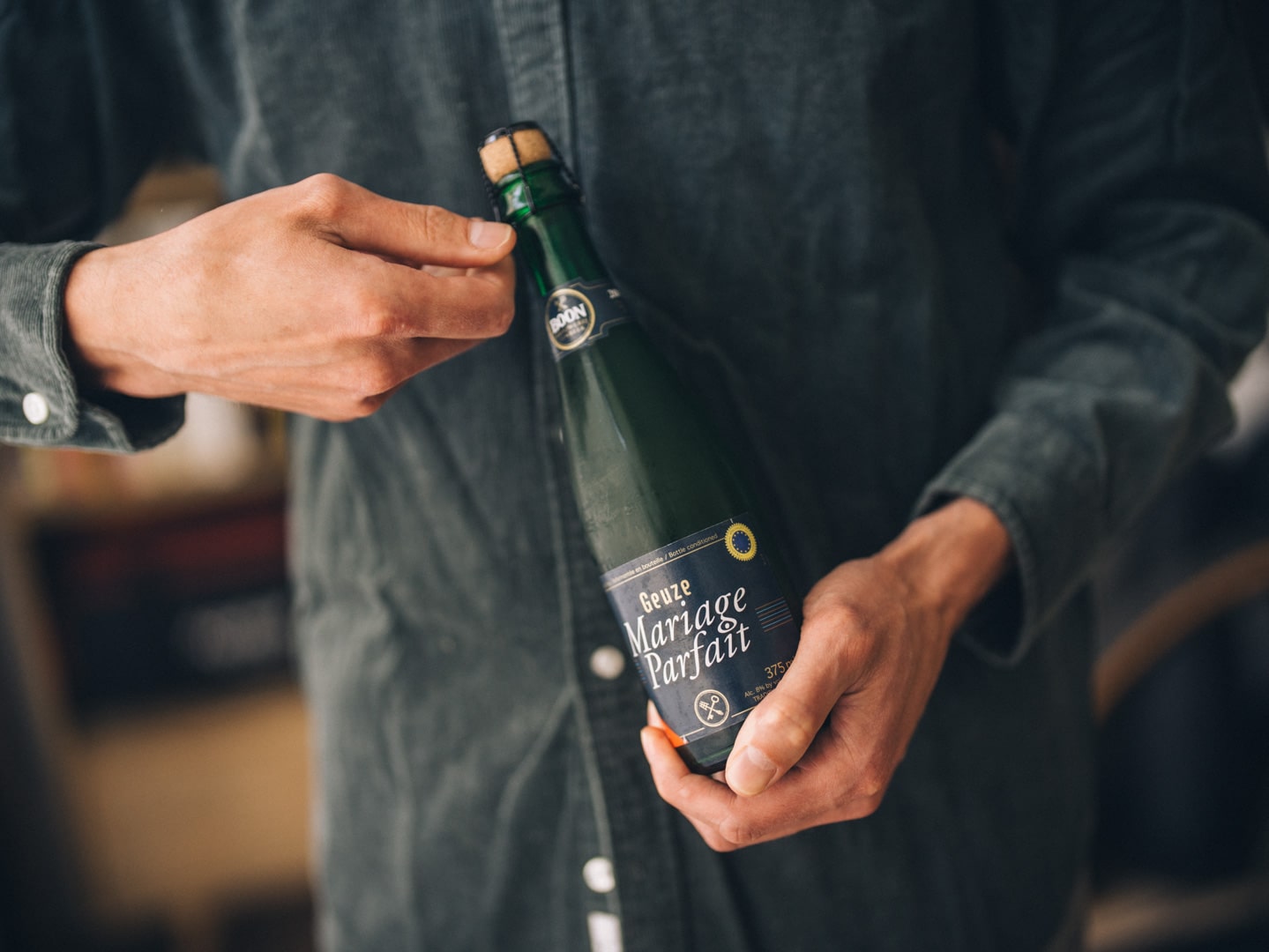
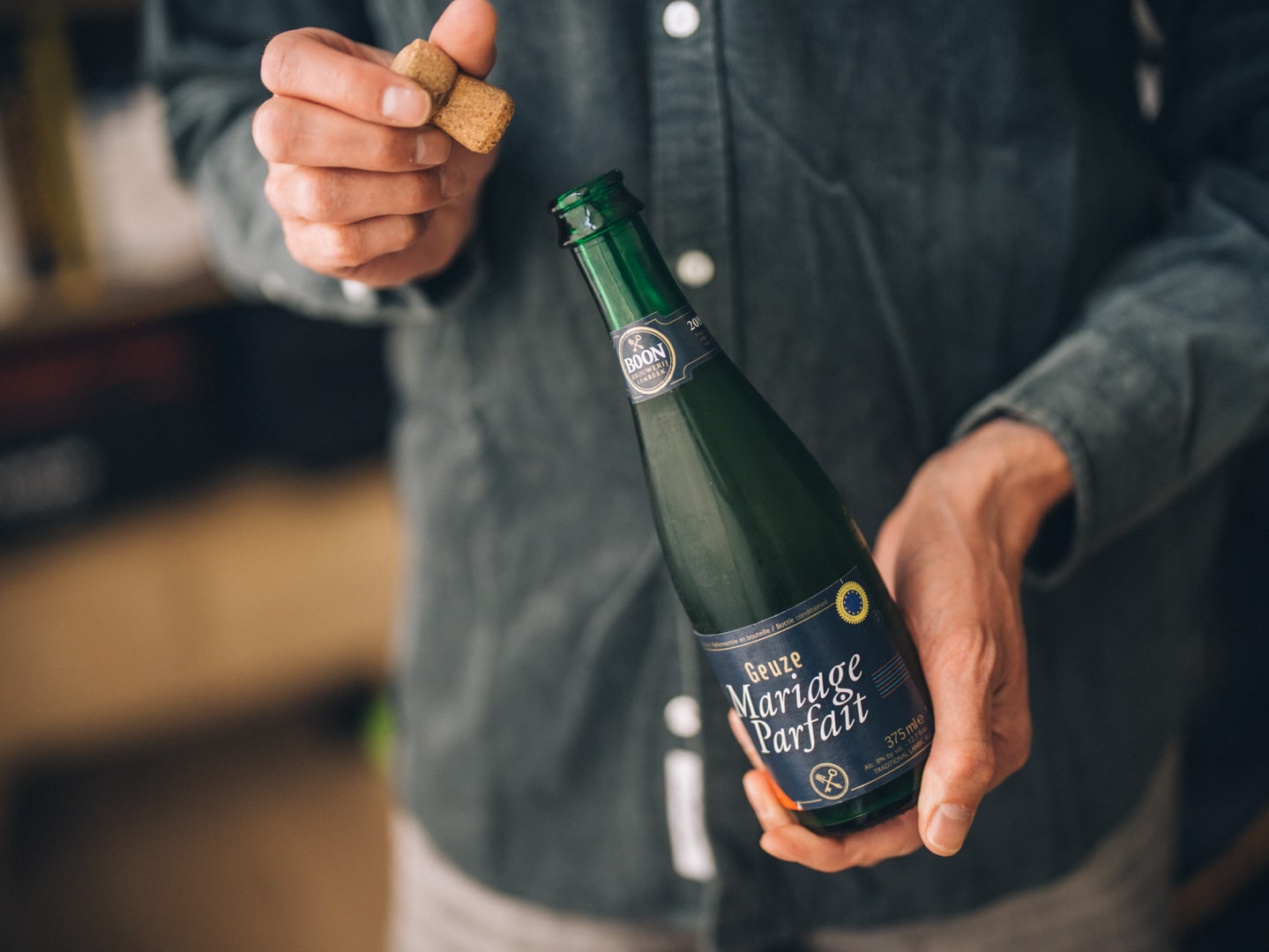
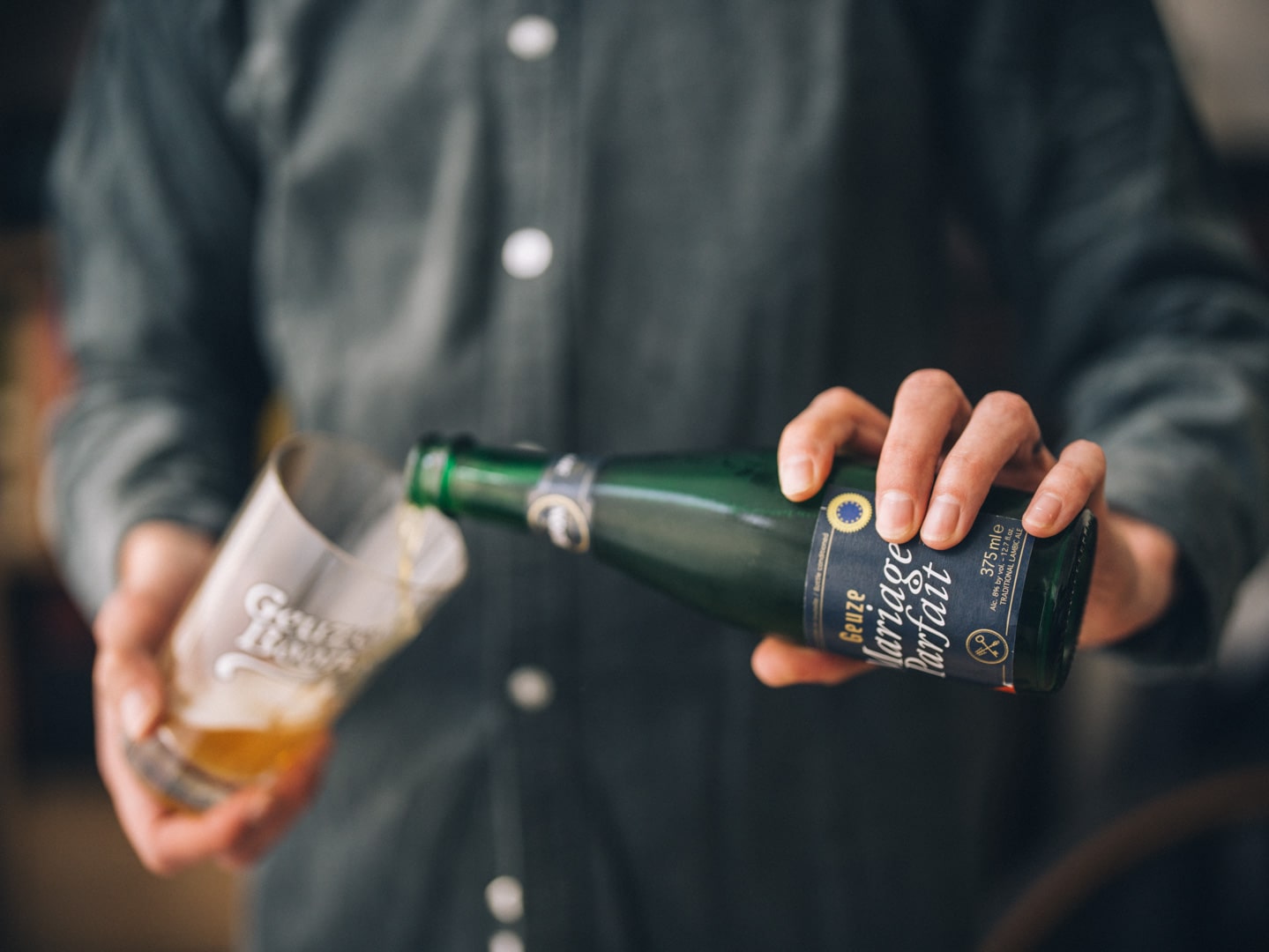
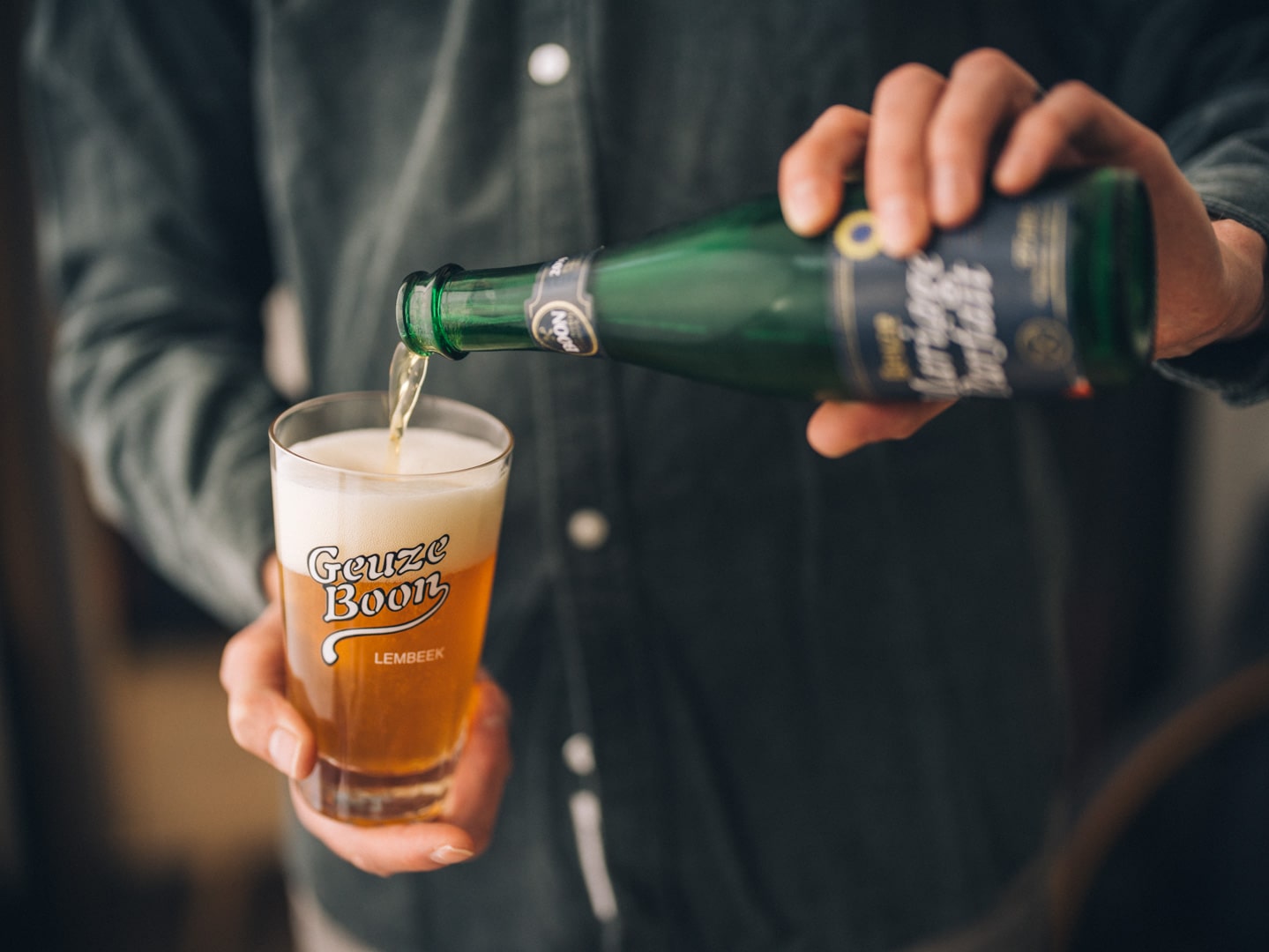
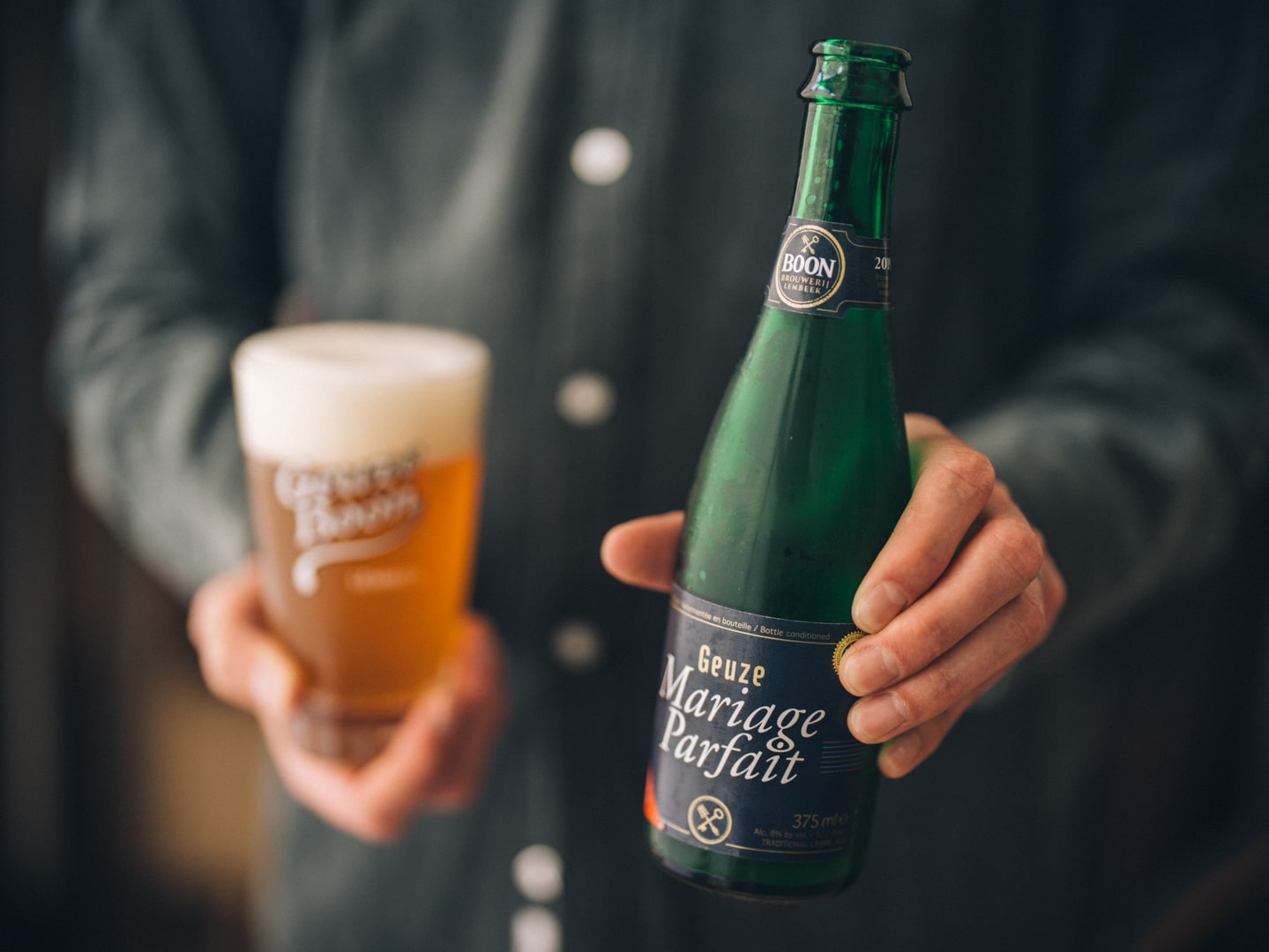
Across all of its phases and evolutions, Mariage Parfait has remained a Geuze of special distinction. The brewery sells just one bottle of Mariage Parfait for every eight bottles of Boon Geuze, and it reserves its oldest and largest foeders for the beer’s production. “The character of Mariage Parfait, some people say it’s like oaky, a bit Cognac-style,” says Boon. “And there are a lot of esters from Brettanomyces. They come from these casks, and they have the character of these old Brettanomyces generations.”
In many ways, the beer’s history and methodology crystallise Boon’s ethos. And while Mariage Parfait is Frank Boon’s own creation, it also represents a lineage that precedes him by decades, if not centuries. It is flavour as cultural artefact.
“In September 2020, my brother, my father, and I, we opened a bottle of De Vits’ Geuze,” recalls Karel. “It was bottled in 1973 or 1974. And that was just fantastic Geuze. It was brilliant. It was clear, it had a small head of foam. It was still sparkling. It was full of flavour […] But also it tasted for me like an Oude Geuze Boon. My father explained, ‘This is exactly how I remember De Vits. And this is my model, my example of how Oude Geuze, traditional Geuze, should taste. Because people came from the other side of Brussels, drove past many other Lambic brewers and blenders, and came to De Vits for these bottles.’
“To taste that almost 50 years later, it was like, ‘Oh yeah, okay.” We already knew this, but it was so clear suddenly, that the [brewery’s] tradition is also the taste.”
VI.
Protection
At the same time that Frank Boon was building up his Lambic stock and expanding his brewhouse, he was also pursuing a concurrent project: persuading the Belgian government to recognize Geuze as a protected product. Boon saw this as a matter of existential urgency. In an era when Geuze could be sweetened or dosed with syrups, where no quality certification existed to separate mass-market examples of the style from Oude Geuze—made from a blend of young Lambic and older Lambic that has aged for at least three years in wooden barrels, according to tradition—the beer’s very future seemed at stake.
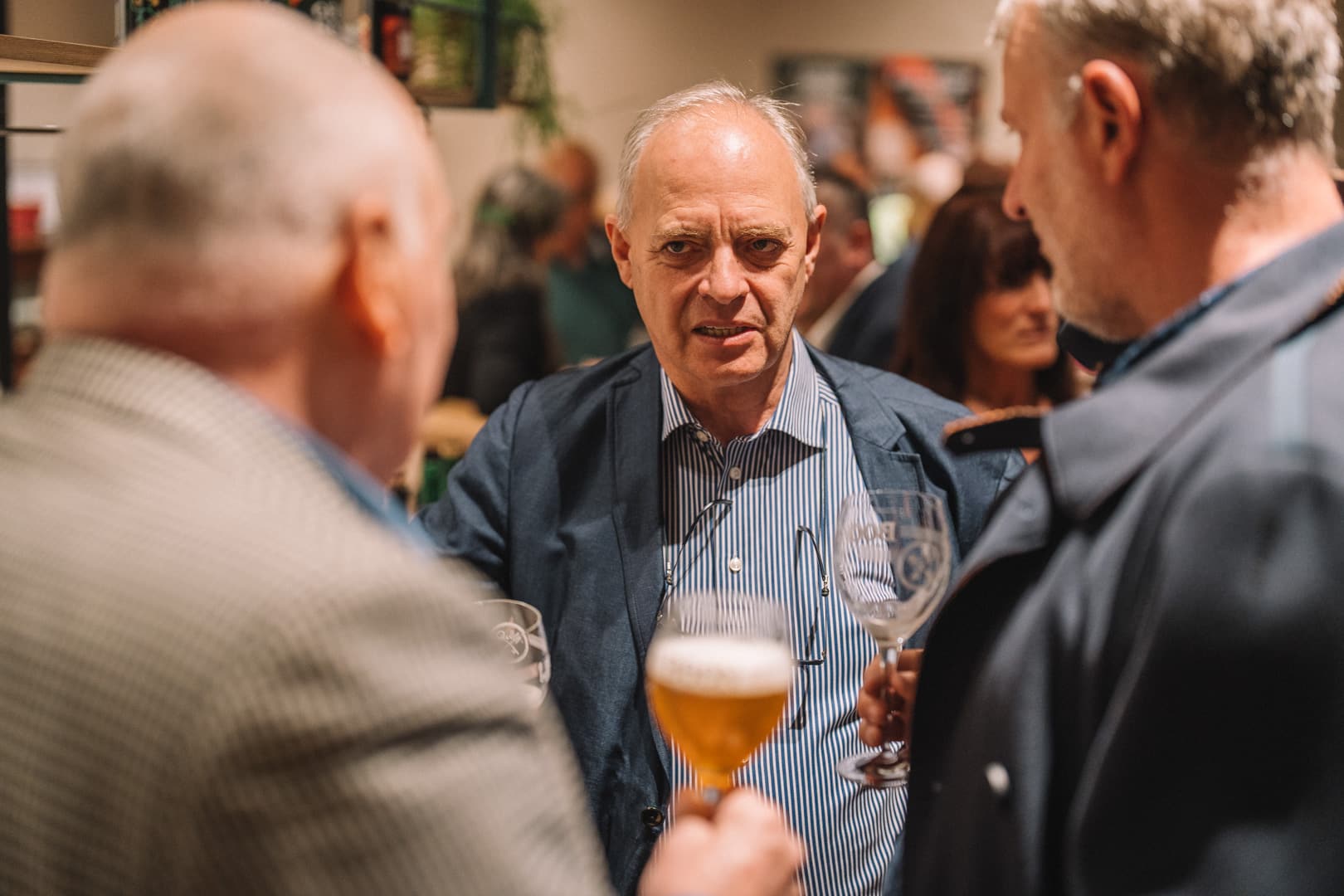
The process of petitioning for protected status began in 1986. It wasn’t until February 1997 that the government accepted a proposal for Oude Geuze and Oude Kriek as TSG (Traditional Specialities Guaranteed)-certified products, protected in process rather than geography. Arriving at that point wasn’t easy. For Boon, it required not only marshalling a disparate group of stubborn, strongly opinionated Lambic brewers to agree on a single definition, but resisting pressures from larger breweries to make production shortcuts or workarounds permissible.
Just four weeks after approval was granted, HORAL—the Hoge Raad voor Ambachtelijke Lambiekbieren (High Council for Traditional Lambic Beers)—was established, led by Armand Debelder of 3 Fonteinen and comprising six initial member breweries, including Boon. “It was Armand that went to Boon and to Lindemans and said, ‘I cannot do it by myself, I need the big guys with me,’” says Werner Van Obberghen of 3 Fonteinen, one of Debelder’s two successors. The organisation was conceived of as a way to bring together breweries that had previously functioned as islands, to unite them around common objectives, to spread the good word of Lambic and Geuze.
“[HORAL] was in effect the beginning from some Lambic brewers to spread the message about the spontaneous fermentation, about the Lambic, about Oude Geuze, what it was, how it was brewed,” says Dirk Lindemans of Brouwerij Lindemans, one of HORAL’s founding members. “We also organised—I think the first time was in 1997—the first Toer de Geuze,” a biannual event that invited visitors to tour members’ breweries. “It was never seen in the beer world before that competitors worked together in organising an event, but it was quite successful. And so slowly but surely, the quality of Oude Geuze became better and better, and now it has reached the status that it deserves.”
In 2015, Debelder stepped down as HORAL’s chairperson, and Frank Boon assumed the role for a four-year tenure. “The strength of Frank is his knowledge. He’s a walking Wikipedia,” Lindemans says of his leadership. “You can ask him anything and he’ll have an answer. He’s very well-educated, and he also has a very good network.”
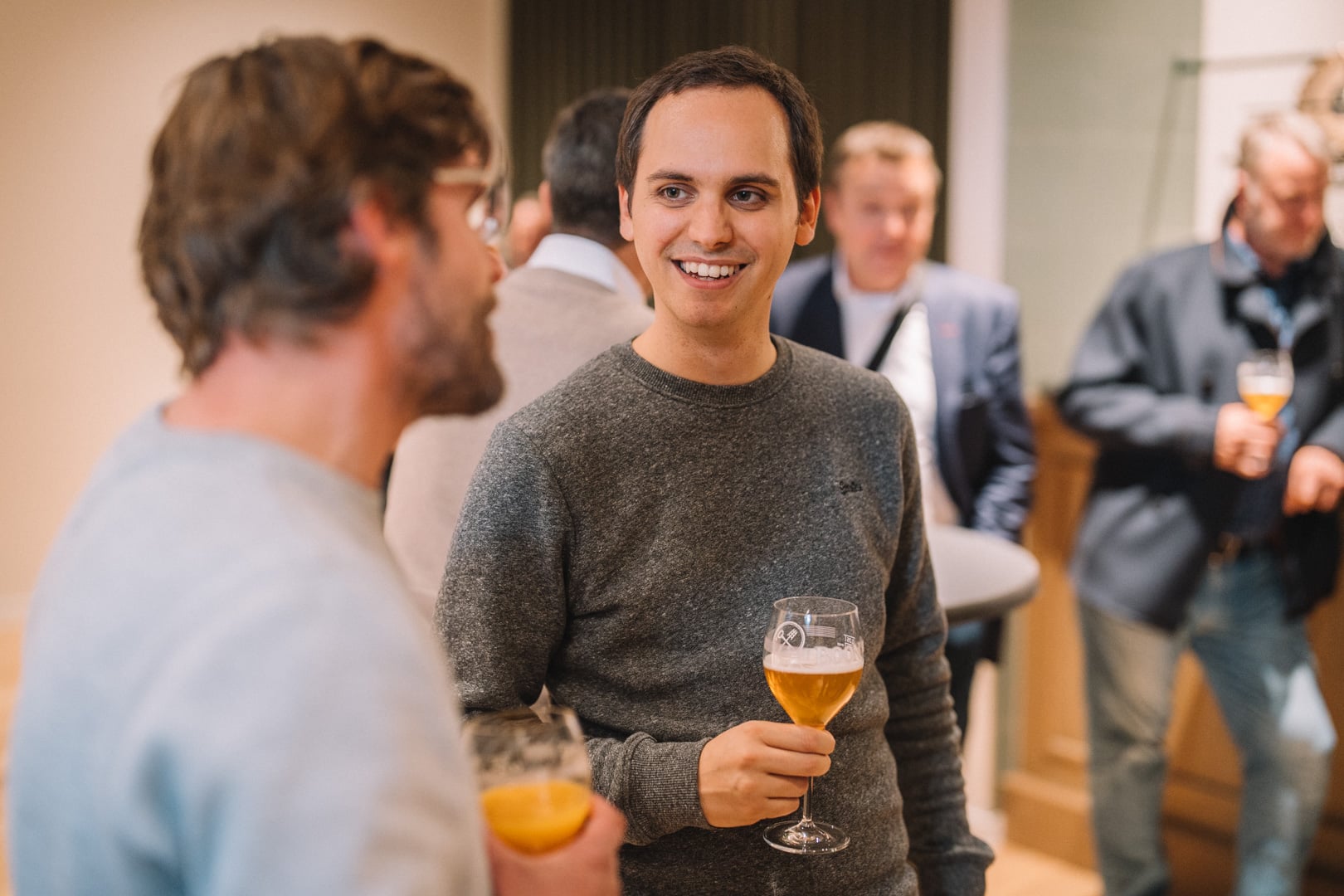
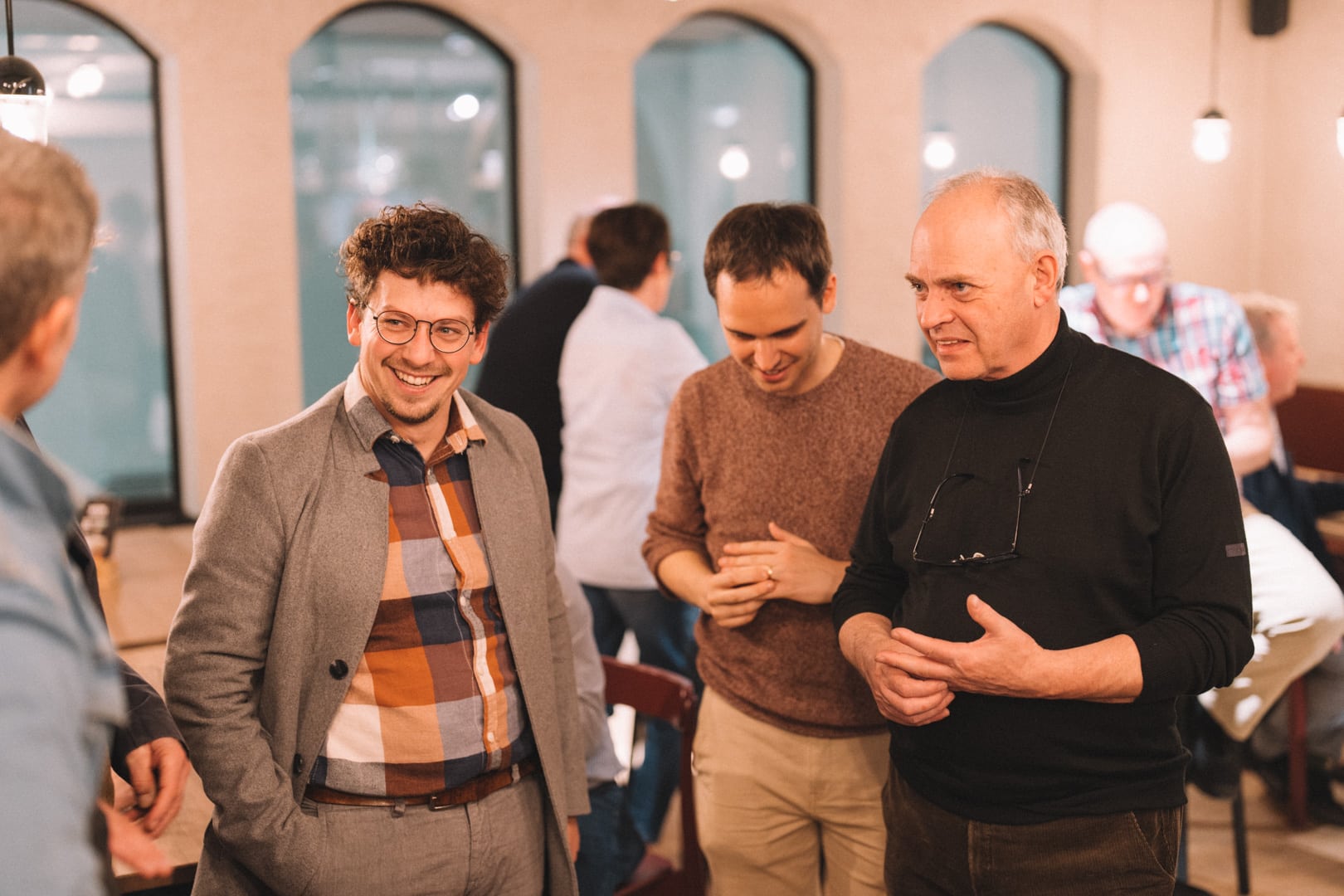
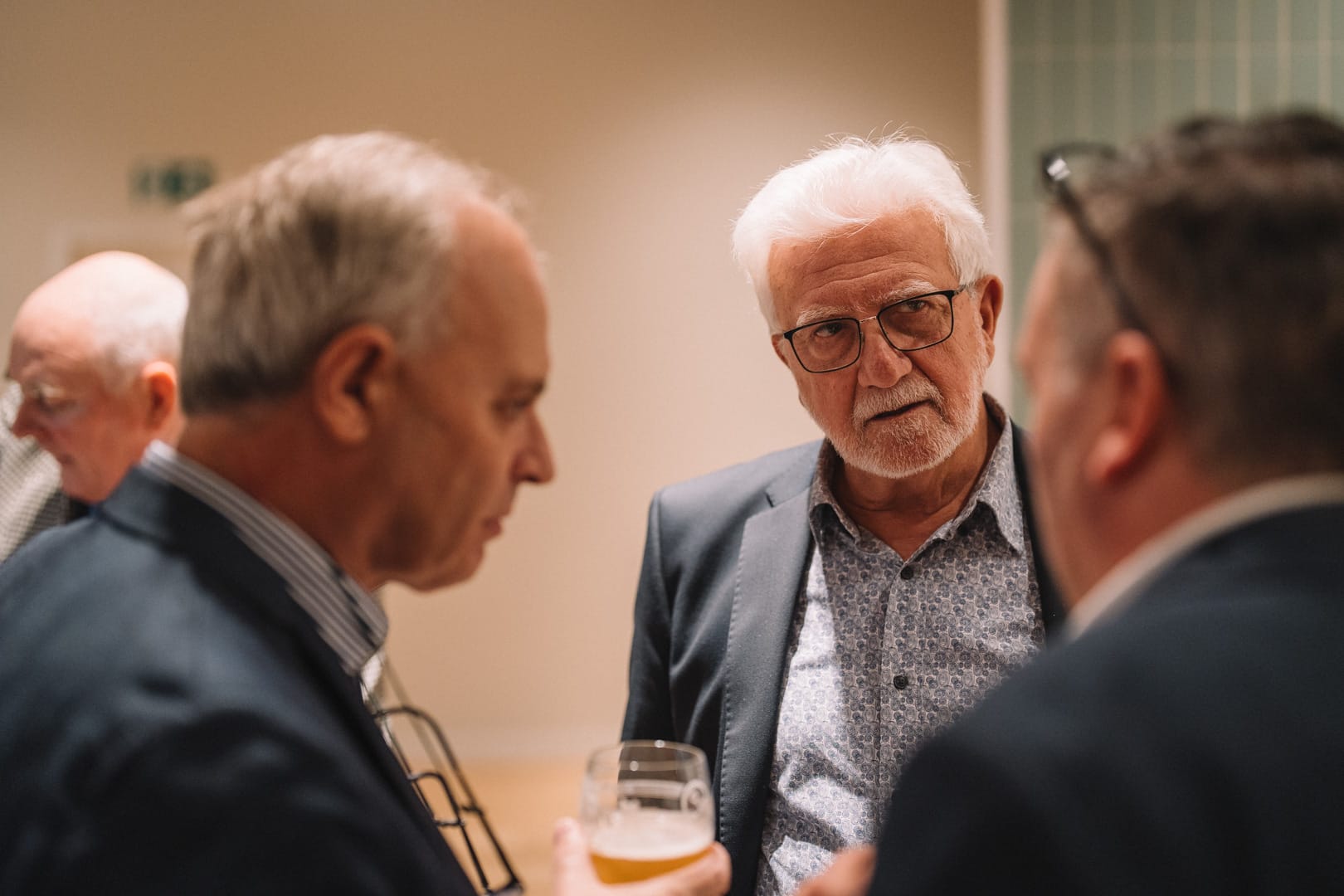
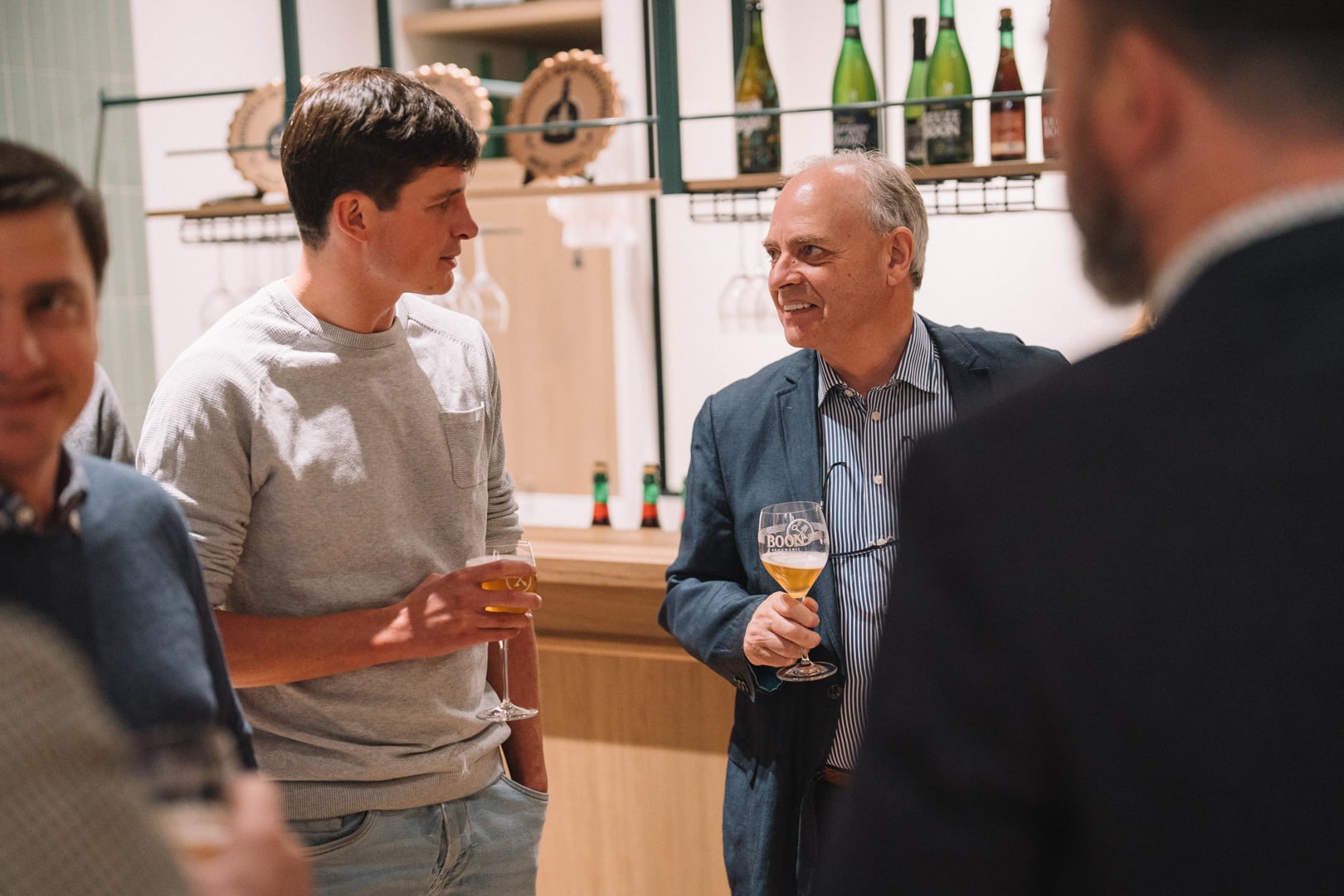
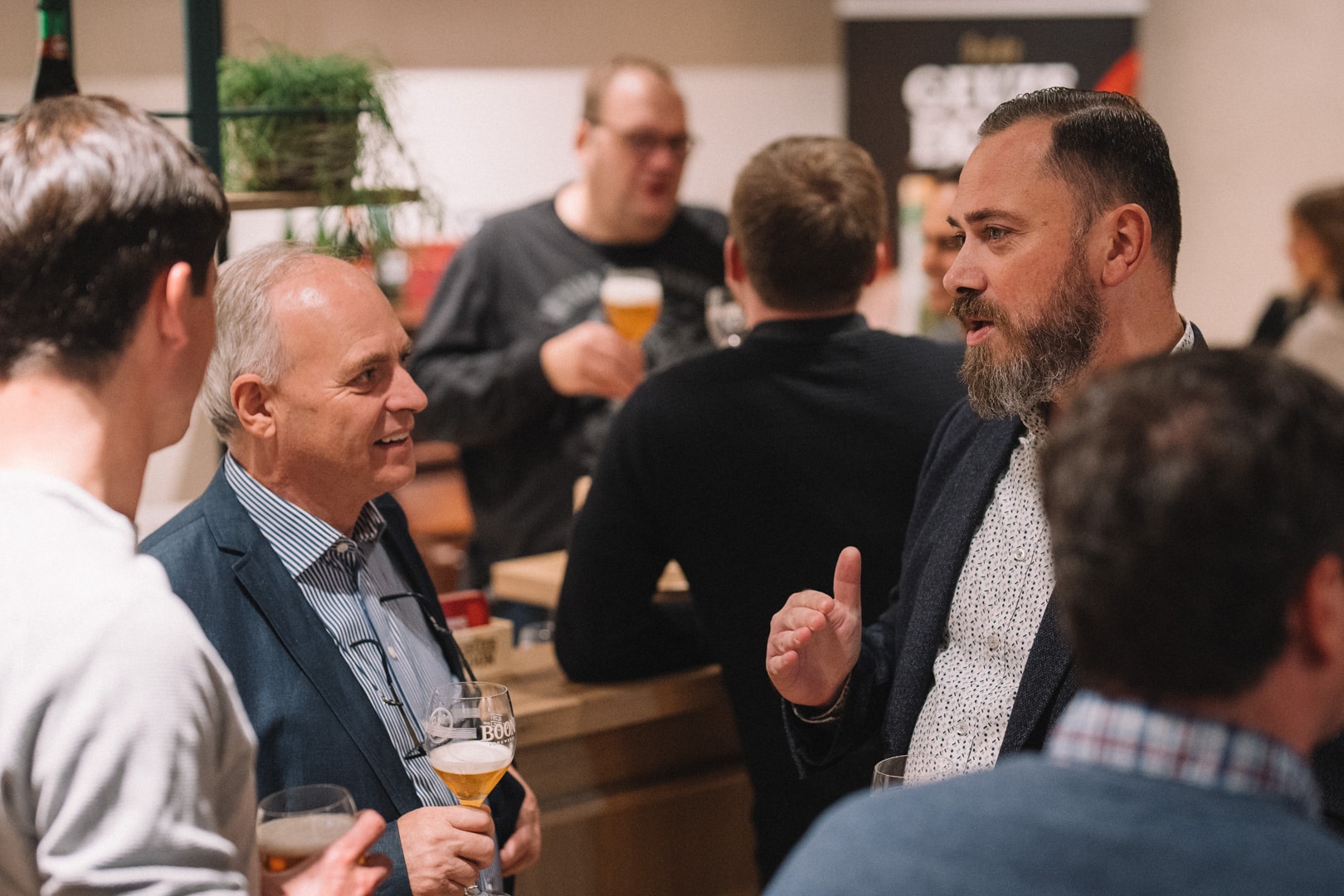
Still, overseeing HORAL’s members was not without its challenges, and disagreements about what Lambic and Geuze should be—how they should be made, served, and packaged—persisted. 3 Fonteinen left HORAL in 2018, because, as Van Obberghen puts it, “We felt that, more and more, individual breweries were tweaking the tradition in favour of commercial gain, and that was getting farther and farther away from the initial reason HORAL was founded.”
Girardin, too, departed in the same year. And while a number of Lambic blenders and brewers have since joined the organisation, others—notably Cantillon, which has long had ideological disagreements with HORAL’s members about how Lambic and Geuze should be produced, defined, and sold—have pointedly resisted the group’s aims since its inception. But despite the challenges, controversy, and disagreements, HORAL’s legacy has been one of greater cooperation among Lambic breweries, and greater international awareness of their products.
“We believe that we do not have to stay here in our region—the world is big enough,” says Lindemans. “It doesn’t make sense to compete [with] each other in this small area while you also have opportunities in the United States, in Japan, whatever. But I must say, the relationship between all the Lambic brewers in HORAL is very good, very respectful. We normally come together every two months, and it’s always a very social meeting.”
VII.
Slumbrous Giants
To tour Brouwerij Boon in the company of Frank Boon is to see it through his own eyes: that is, to observe every foeder in need of repair; to decipher the chalk symbols scrawled on their fronts; to notice that the smell in one warehouse has changed, indicating a leak that needs addressing. He is a patient and methodical host, and it is easy to understand why his local nickname is “The Professor,” even if Boon himself disavows it. (“The reason is because for him, he’s a brewer and he’s just doing what a good brewer should do,” says Karel.)
In the foeder rooms, Boon moves nimbly among their quiet bulk, telling stories of each as if it were a trusted colleague. Brouwerij Boon has the largest quantity of beer aged on oak in the world—more than 2 million litres, across 161 foeders—and that small sea of Lambic creates its own microclimate in the warehouses, a fog of angel’s share in the rafters. There are a few spiders present (all the more useful for capturing fruit flies), but the facility is otherwise pristine. It is the opposite of what Lambic romantics might picture, and a challenge to the idea that microflora can only flourish in filth.
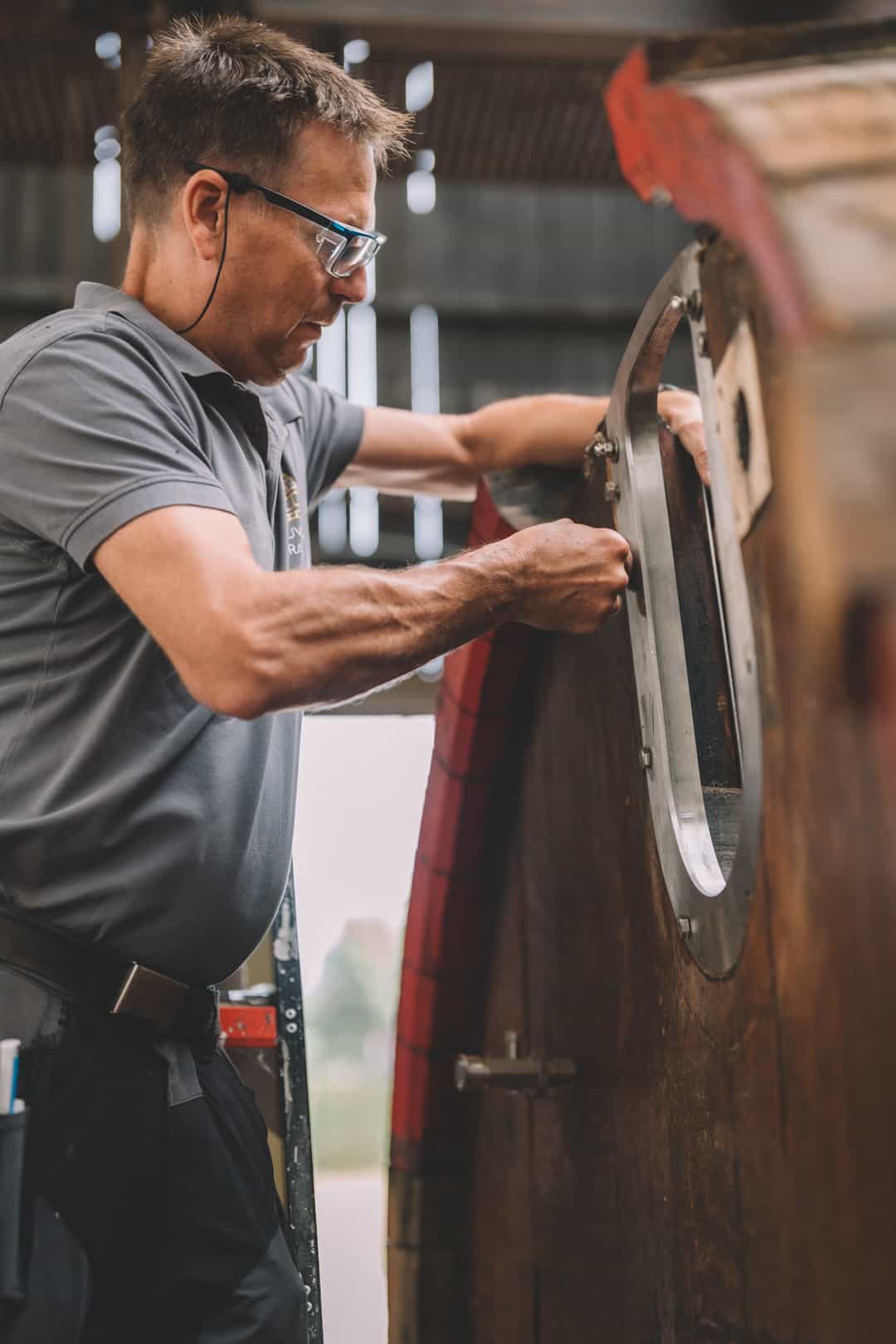
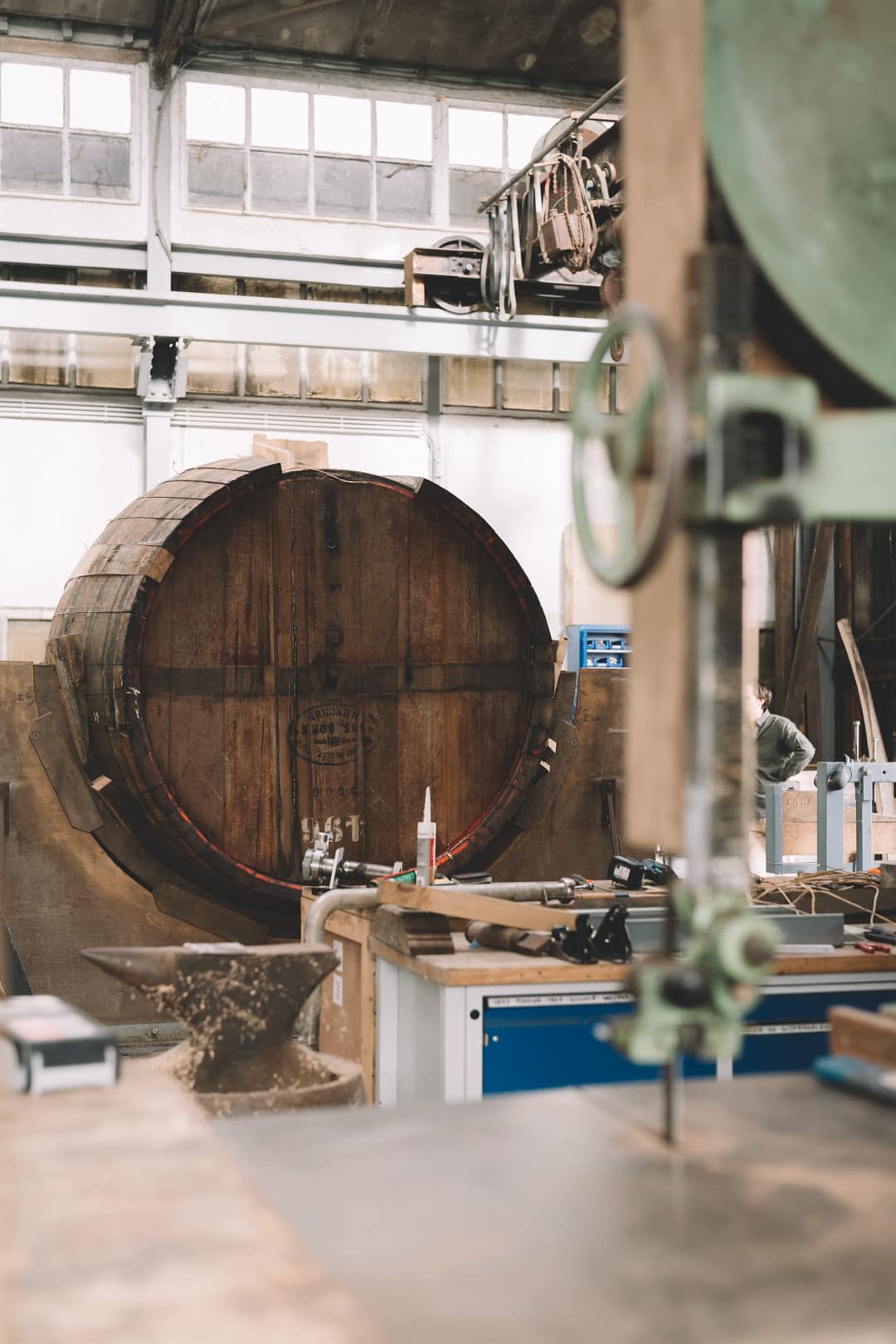
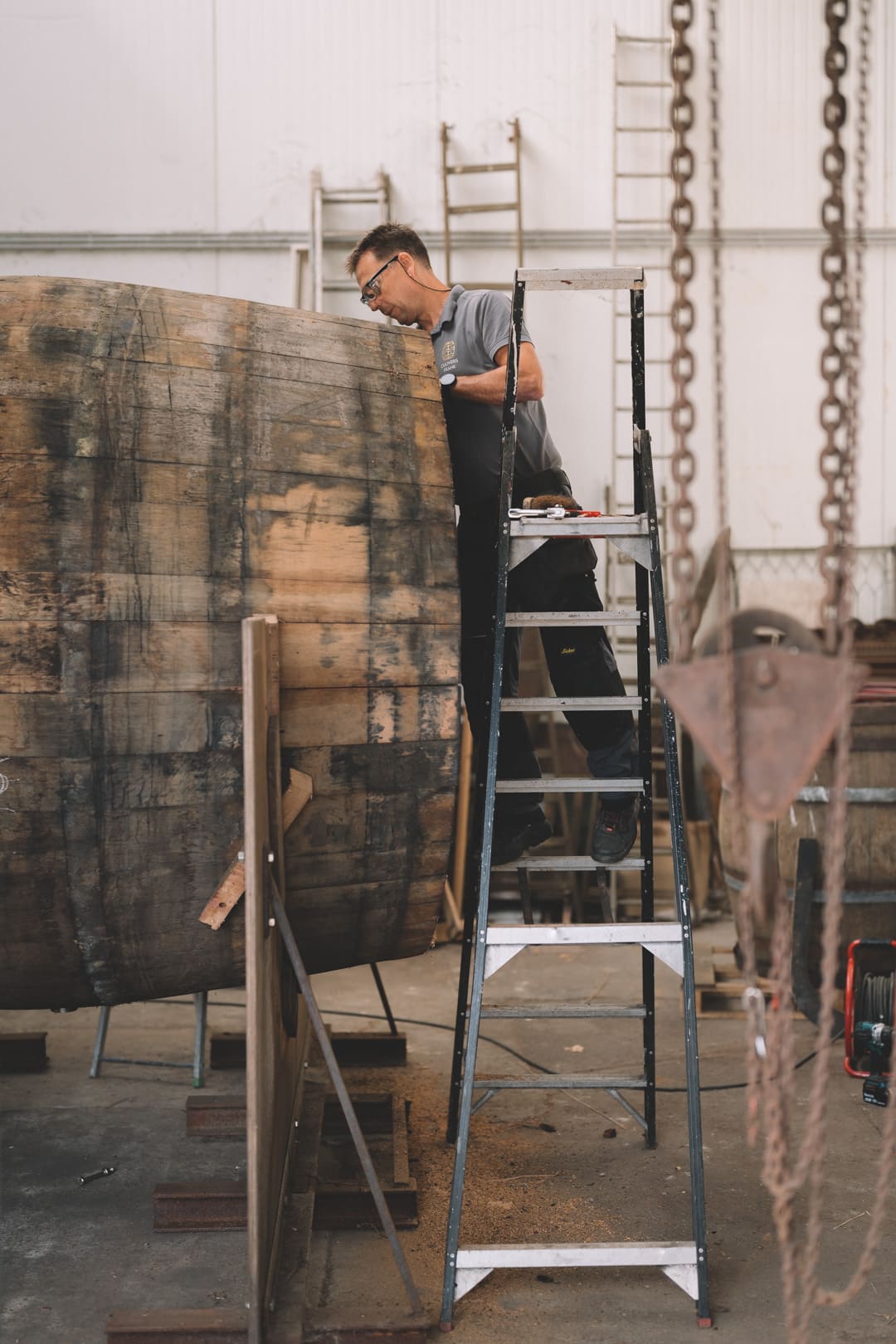
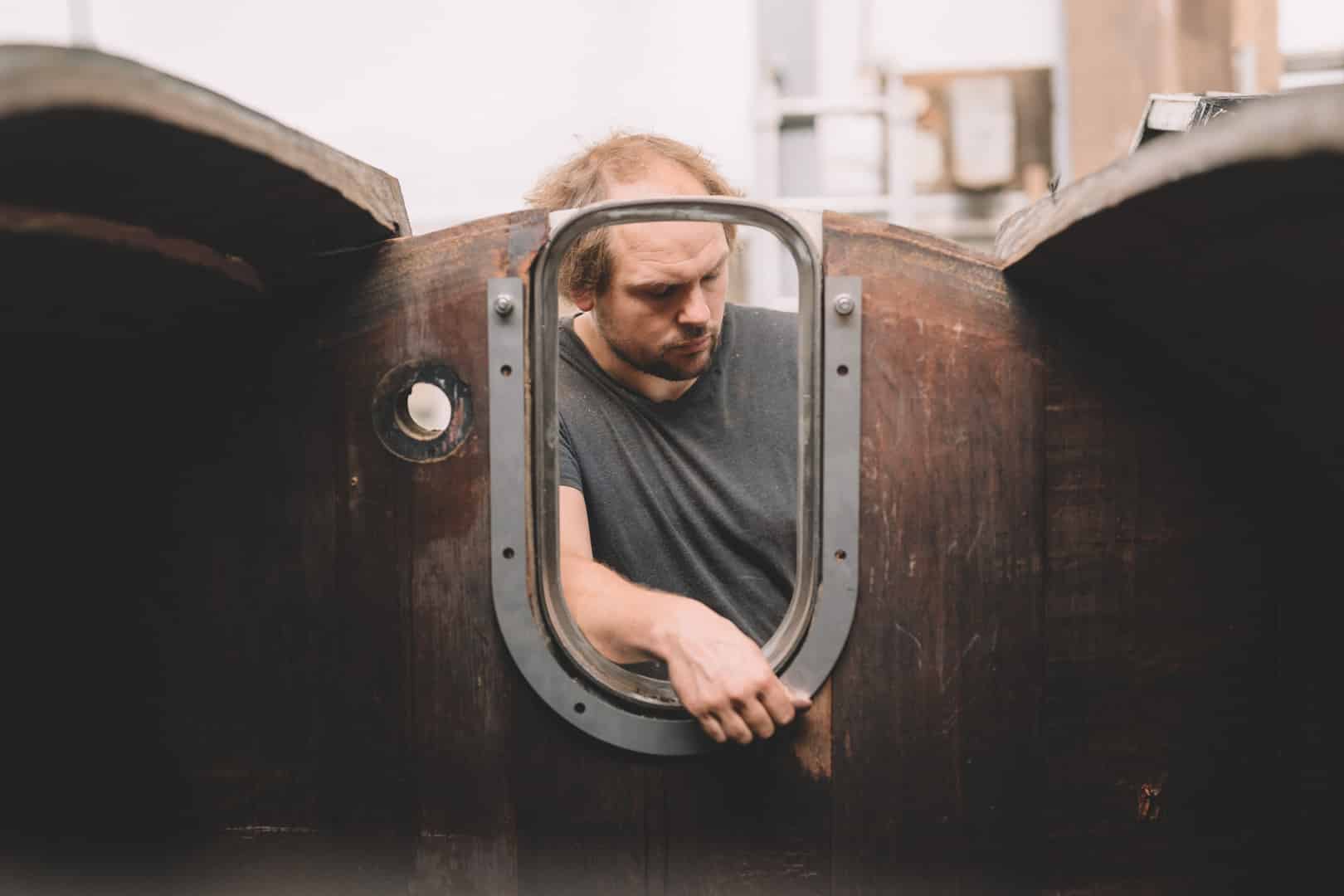
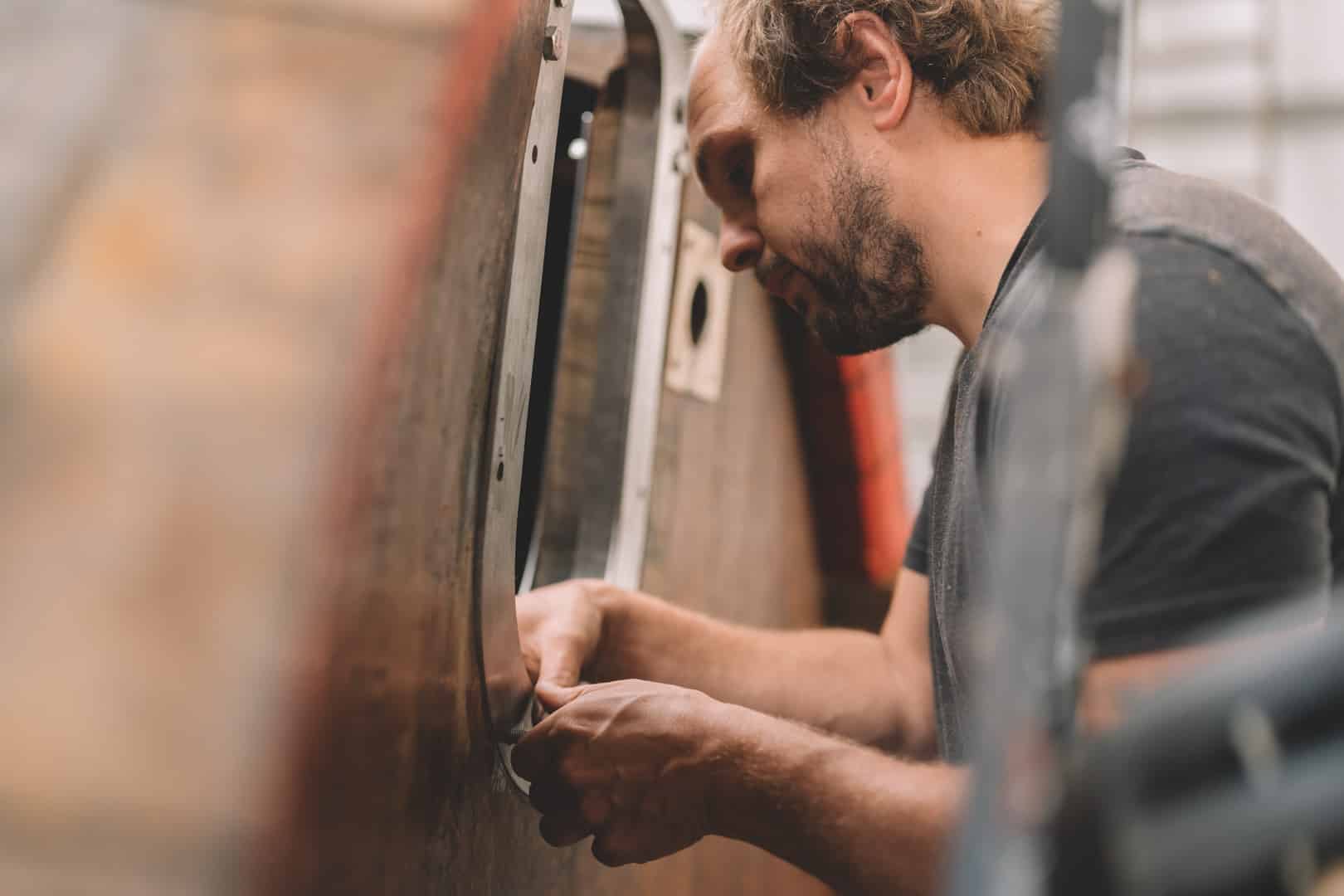
“Some say you need cobwebs, and you need old tiles—stories, stories, stories, stories—yes, I know, it’s a disappointment for these guys who believe that this is important in these breweries,” Boon says wryly. “It’s too clean.”
To oversee these slumbrous giants is to manage hundreds of living beings, some of ancient pedigree. The oldest is from 1883, and was made with wood from 1635; Boon describes drinking the Lambic it produces as “a kind of time travel.” He prizes the individuality in each foeder’s Brettanomyces cultures; he notes the places where the foeders have been repaired, cleanly patched by blonder pieces of wood, the newer staves themselves taken from several-hundred-year-old French and Belgian oak trees. Their wood is as dense and solid as steel.
One of the most striking areas of the brewery is the woodshop, shot through with light and smelling sweetly of vanillin. Boon learned to repair foeders himself, and the brewery’s cooperage is one of its unique features. “I’ve learned this job from the last cooper in the village nearly 50 years ago,” he says. “I spent an afternoon with him and he explained how to make a cask, and he gave me his tools, and there I started to repair my casks and I kept them in good condition. From small casks, we did maintenance on larger and larger and larger casks. The largest one we’ve repaired now is nearly 27,000 litres, but it’s full of beer now and it works.”
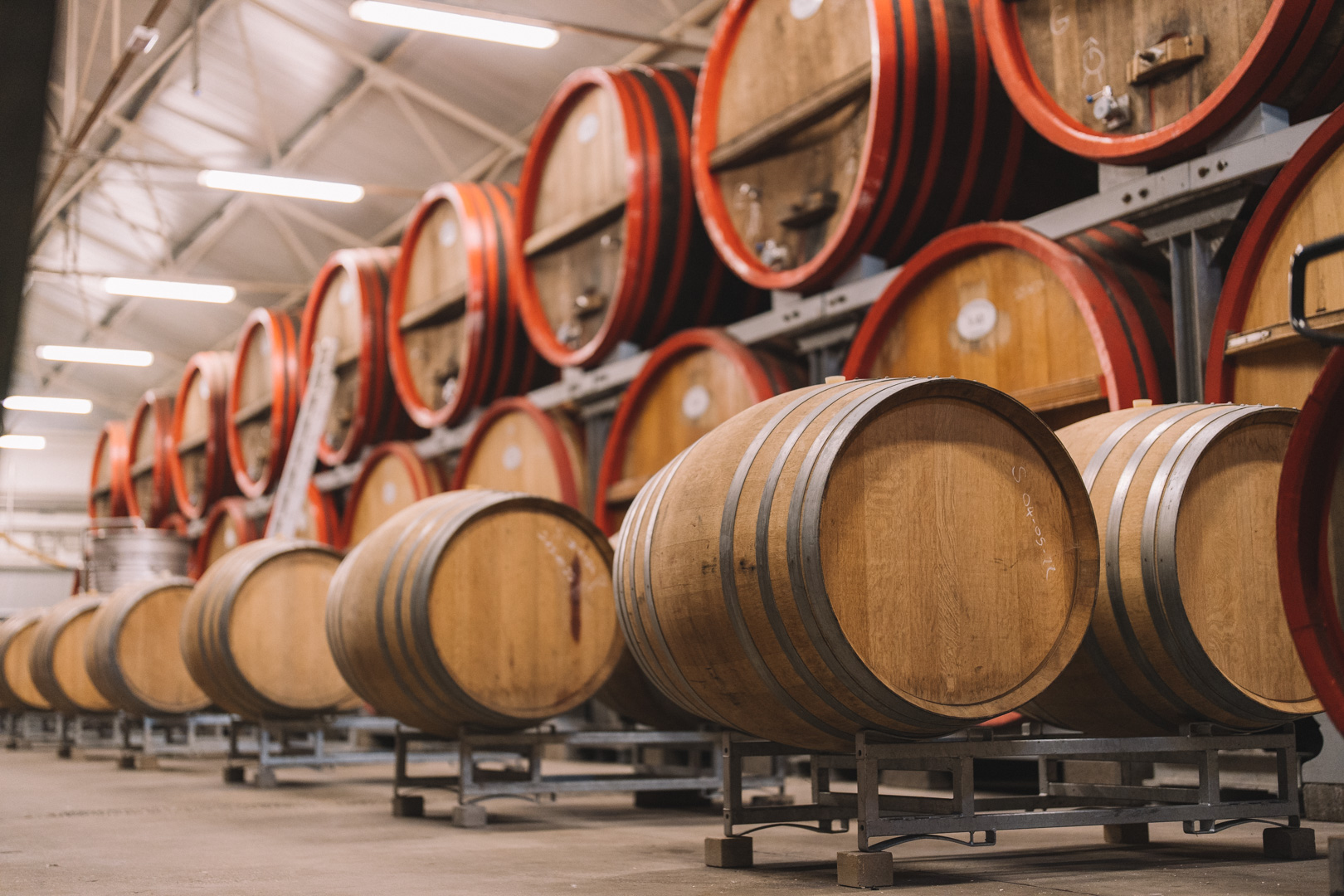
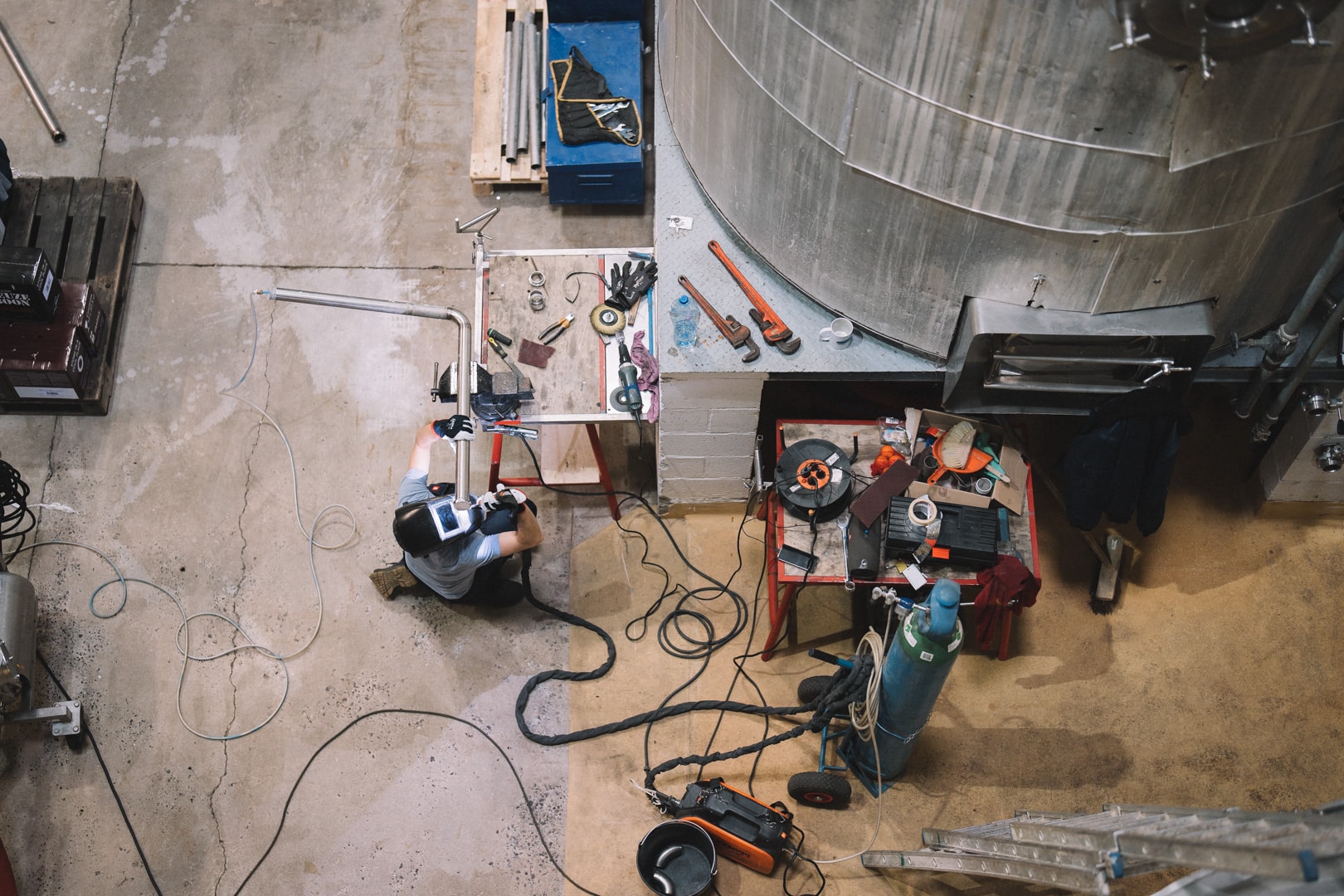
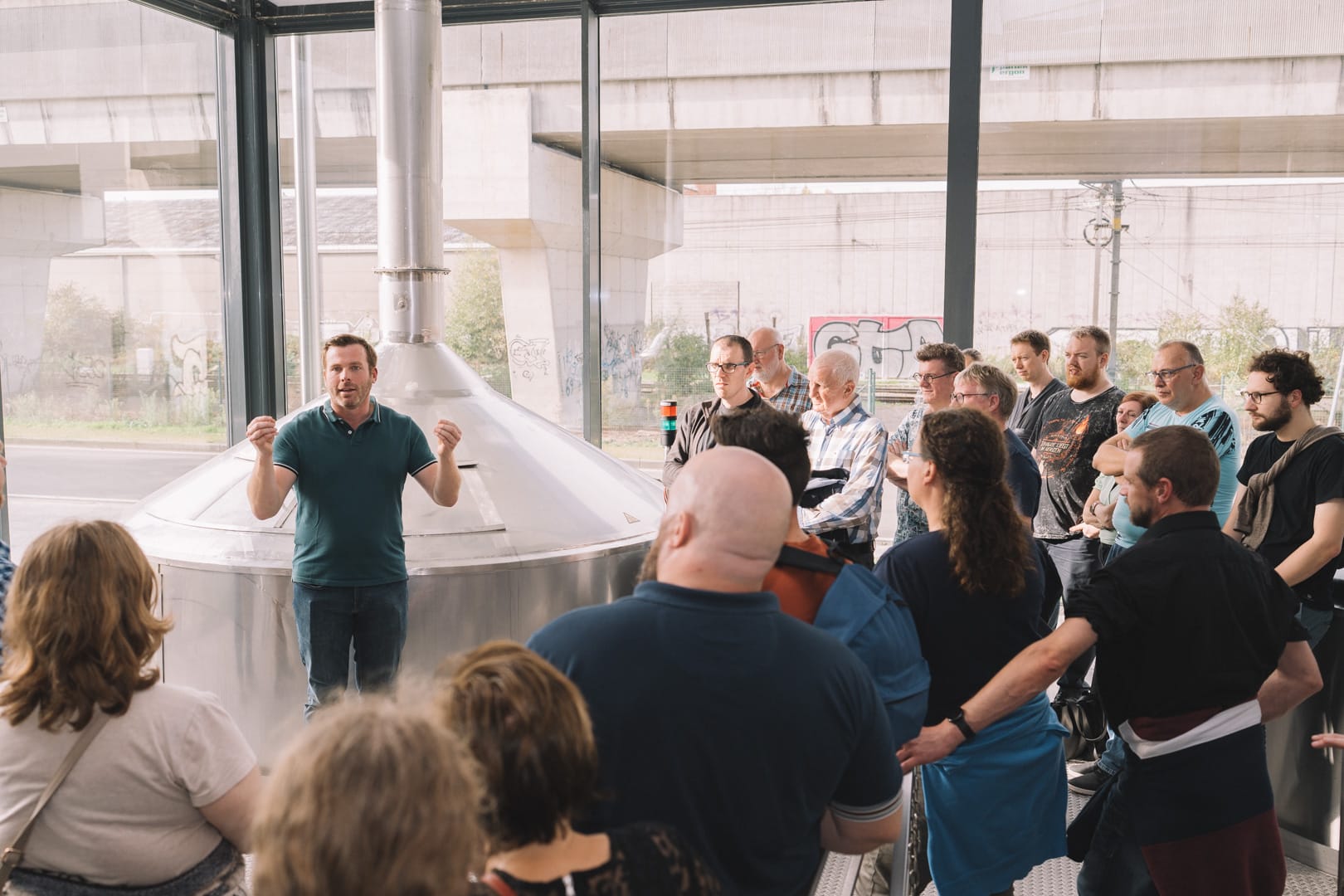
As the brewery’s production continued to expand, so did its need for a new, completely modernised brewhouse. By the end of the 2010s, it was selling more than what it could brew, and couldn’t make new beer fast enough to replenish its depleting Lambic stocks. In 2012, Boon commissioned a new brewhouse, designed and built with both functionality and sustainability in mind; it produced its first batch of wort in March 2013.
Today, Brouwerij Boon can make as much beer in a single day as it once did in a year, and it can do so while recapturing 70% of its energy during the brewing process. Given Lambic’s short brewing season—which typically begins in October and extends roughly until Easter—the ability to efficiently produce small oceans of wort both for itself and for blenders like Hanssens, Oud Beersel, and Tilquin is imperative.
VIII.
Succession
Although Frank Boon officially retired in 2021, he remains a regular presence at the brewery, there to answer questions, to assist with blending, to repair foeders, to greet visitors. Every Thursday, he leads tastings through 12 Lambic samples, working week by week through the brewery’s stock. “He’s retired, but his experience will never retire,” says Jos.
For a man who has built a business on such a singular, precise vision, he seems to have few qualms about passing on leadership and ownership to his sons. It helps that they have undergone a long—perhaps lifelong—apprenticeship.
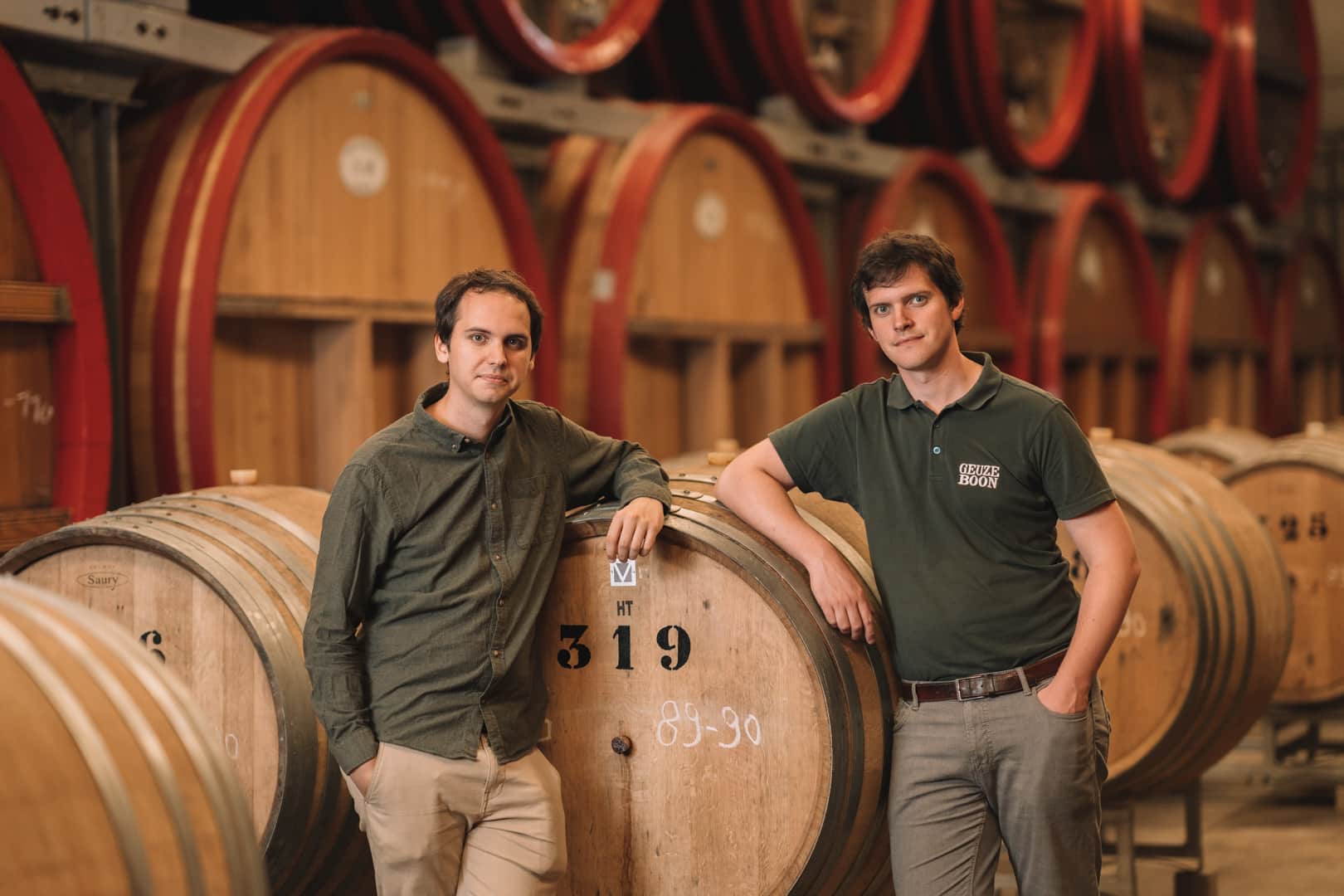
Jos Boon formally began his employment at the brewery in September 2012, commencing what he and his father agreed would be a 10-year period of training, although his work started decades earlier. “For me it was meant to be, let’s say,” Jos says. “I was already interested since I am four or five years old, I think. Of course we lived near the brewery, I saw the activity from the brewery, my father took me on the weekends and showed me what they were doing. So for me it was something that was normal to get into. From the moment I could help, I could work a bit, you could find me all the time in the brewery.”
If Jos felt destined to work at the brewery, then Karel Boon shied away from that seeming inevitability. In high school, he had a successful YouTube channel with a friend reviewing computer hardware, and thought about going into IT. “My father seemed like a very stern and serious person. And for me, beer was about being very serious and stern,” he says.
It wasn’t until Karel began going to beer festivals—meeting people who were interested in the brewery’s heritage, who asked questions that he had never thought to ask himself—that he began to come around to the idea. “And suddenly […] you see people in front of you who are enthusiastic about the beer, because of the beer. And they’re saying, ‘Yeah, your dad is a legend, man.’ Or come over to explain that, ‘What you guys are doing, it’s actually quite rare and special.’ And I think I got more appreciation for the brewery that way.”
His father never demanded that Karel enter into the family business, but he would drop hints about his wishes. One morning at the family breakfast table, while Frank Boon was discussing construction work at the brewery, he mused aloud about whether Karel might one day work there. “At that point I just said, ‘Yeah, I wanna do this, I wanna work in the brewery later,’” Karel says. “And [my dad] was like, ‘Okay, that’s good news.’ And he took a sip of his coffee and started reading his newspaper.”
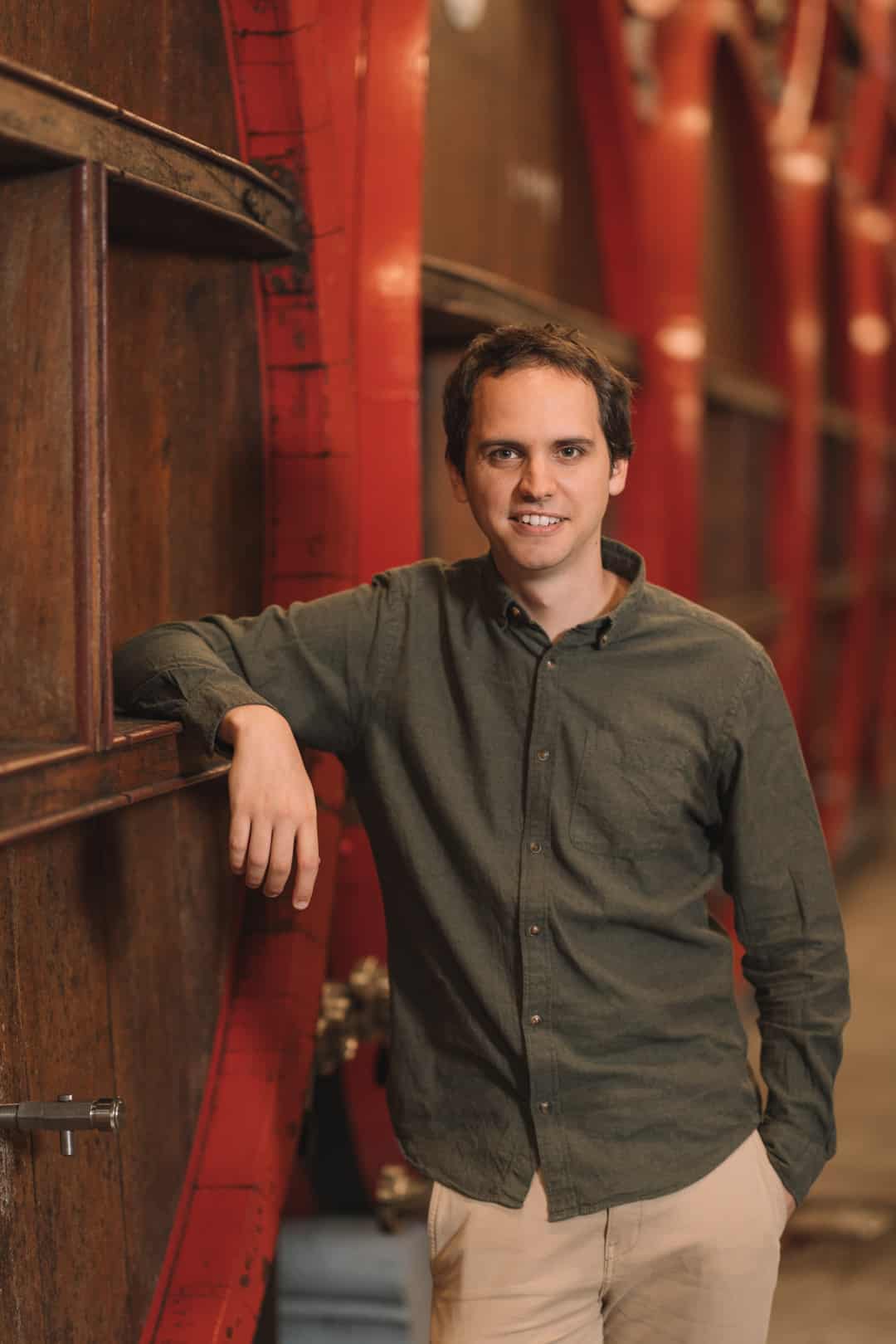
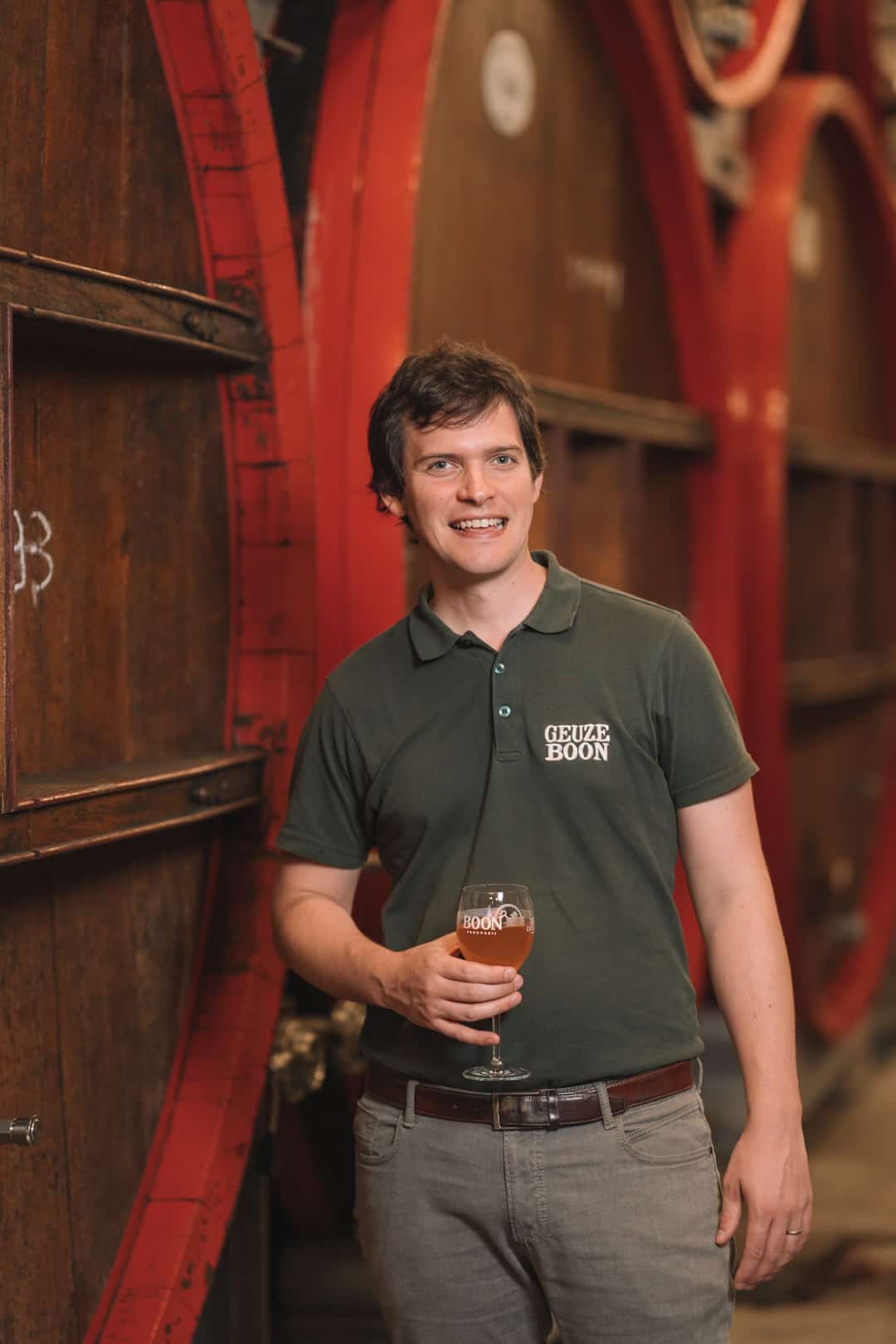

To be a successor is to inhabit the past and the future simultaneously, to balance the weight of precedent with the hunger for individualization. To merely preserve what already exists in amber would be a failure; so would squandering legacy for novelty’s sake. Succession is a burden and creative constraint, and not only because it means working with your family for the rest of your life.
“It is easy to choose a job; you can choose your boss. But working with family is not always easy,” says Lindemans, who started working at his family brewery in the early 1990s. “You don’t choose your father or uncle—they are there, and you have to find a way through. And you need a lot of patience. I am sure that Karel and Jos are probably in the same situation […] but I have the impression that Frank is more progressive, less conservative, than my father and uncle in that time.”
In 2021, Jos and Karel Boon bought back Jan Toye’s shares, and now own 100% of the brewery. Since taking over the business, the brothers’ initiatives have ranged from installing solar panels and opening the brewery’s taproom and visitor center to updating the branding and reintroducing Schaarbeekse cherries, the variety historically used to make Kriek. While Karel mentions experiments that Brouwerij Boon could pursue in the future—lower-alcohol beers, Lambics made with different fruits, blends of top-fermented beer and Lambic—for now, he and Jos seem more concerned with protecting the brewery’s values (and continuing to produce beers like Mariage Parfait) than charting a radical new course.
“We have a lot of ideas for beer […] with Lambic beer there’s so much that’s so possible. The question is always, ‘Is it relevant?’” he says. “There’s so many things you can do with beer, there’s so many breweries already doing so many things with beer today. But it has to be relevant. If we do something that’s also something different from our father, it can’t just be, ‘What’s interesting, what’s next?’”
IX.
“Real Customers”
In the centre of Lembeek—in the brewery that Frank Boon founded, which is no longer Frank Boon’s brewery—there is a great stillness. It is the day before vacation, and its vast halls have emptied of workers. Our steps clang madly as we walk into the empty coolship. Outside, the wind makes the yellow wildflowers dance, a feast for pollinators. The river reveals nothing. The foeders creak conspiratorially.

As we cross the Zenne, Frank Boon reflects on the beliefs that have carried him through his long career. That there is a difference between having a quality plan in place and being the kind of “black-box brewer” who only decides what their beers are after they’re made. (“Customers find this fascinating […] but it’s not creativity, it’s quality or not-quality by accident.”) That brewers can choose either to be “doctors or pagan curers.” That brewers who are led by their bookkeepers will save money at first, but in the long run will see their businesses face collapse. That you should always be wary of brewers who are too active on social media, because it means they’re not spending as much time in their breweries as they should be.
Brouwerij Boon’s beers, widely distributed as they are, are still brewed first and foremost for local customers. Before the COVID-19 pandemic, 70% of the brewery’s beer was distributed in Belgium; today, it’s more like 65%, but the Belgian market—the Pajottenland market—is still its primary audience.
“The most important thing for me to see, at the end of the day, did I serve my customer?” Boon says. “When I see there are guys, we see them every two or three weeks [bringing back crates], these are our real customers. It’s not the guy who just buys one bottle, tastes it, and puts a mark on RateBeer. It’s okay for me, but it’s not representative for the audience.”
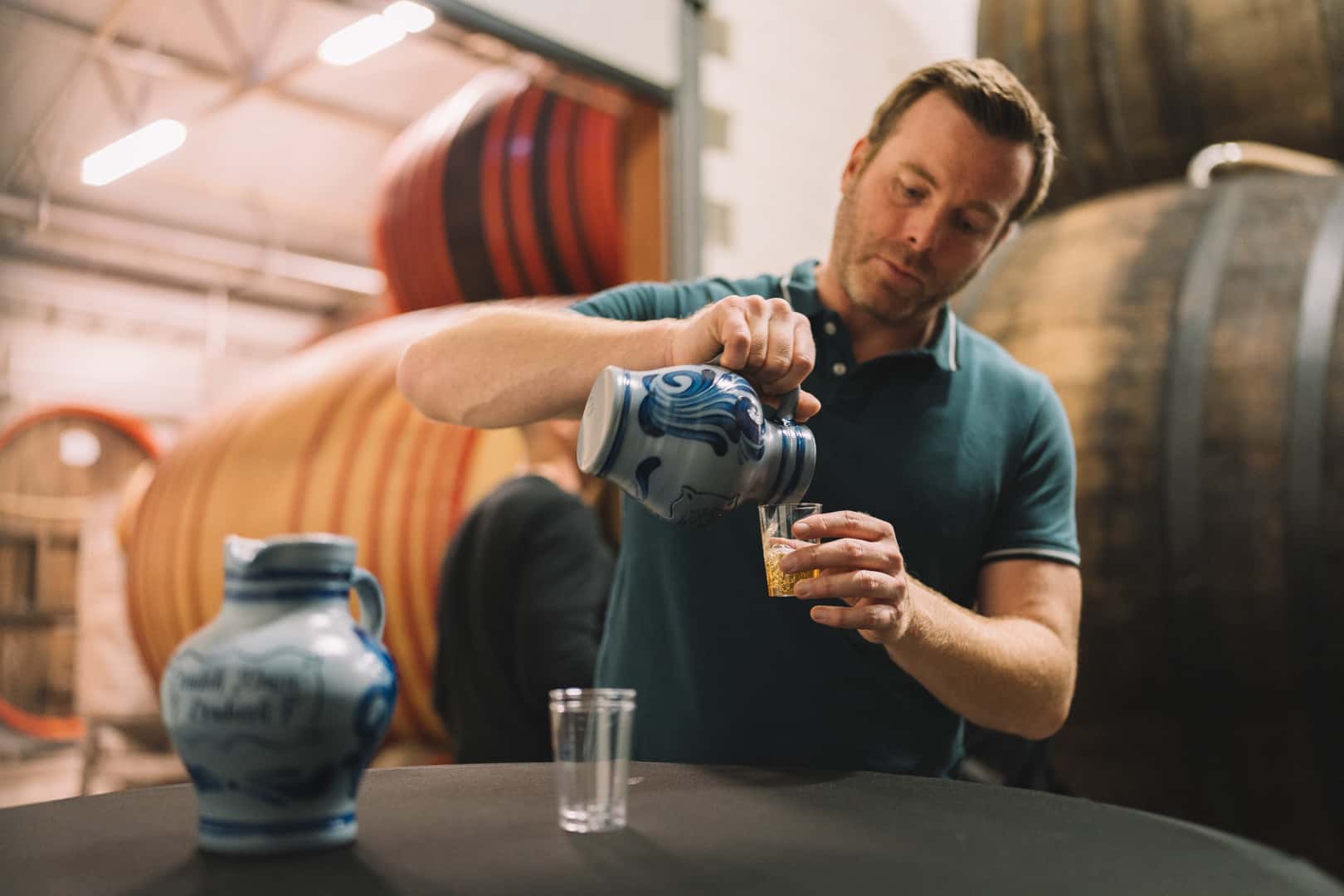
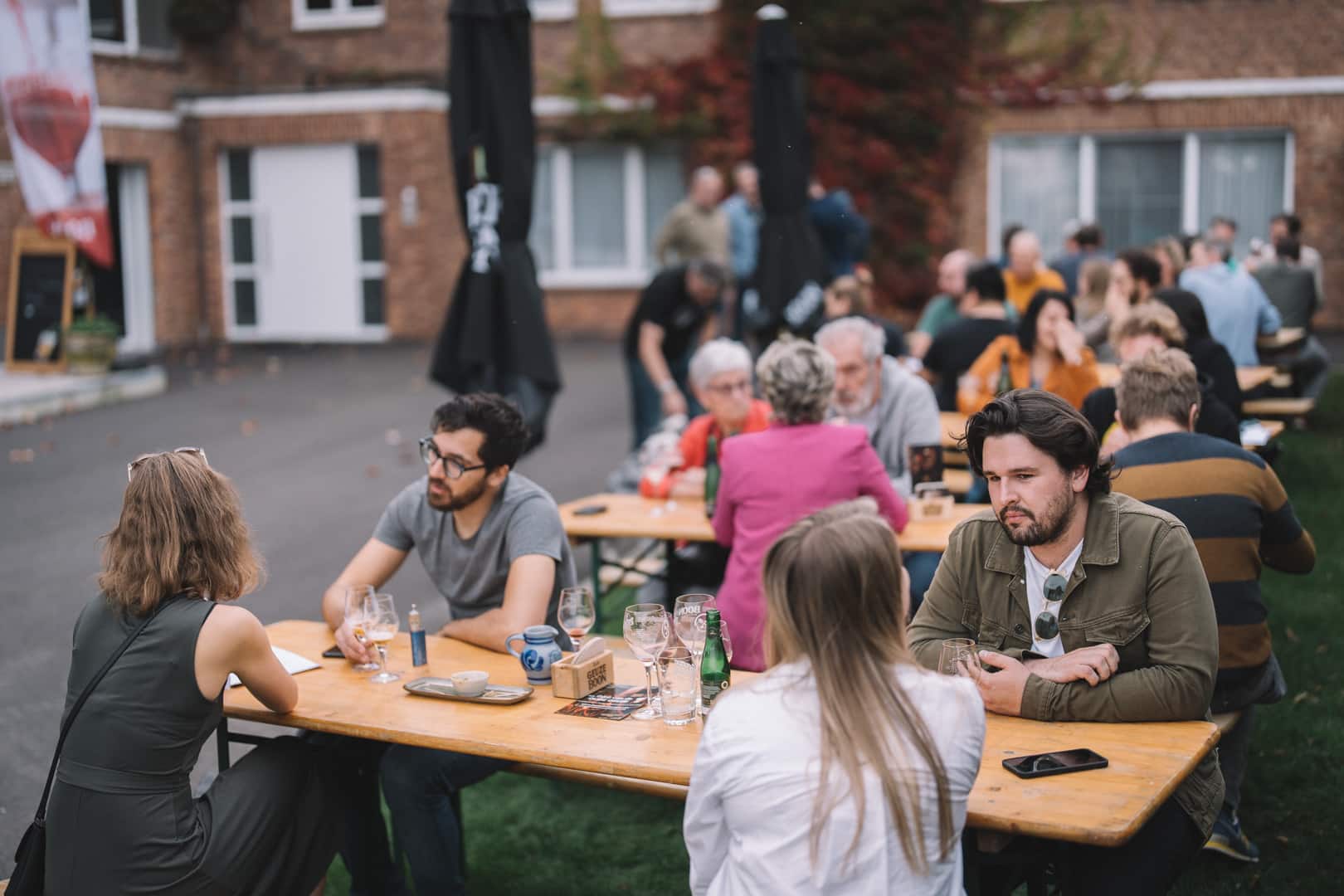

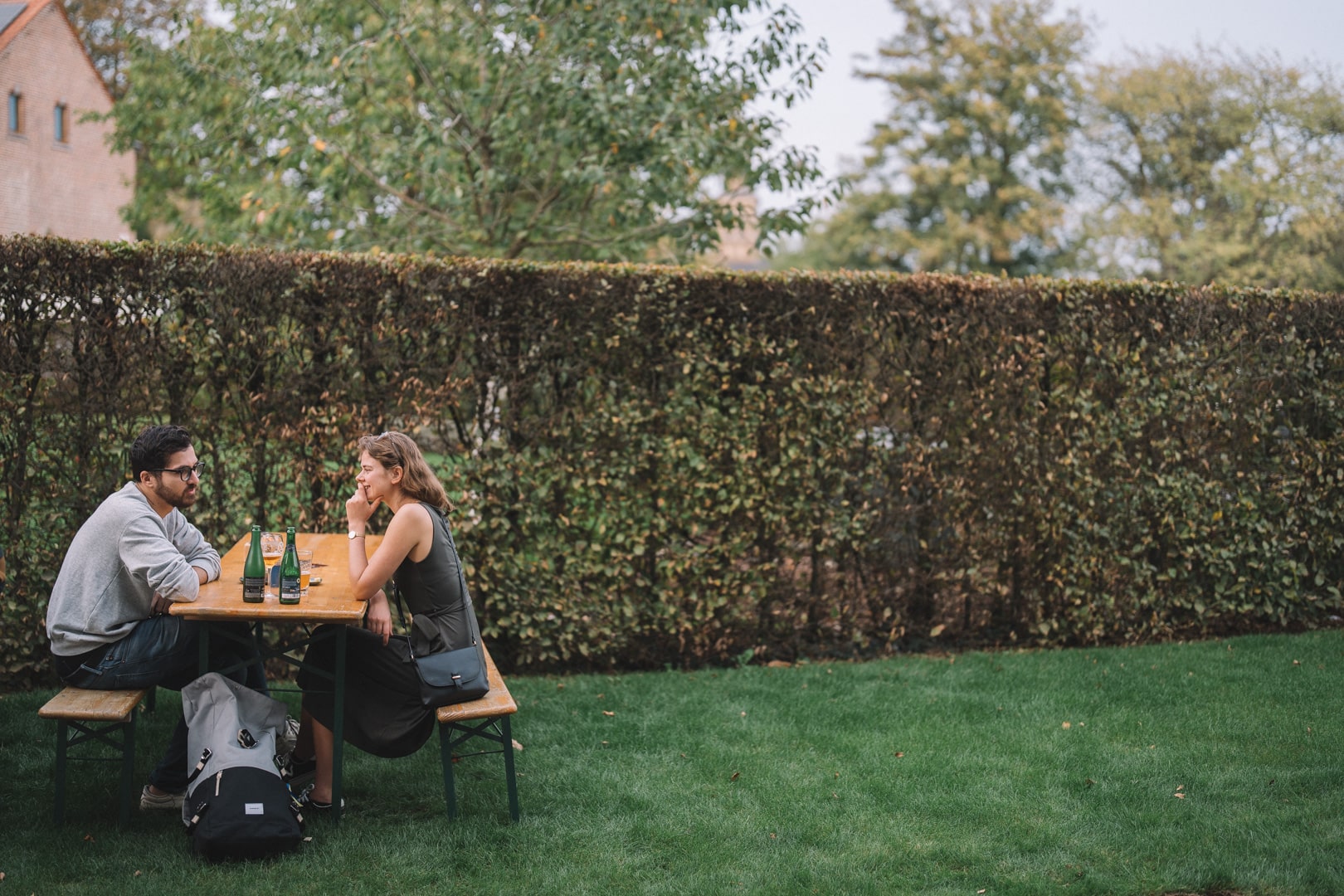
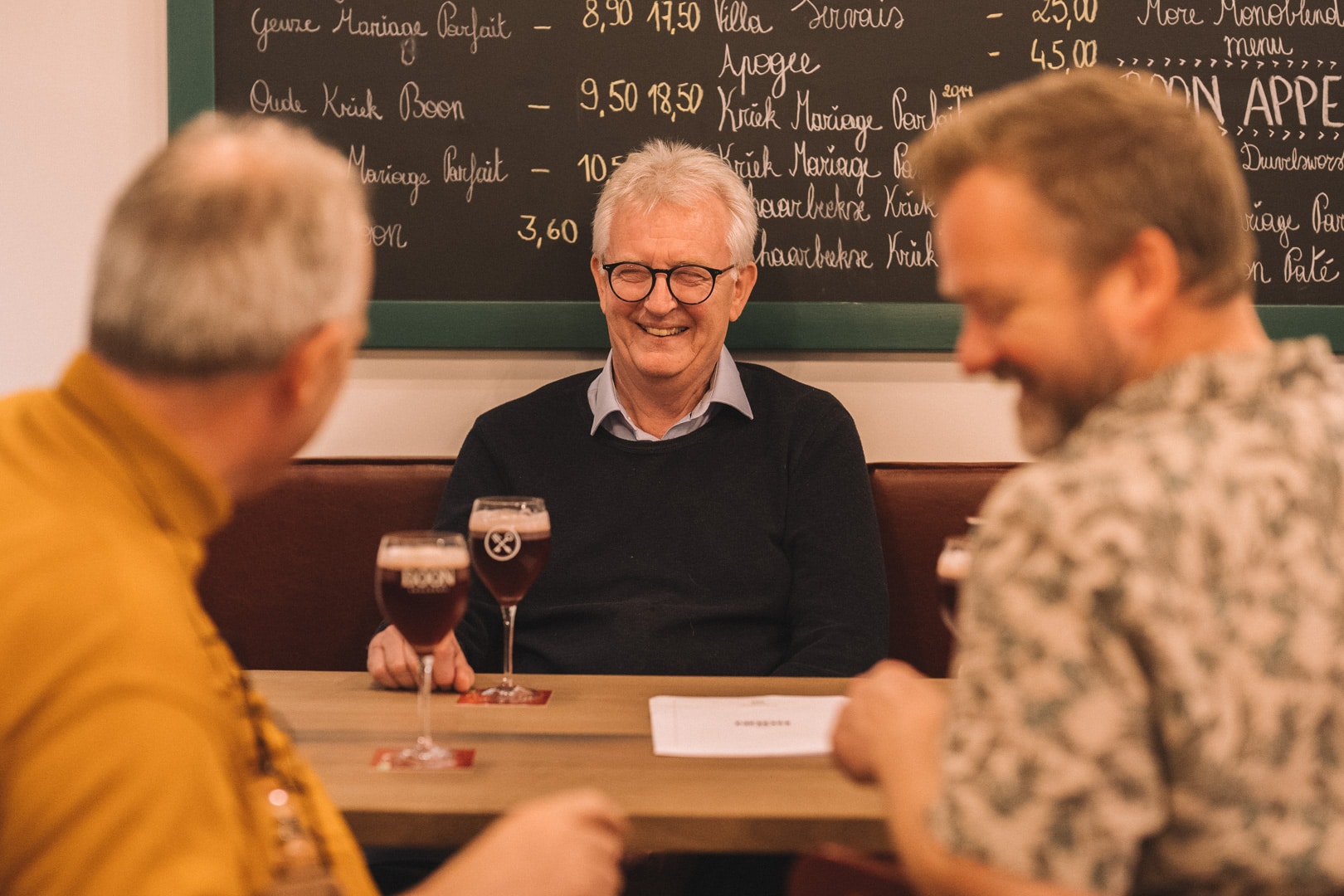
That audience is certainly engaged. Lembeek’s drinkers order bottles of VAT 31 and Oude Geuze and Oude Kriek to drink outside De Mustang as the workday ends. They stop to greet Karel as he walks into De Kring to order his own small bottle of Geuze. They seem both quietly proud of the brewery in the centre of their village and curious about anyone who would travel from overseas to see it; there have been more of them since the brewery opened its visitor centre and tasting room several years ago. For them, Brouwerij Boon is a local centre of gravity, but it is also just a fact of life.
“We’re the largest producer of traditional Geuze beers,” says Karel. “For us, this tradition is not only how you make it. It’s not only also how it tastes. But it’s the fact that people drink the beer. If you don’t have people drinking this beer, and certainly locally, then we lose part of the tradition.”
It’s not hard to imagine past generations of Lembeek residents gathered in these same haunts and sharing these beers, but if you compare today’s tableau with 50, 40, or even 30 years ago, the picture is strikingly different. When Frank Boon first entered the industry, it was difficult to find a good bottle of Lambic—and even if you did, there was no guarantee that the second one wouldn’t just taste like salad dressing. Breweries were making losses, or were forced to declare bankruptcy. The industry Boon entered was on its knees.
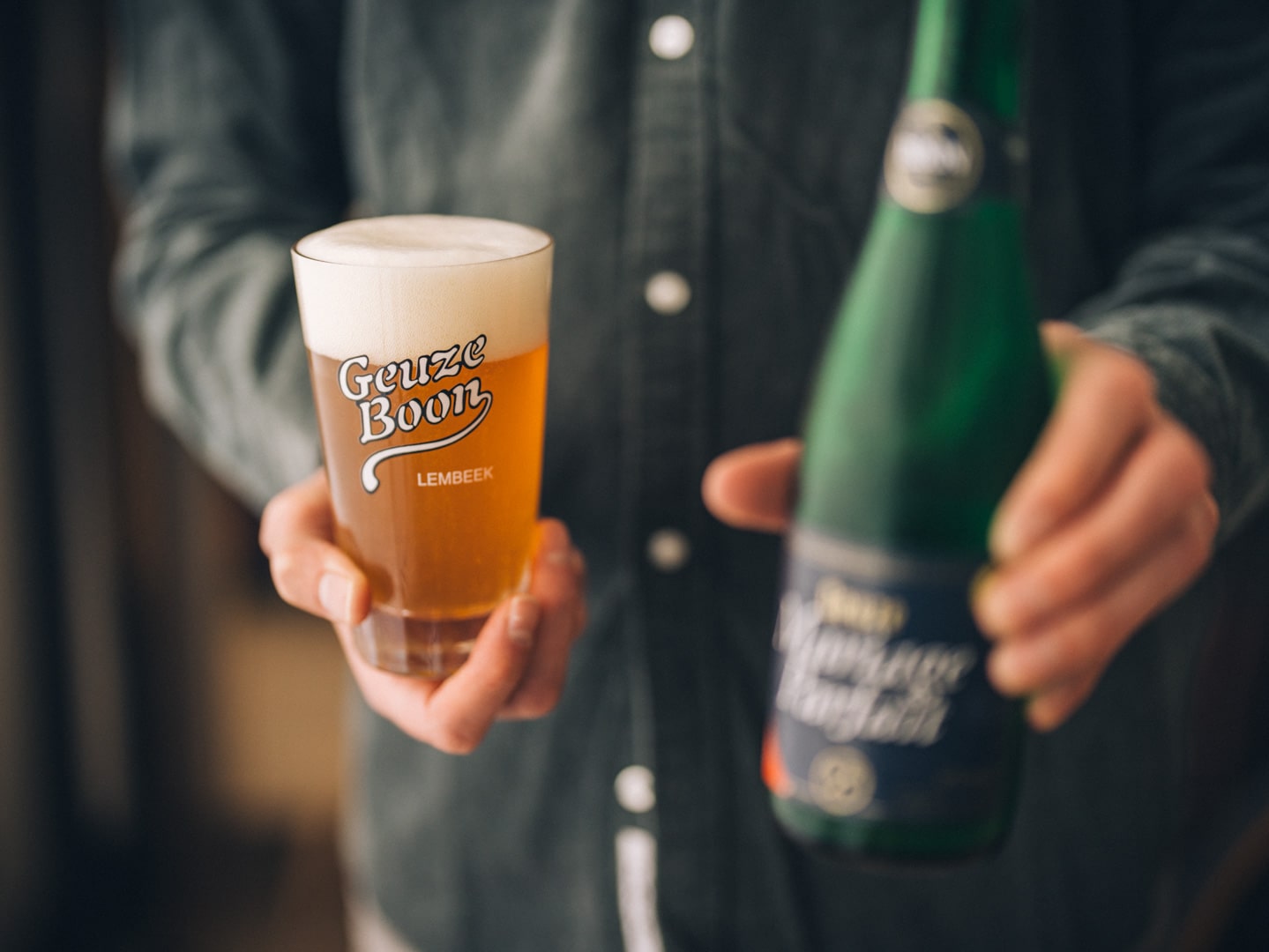
Maybe it wasn’t despite Lambic’s decline that Frank Boon succeeded, but because of it. From a certain vantage, ruin looks like a generative place: every void really a field of opportunity, every crack in the foundation a new source of light. For Boon, there was space and time to learn and grow, an existential cause worth striving for.
“That is what I thought when I bought De Vits: It’s my job not to find another way to make Lambic, but to understand these beers. I worked 50 years on it, and I’m still working,” says Boon. “The more you know about beer, the more you realise that there is so much that you don’t know yet. That’s an important one. And if today, Geuze Boon is the best-selling traditional Geuze in Belgium, it’s not by accident.”
*


